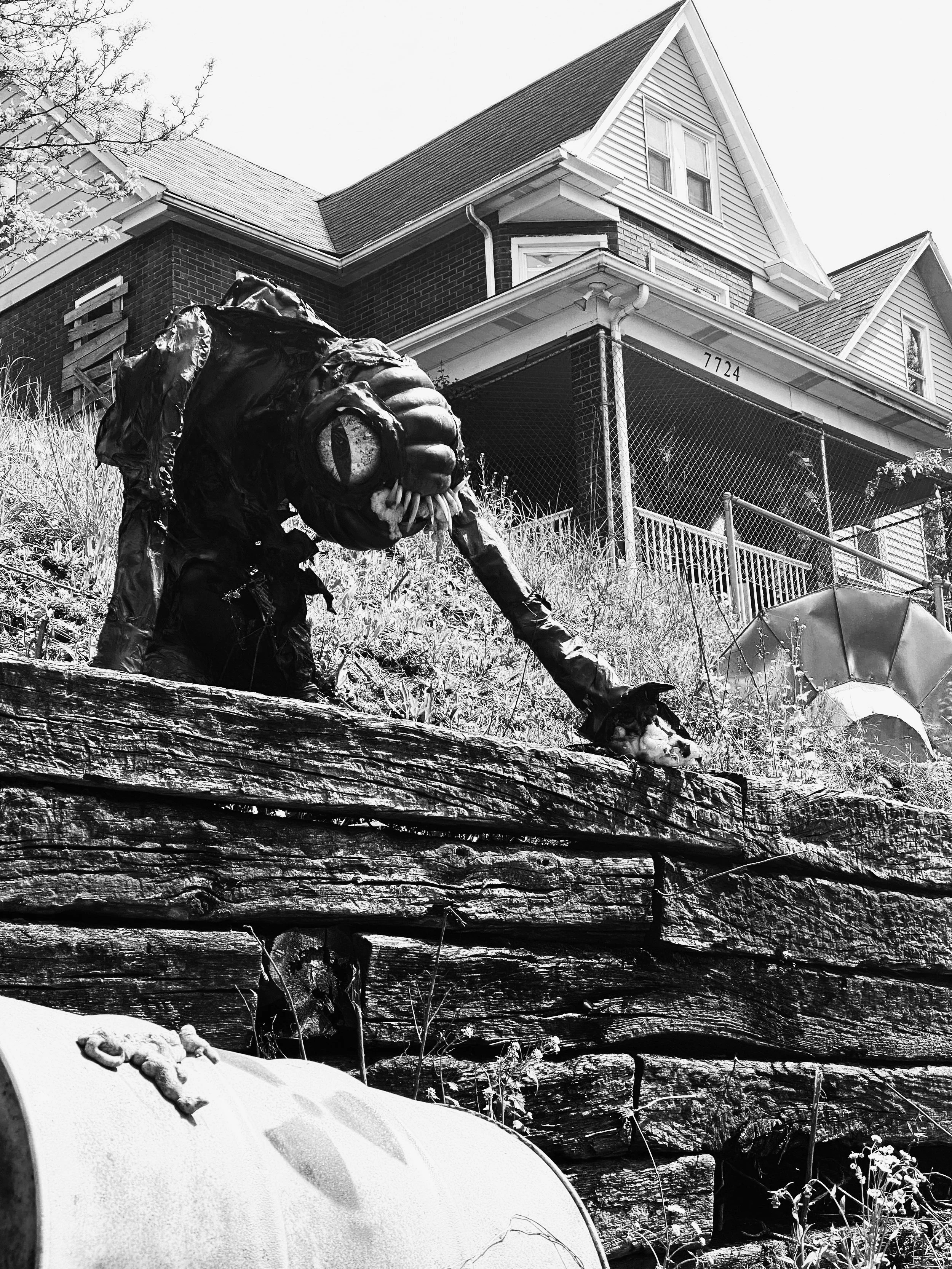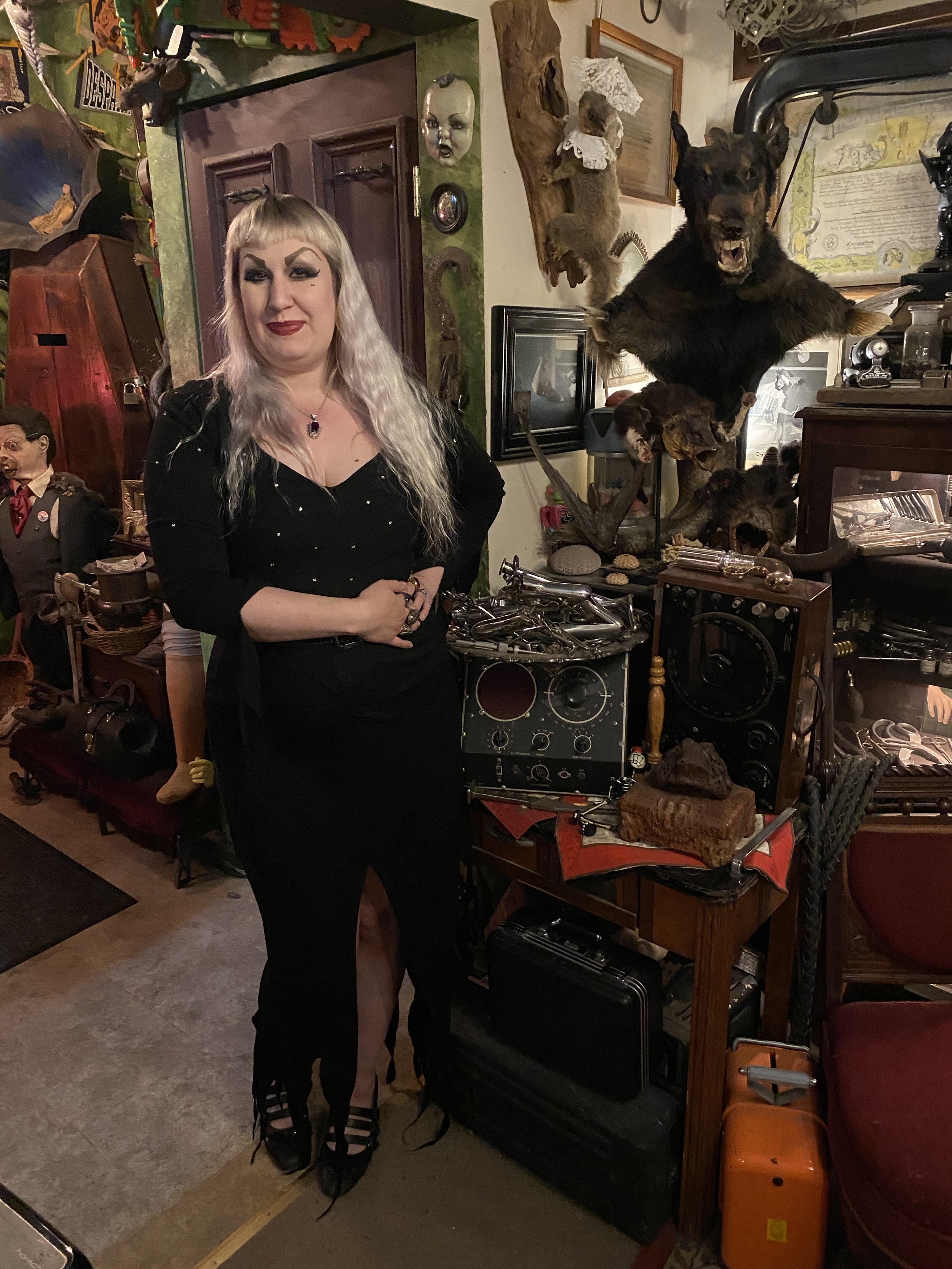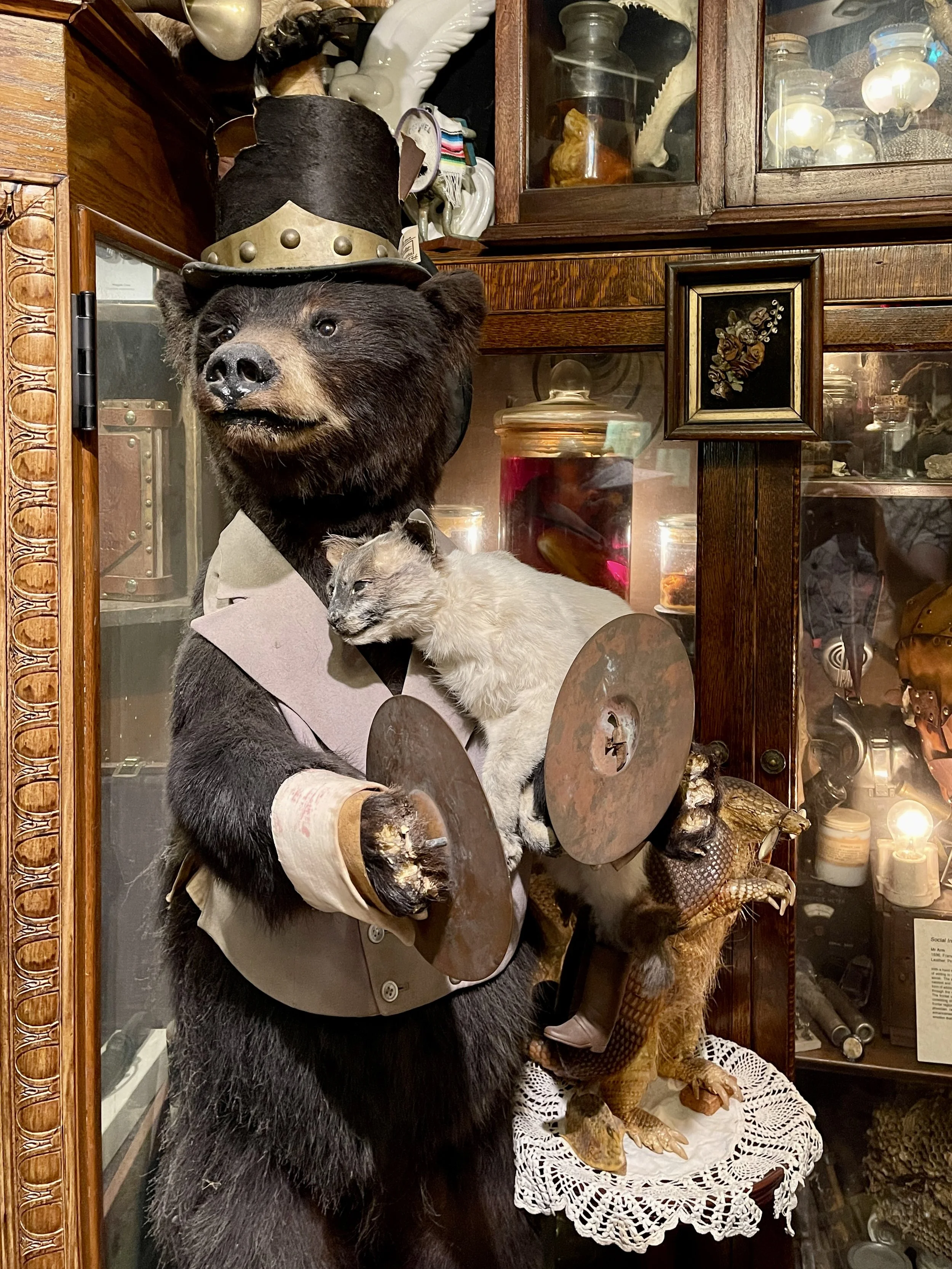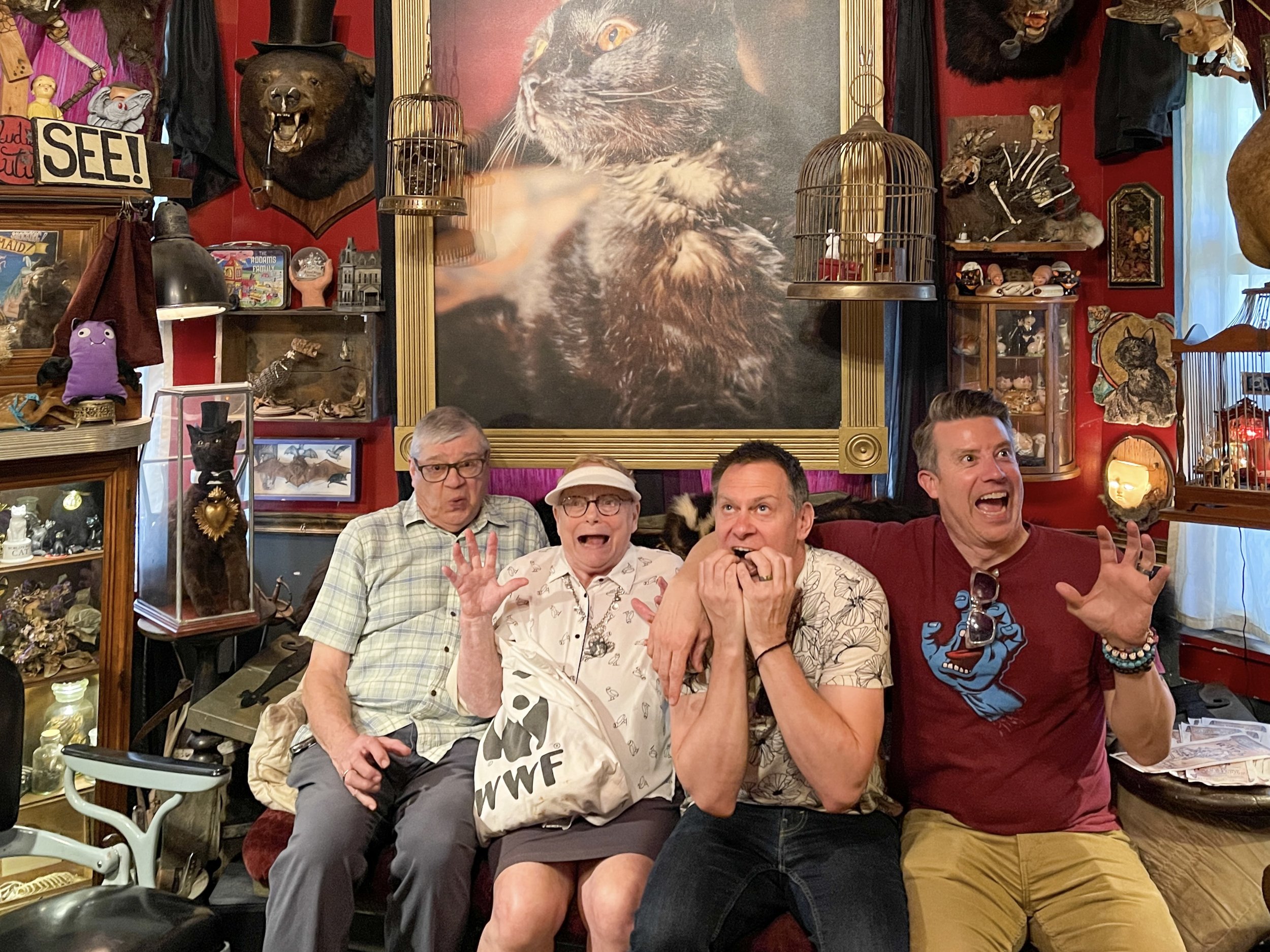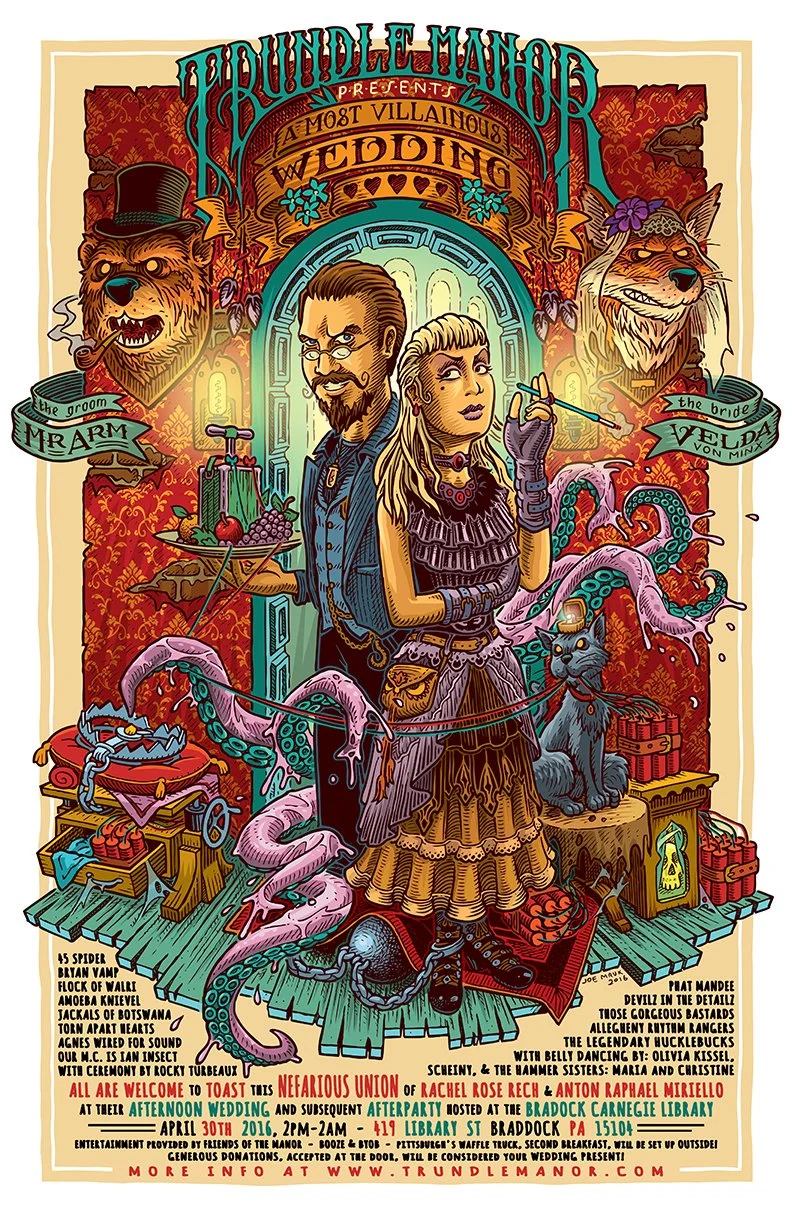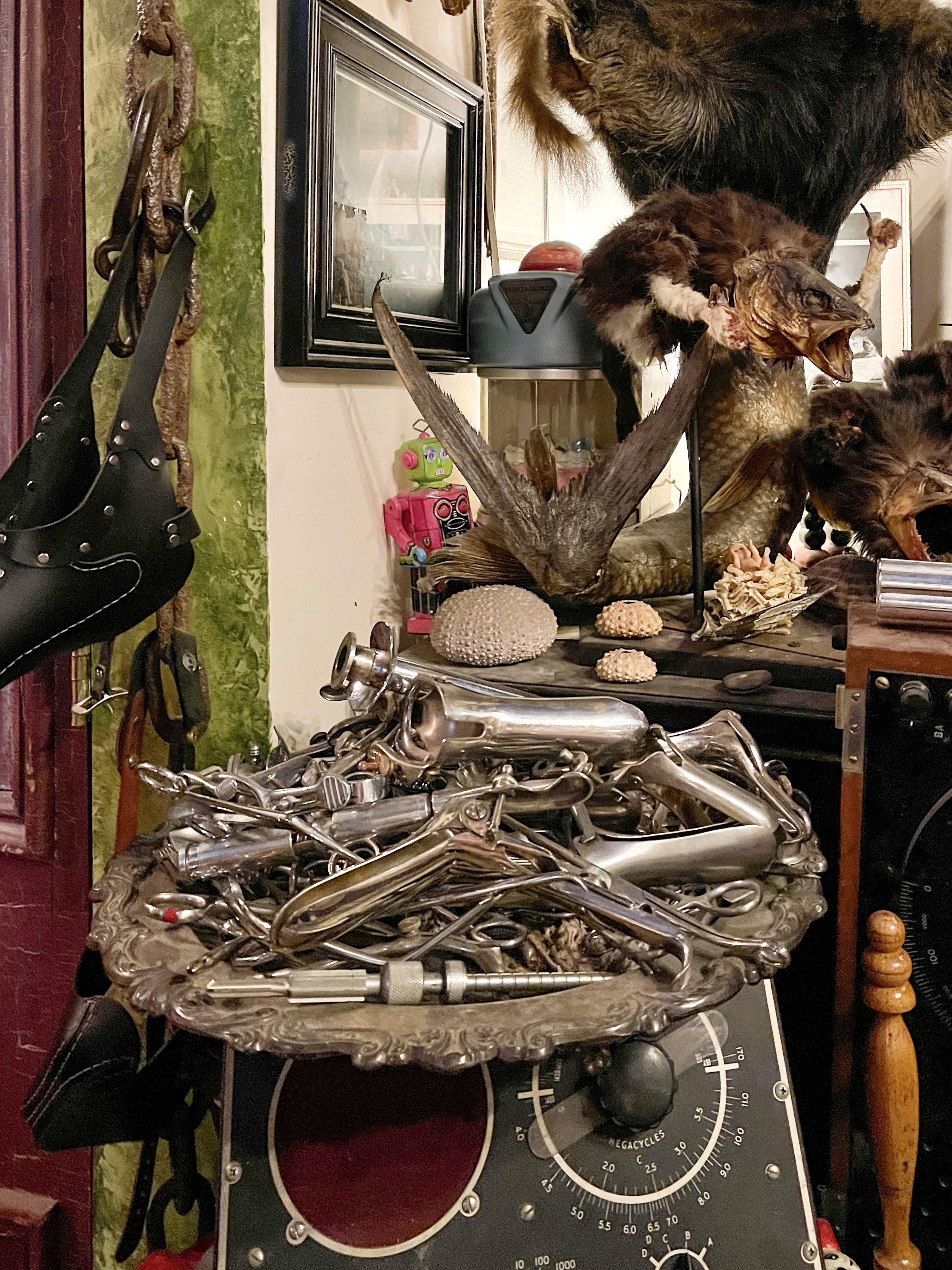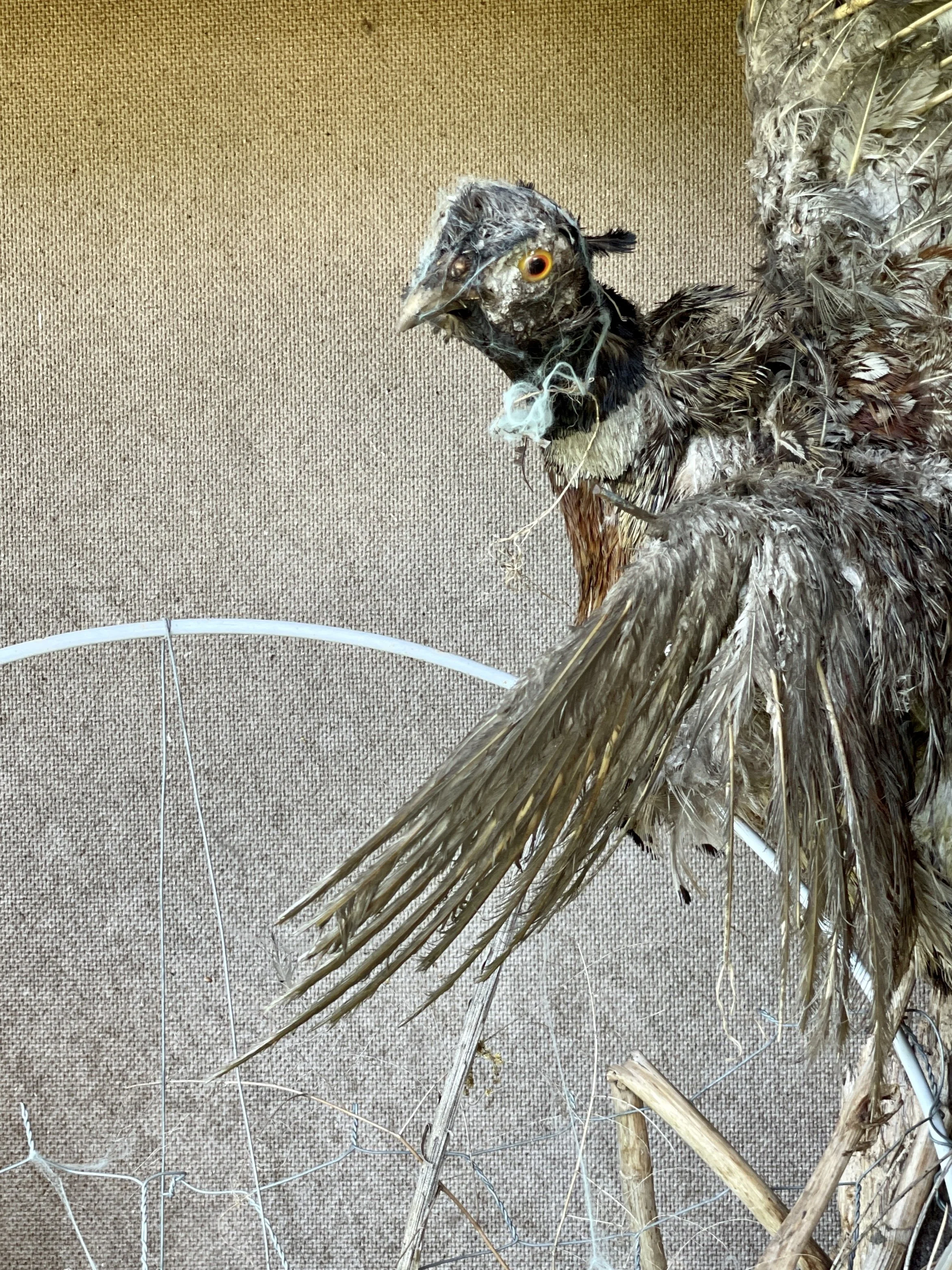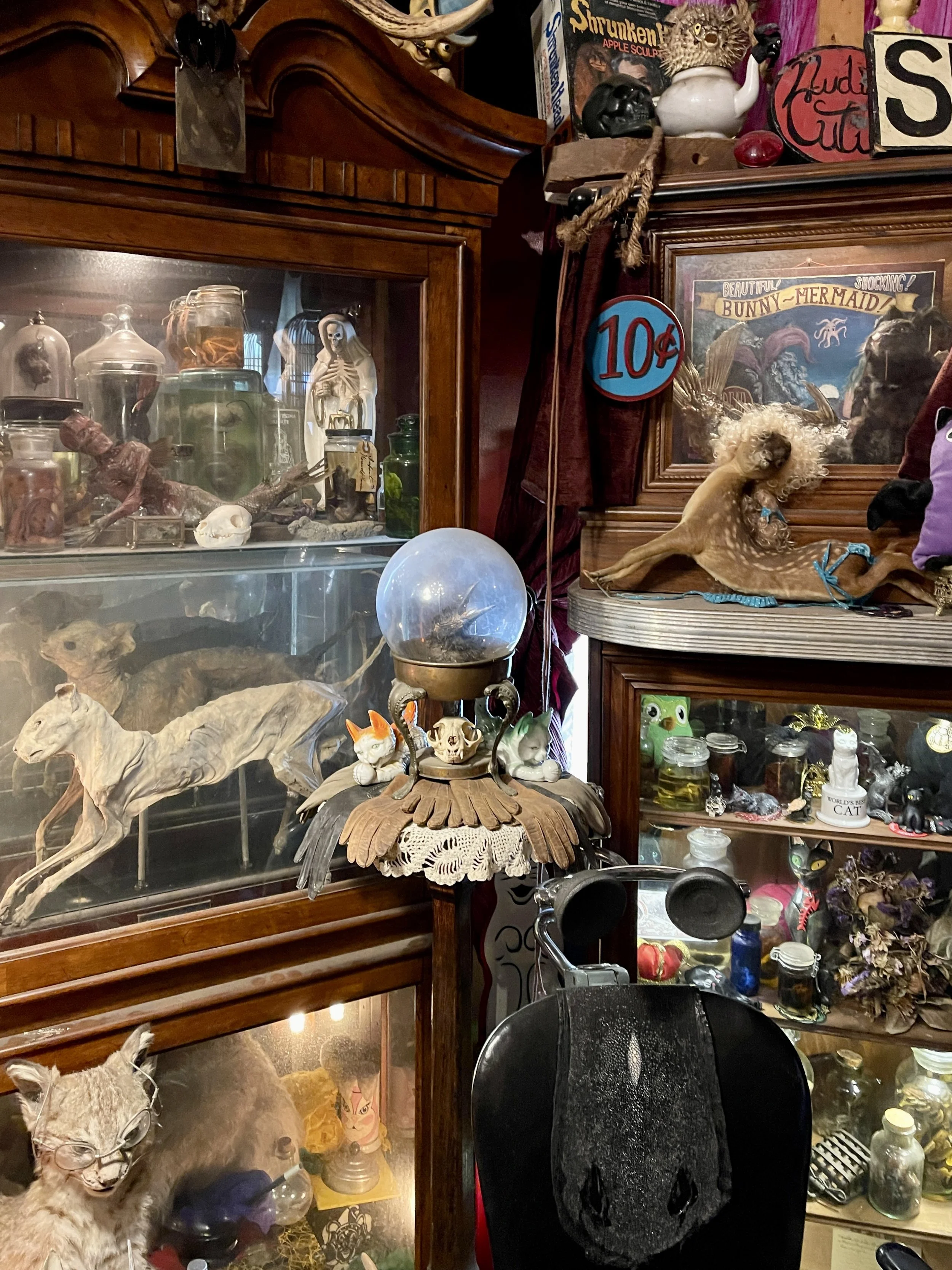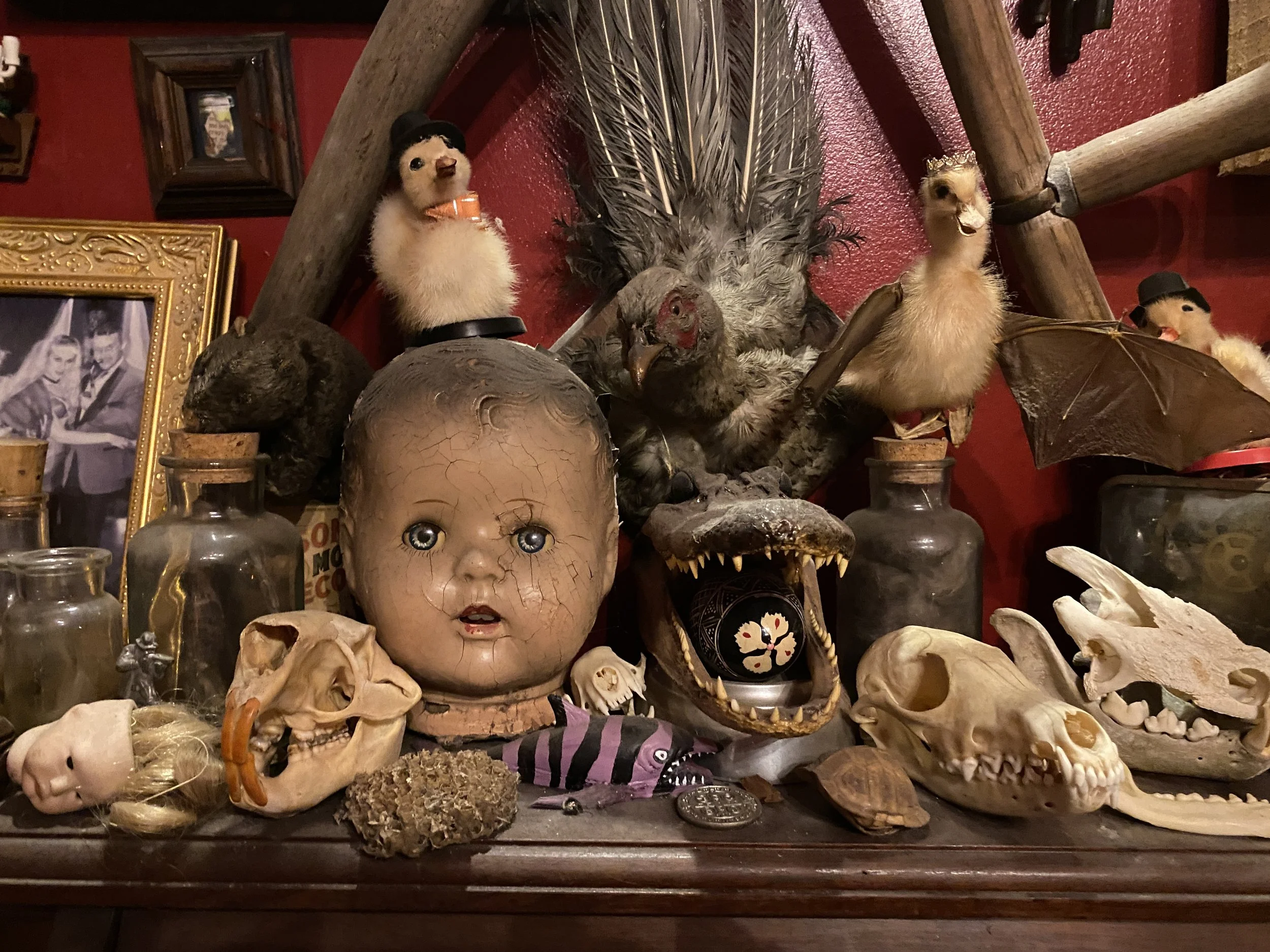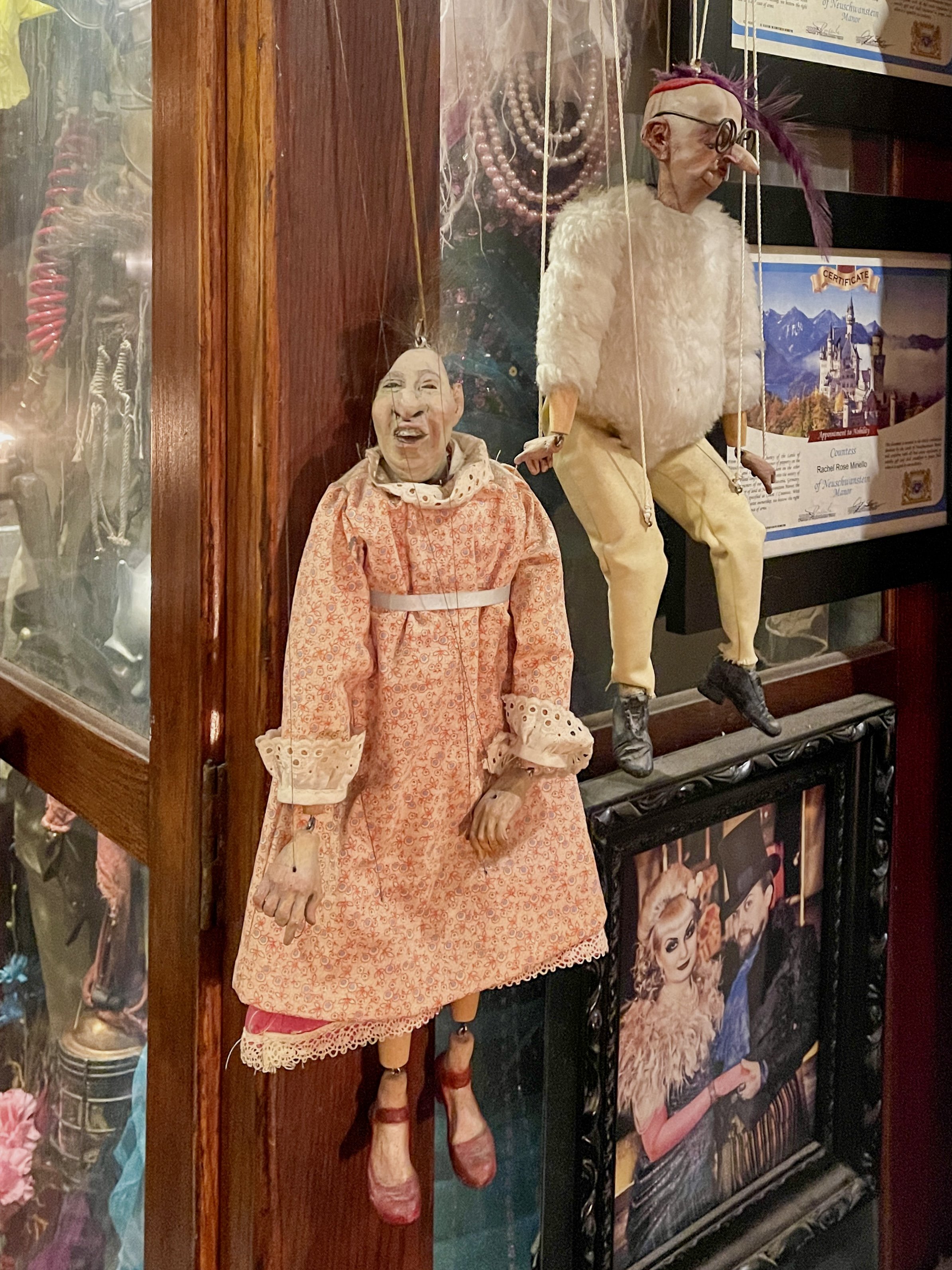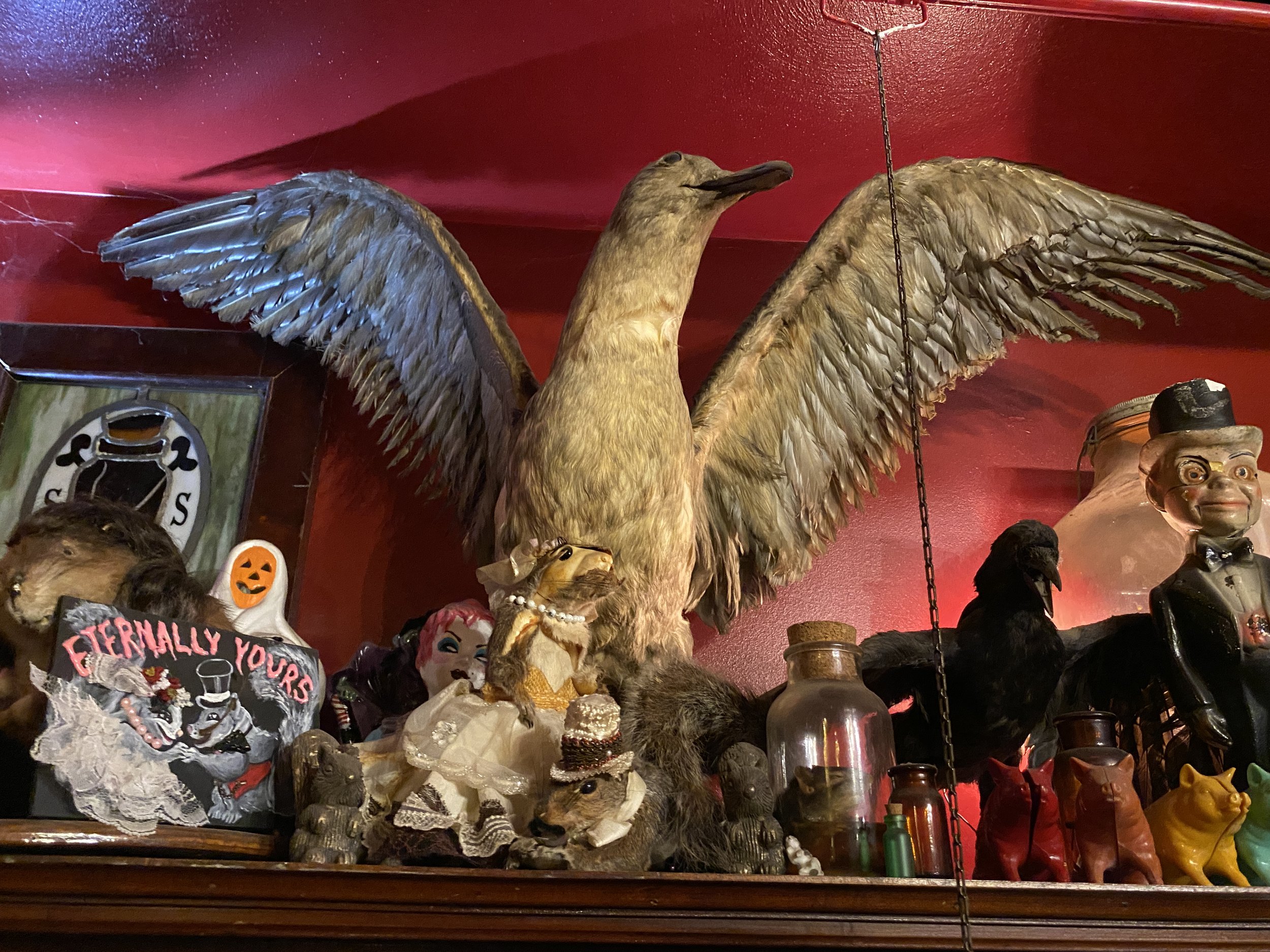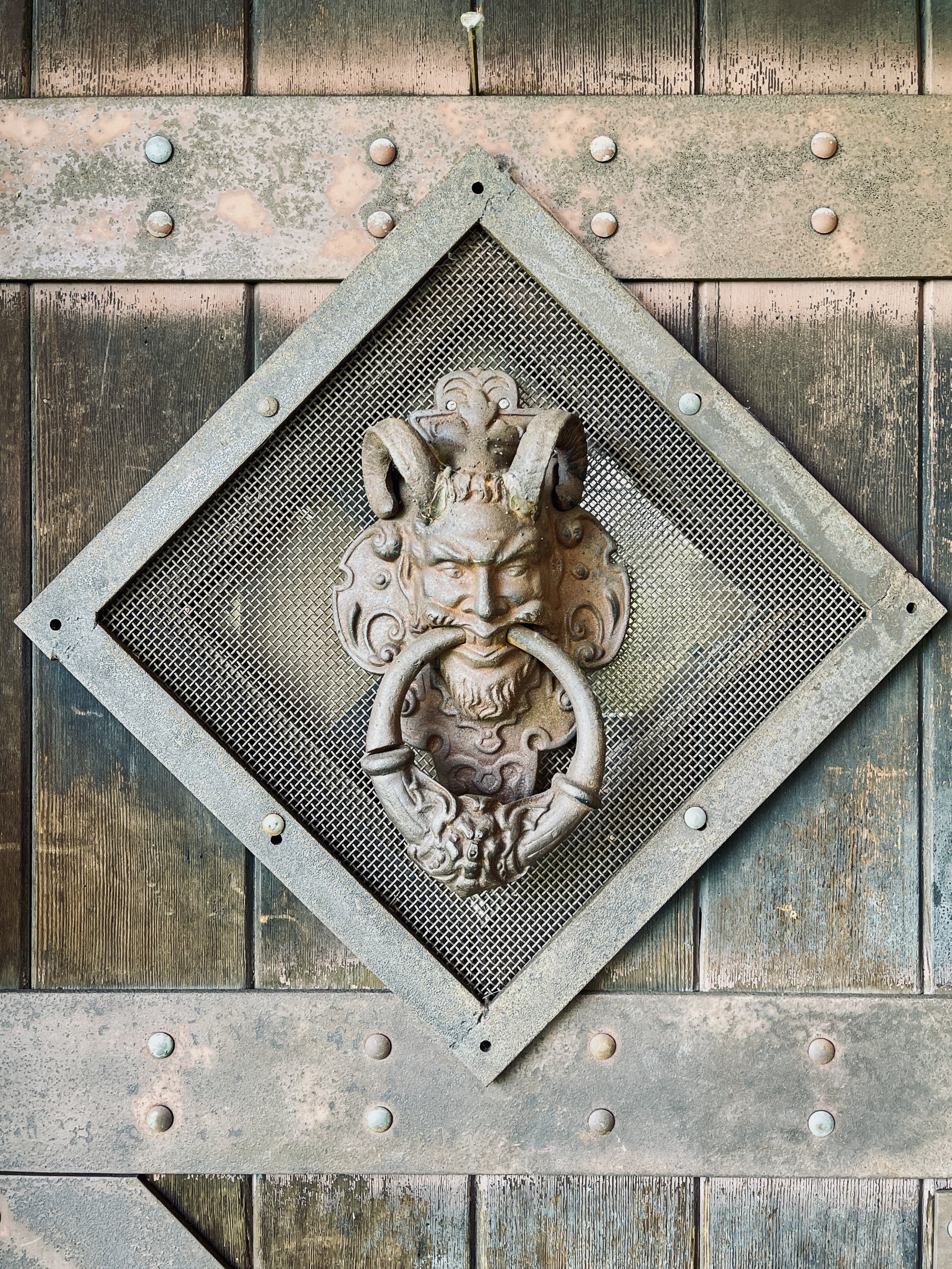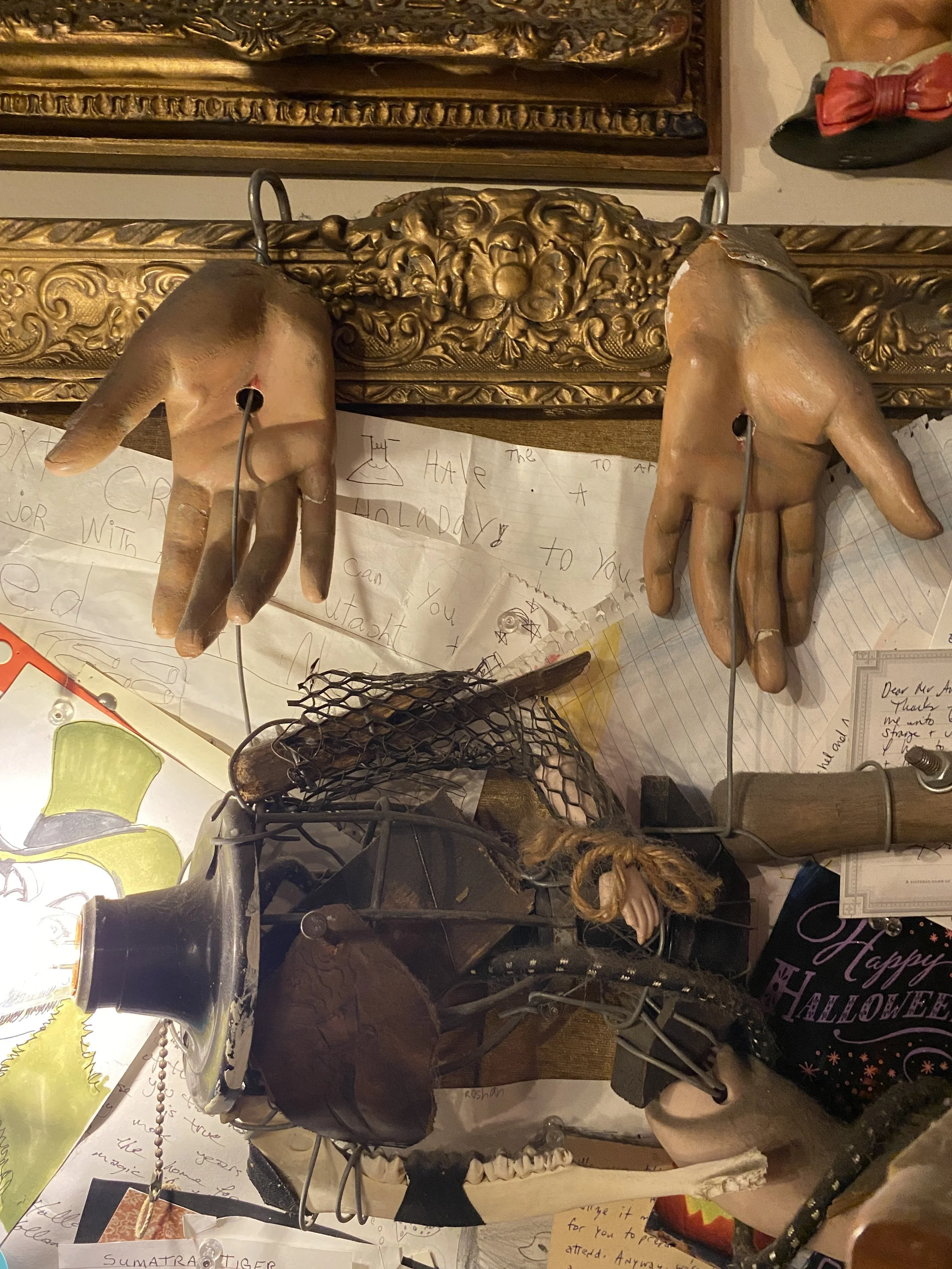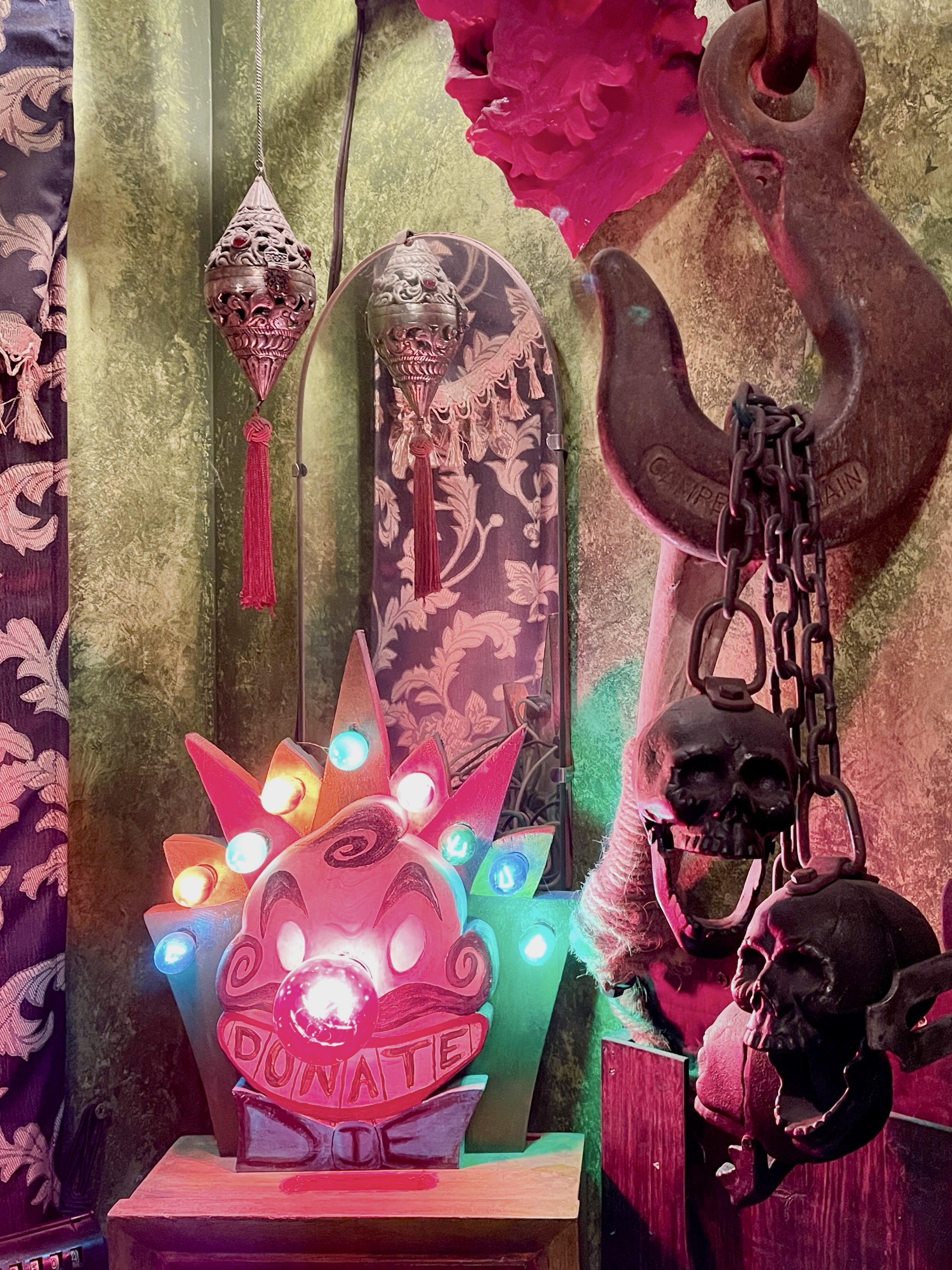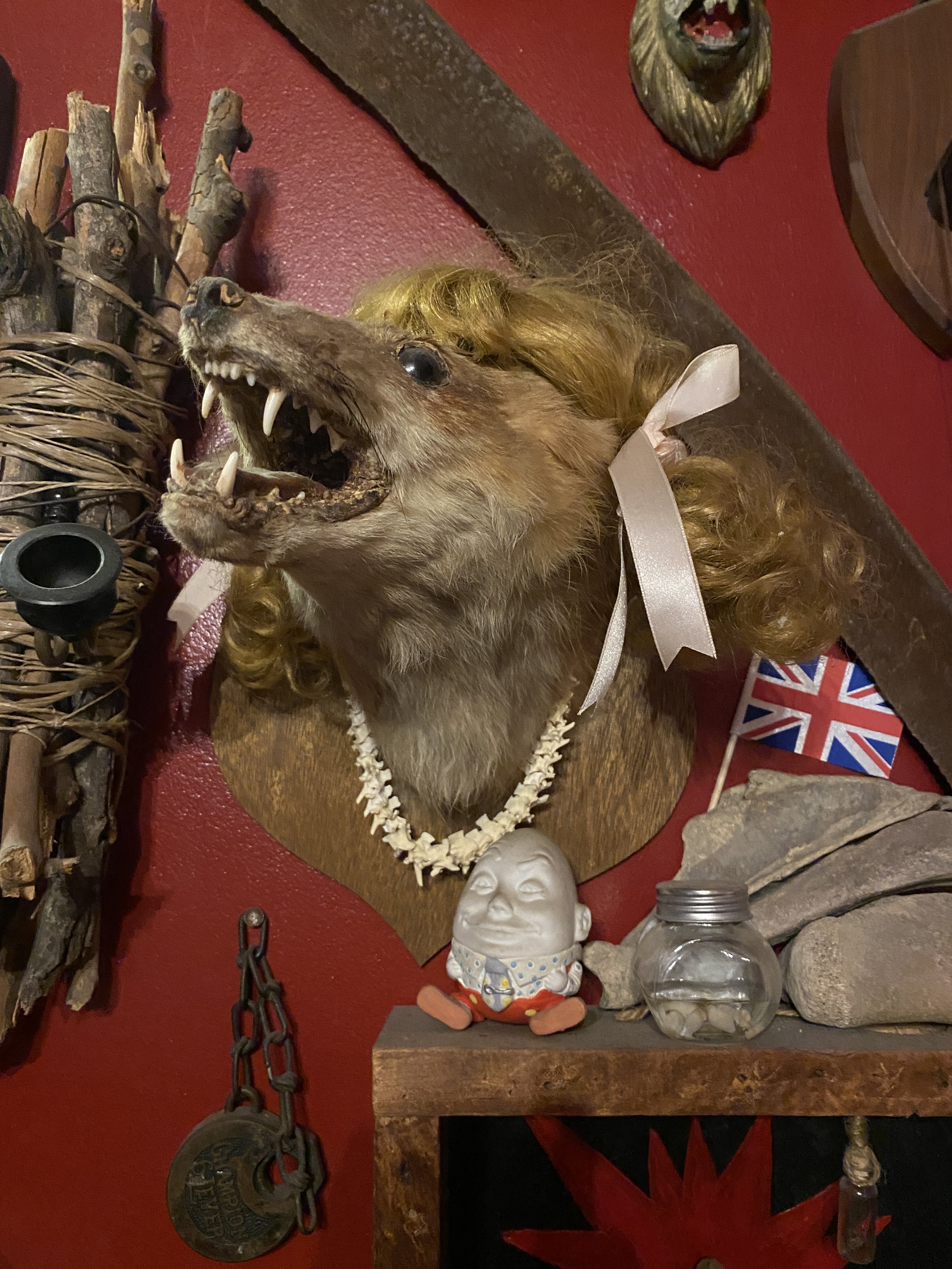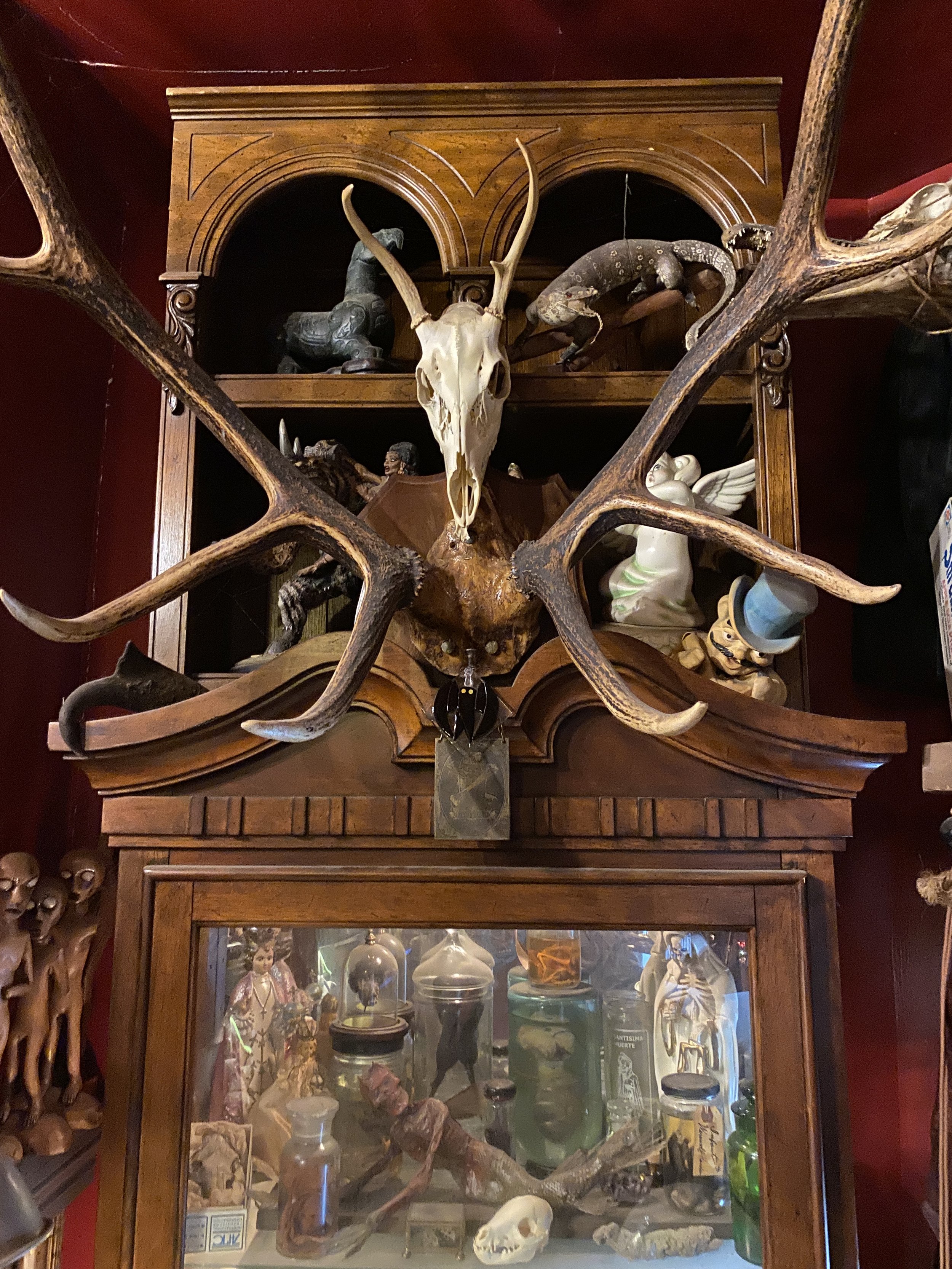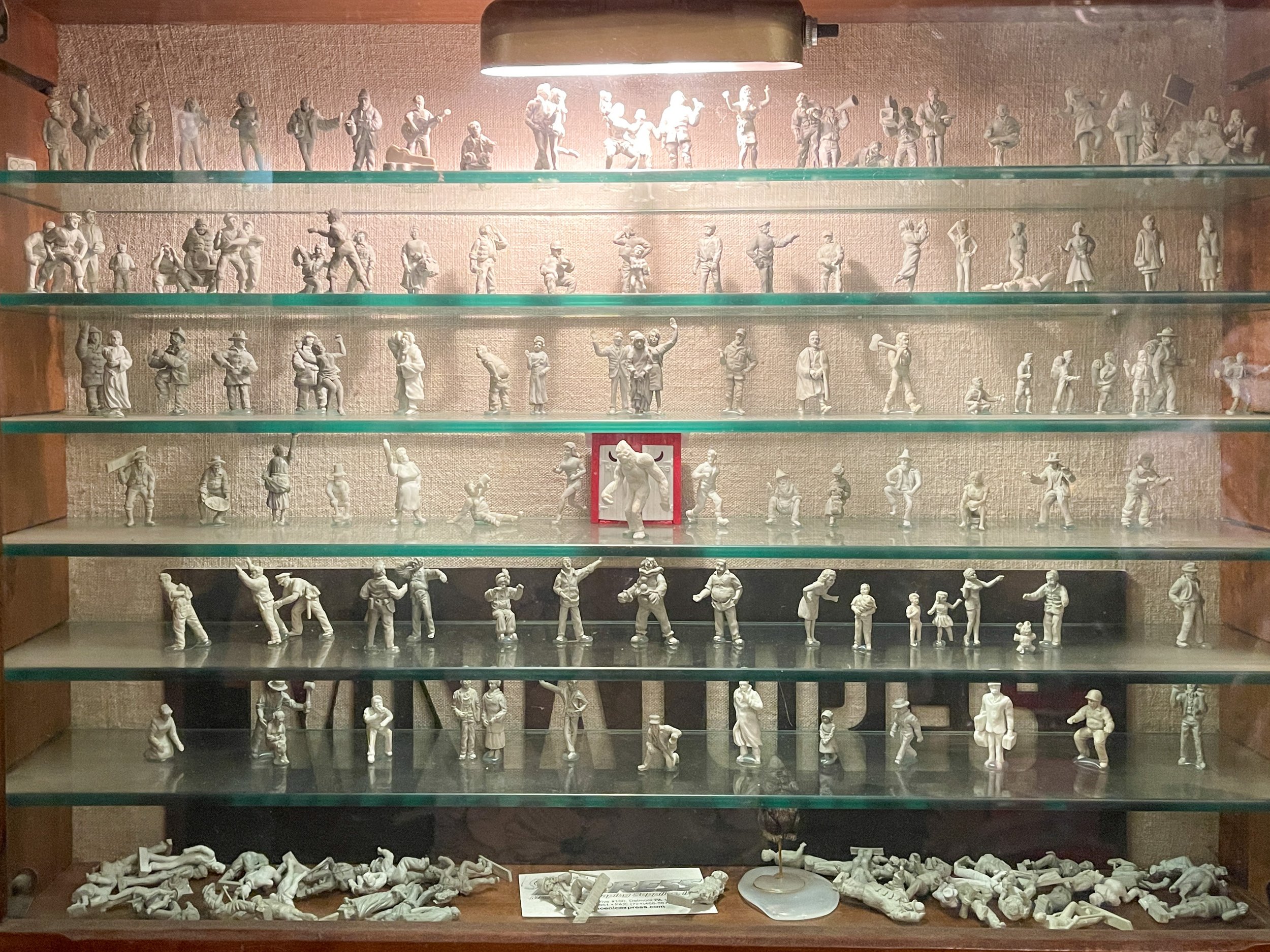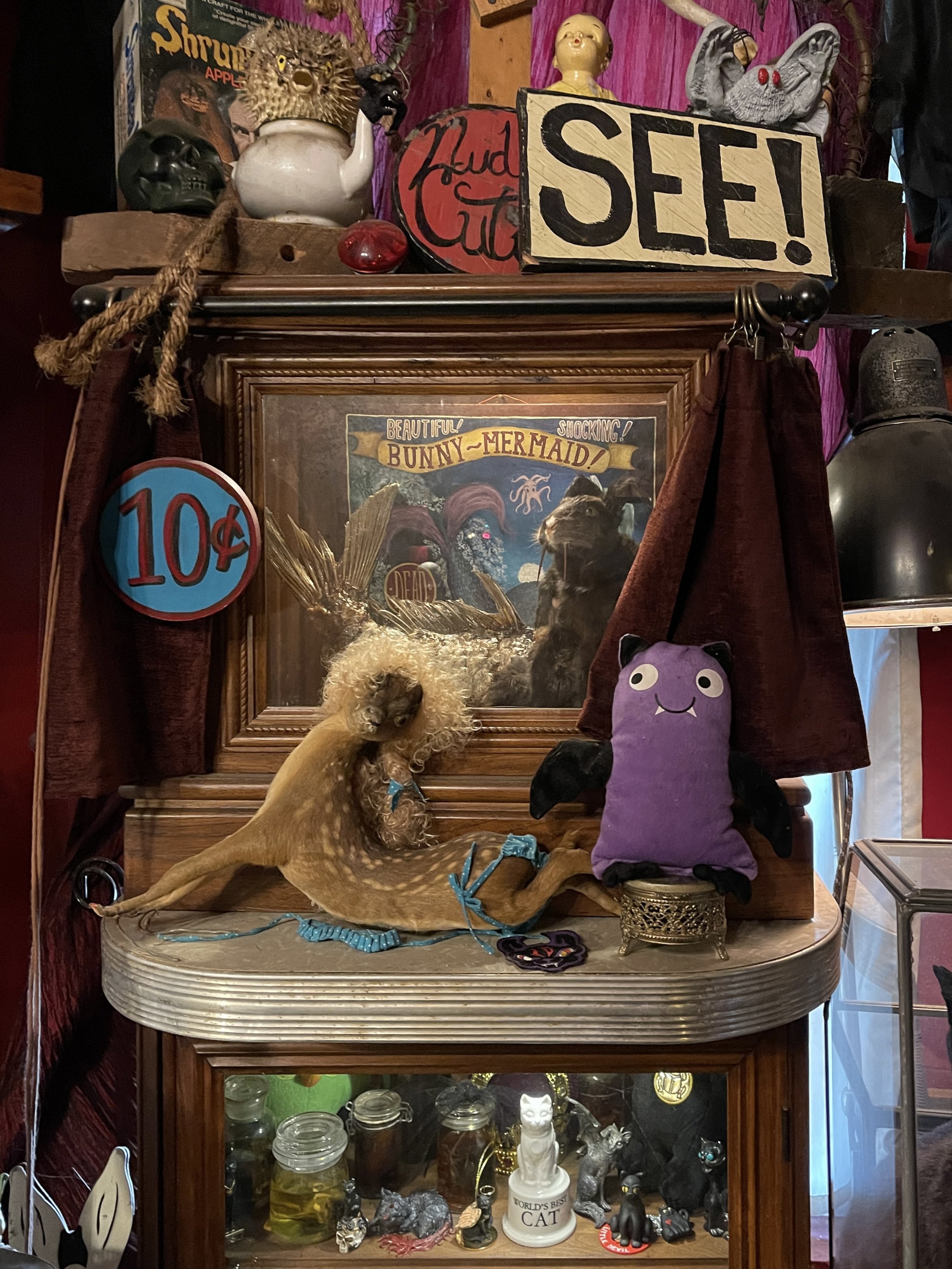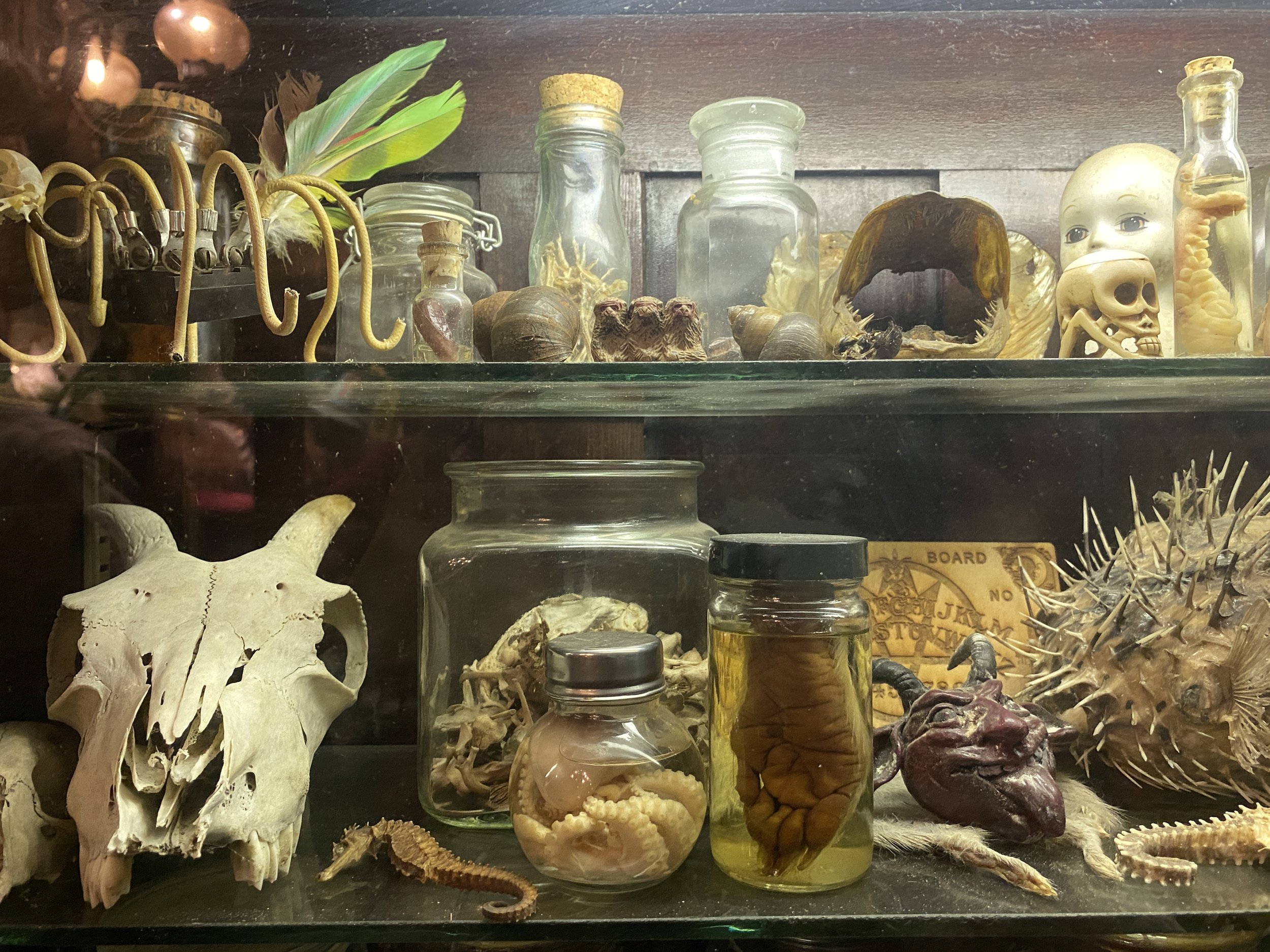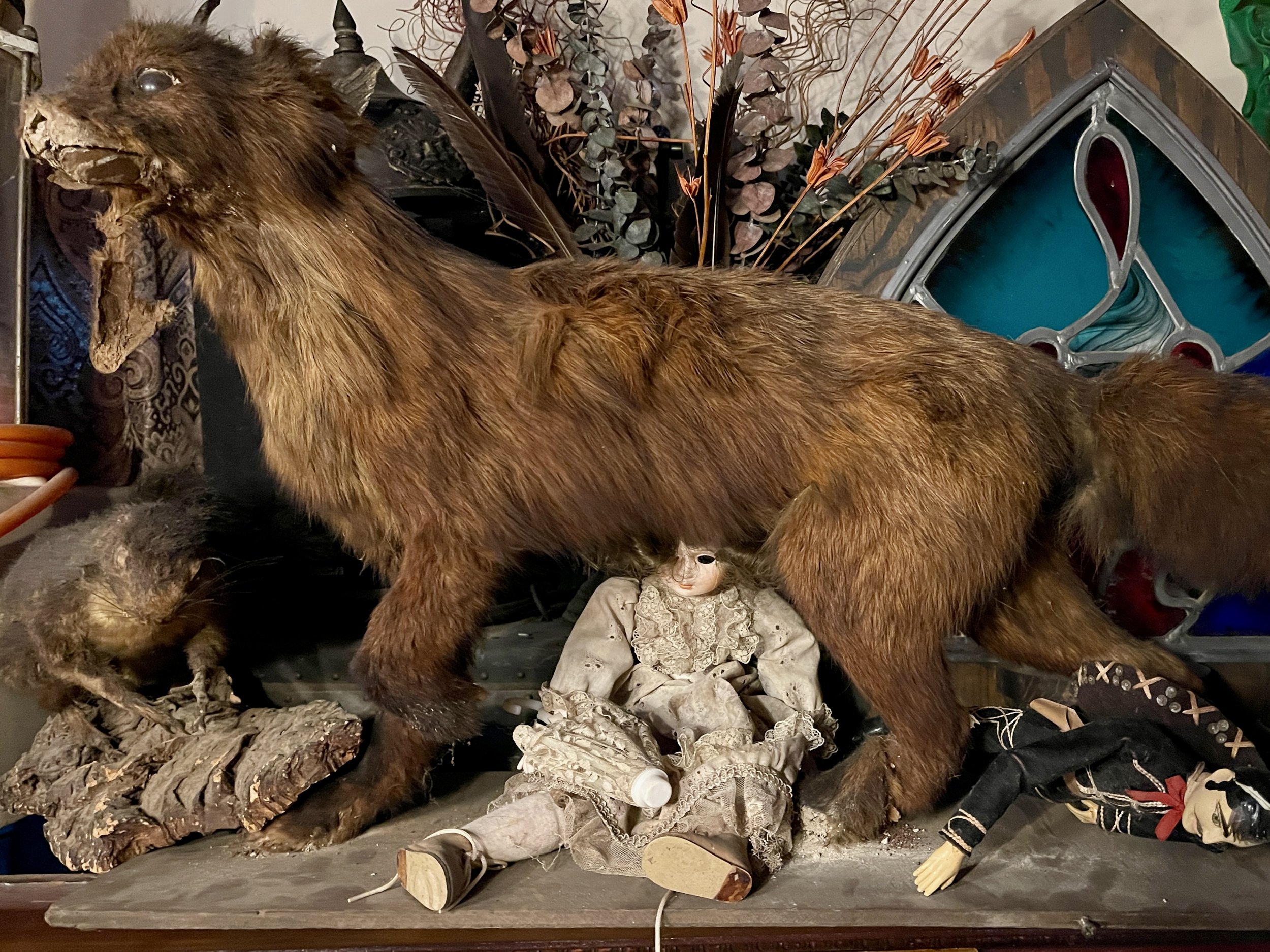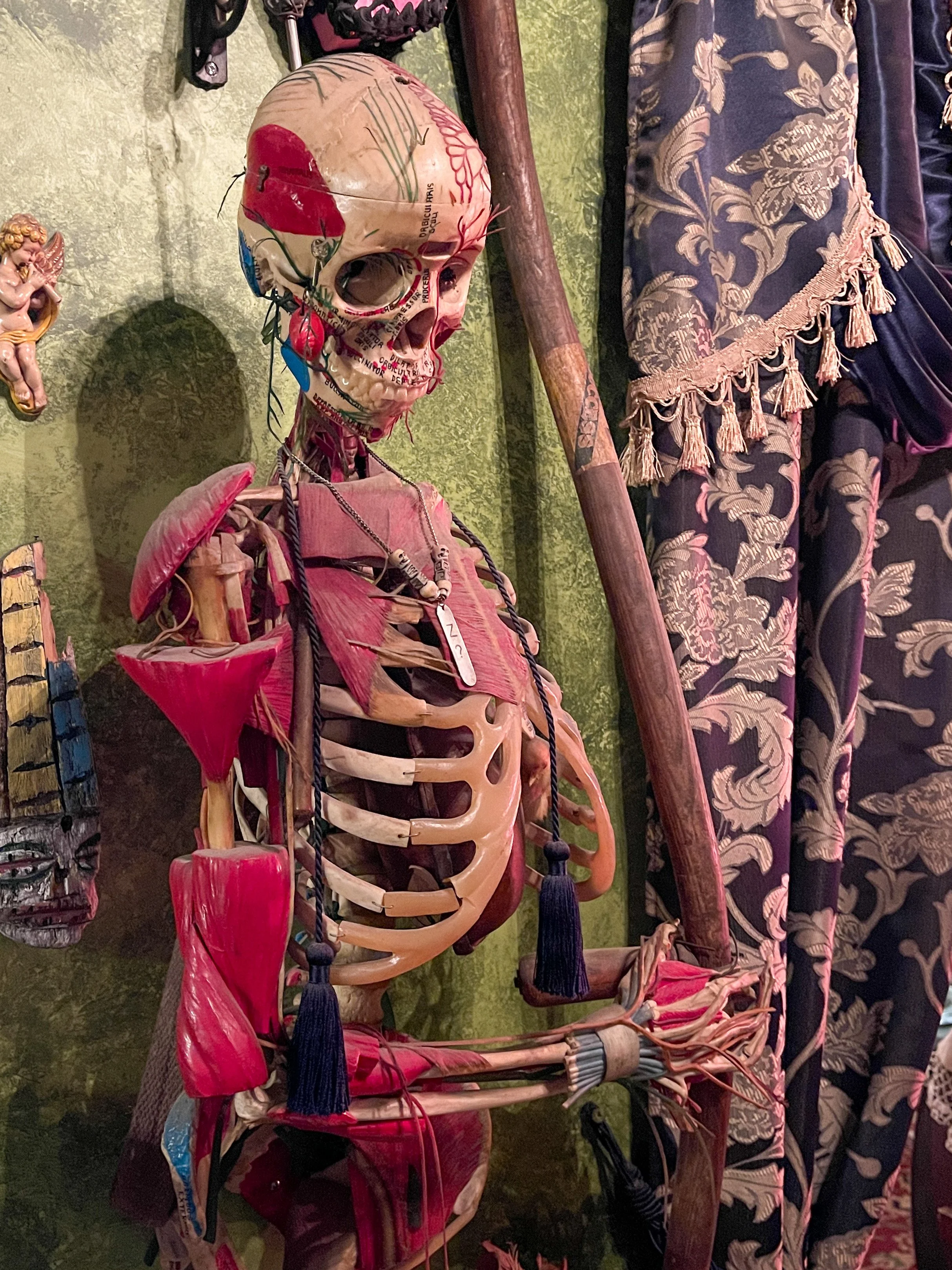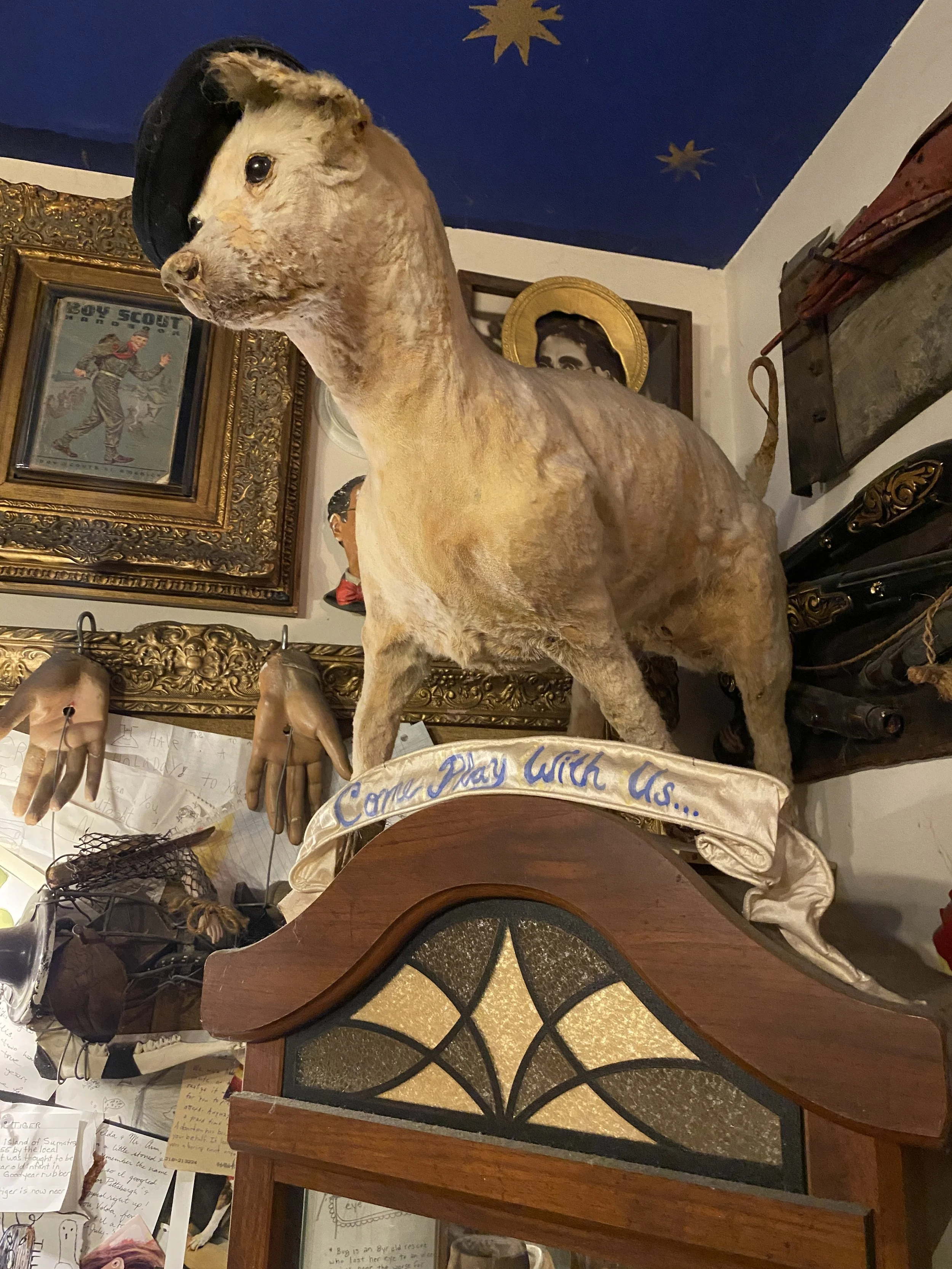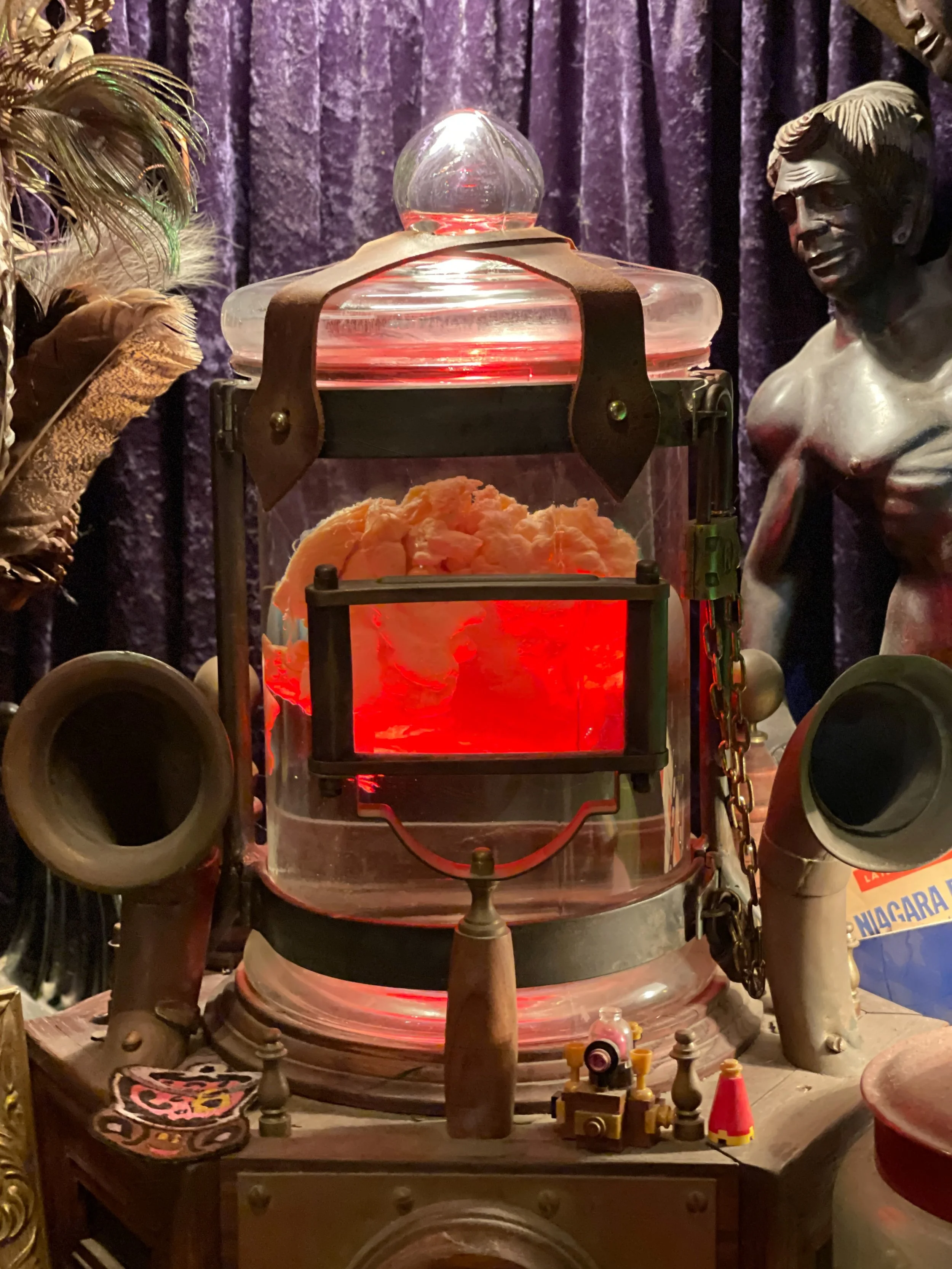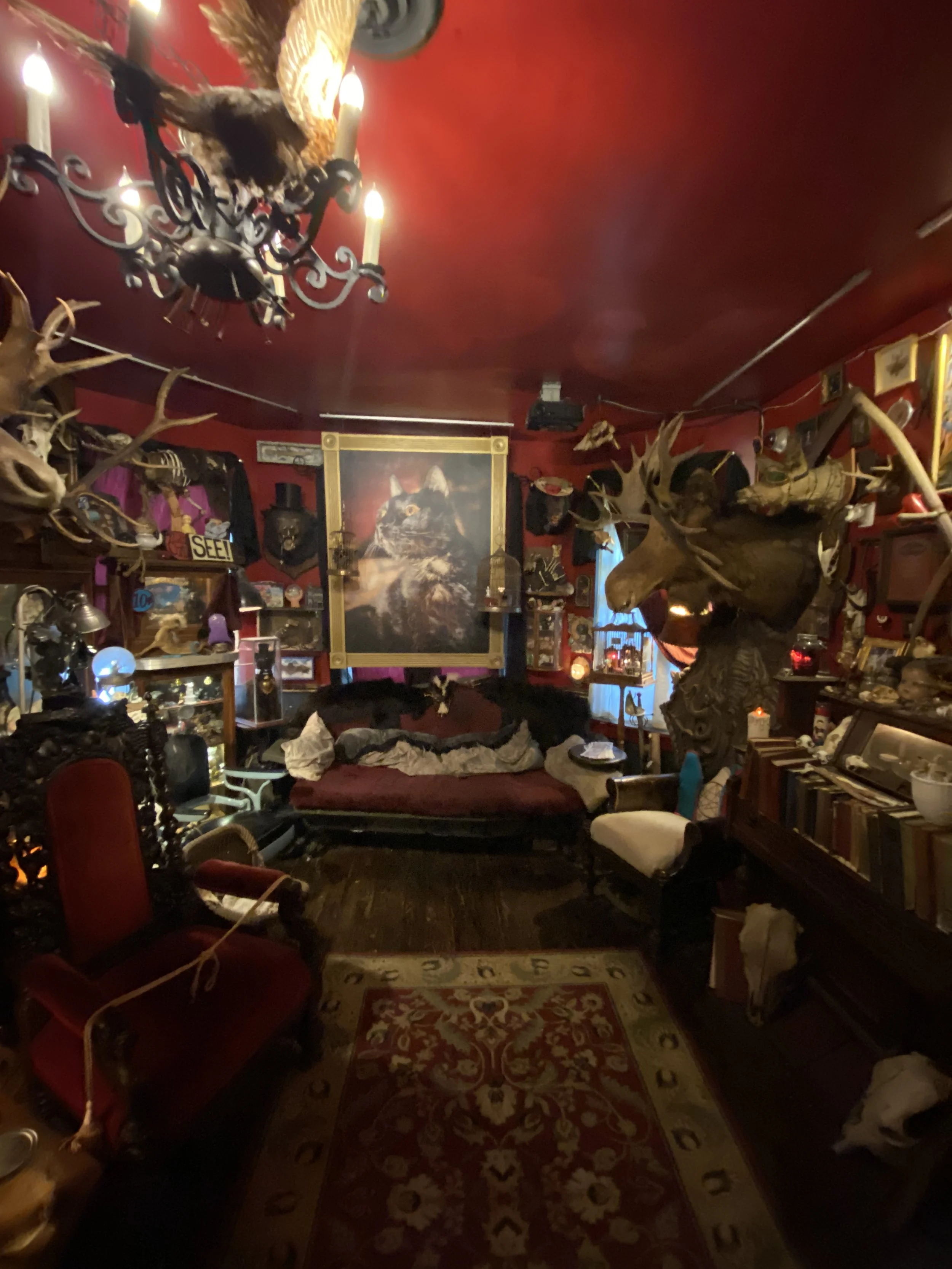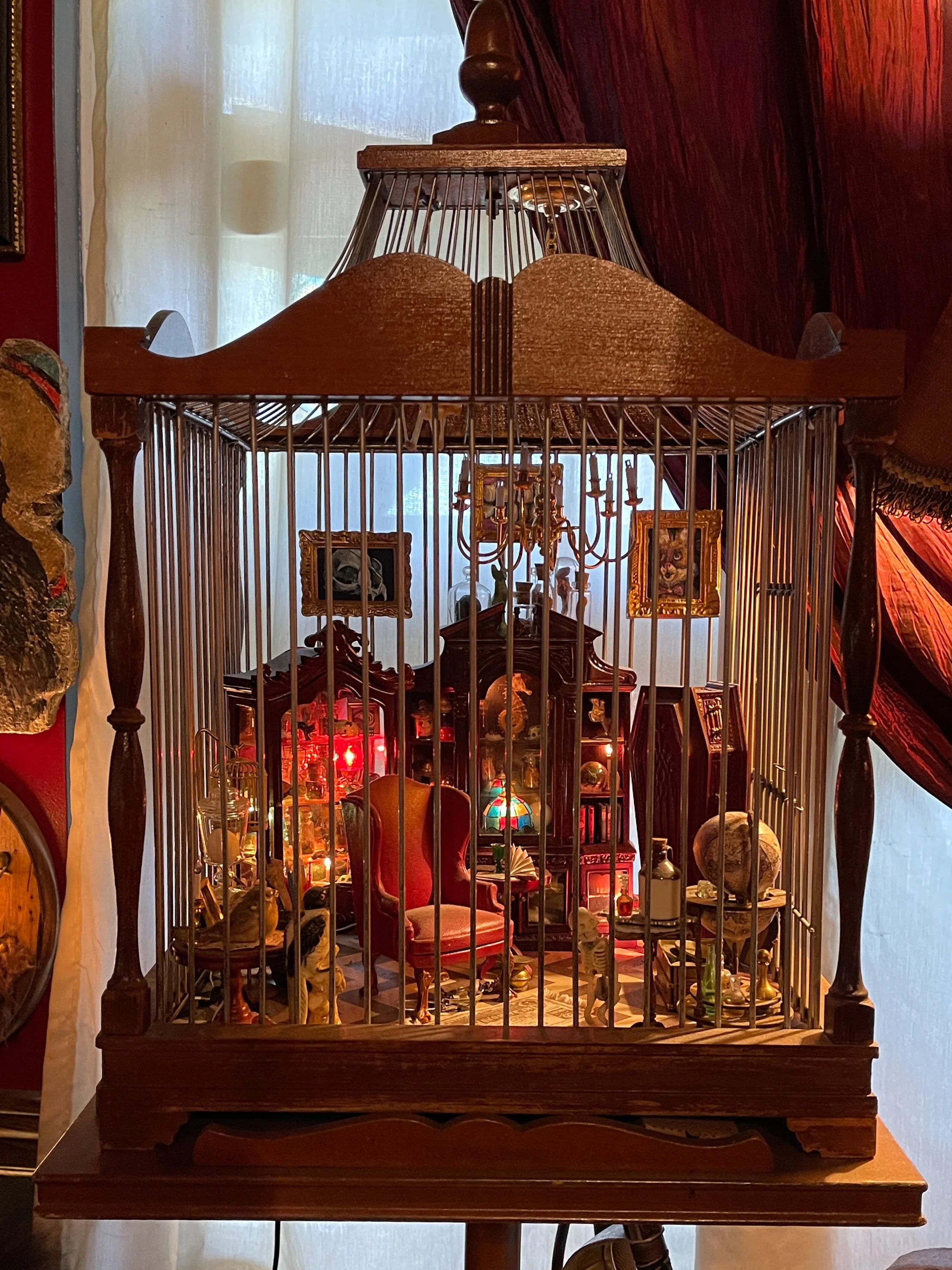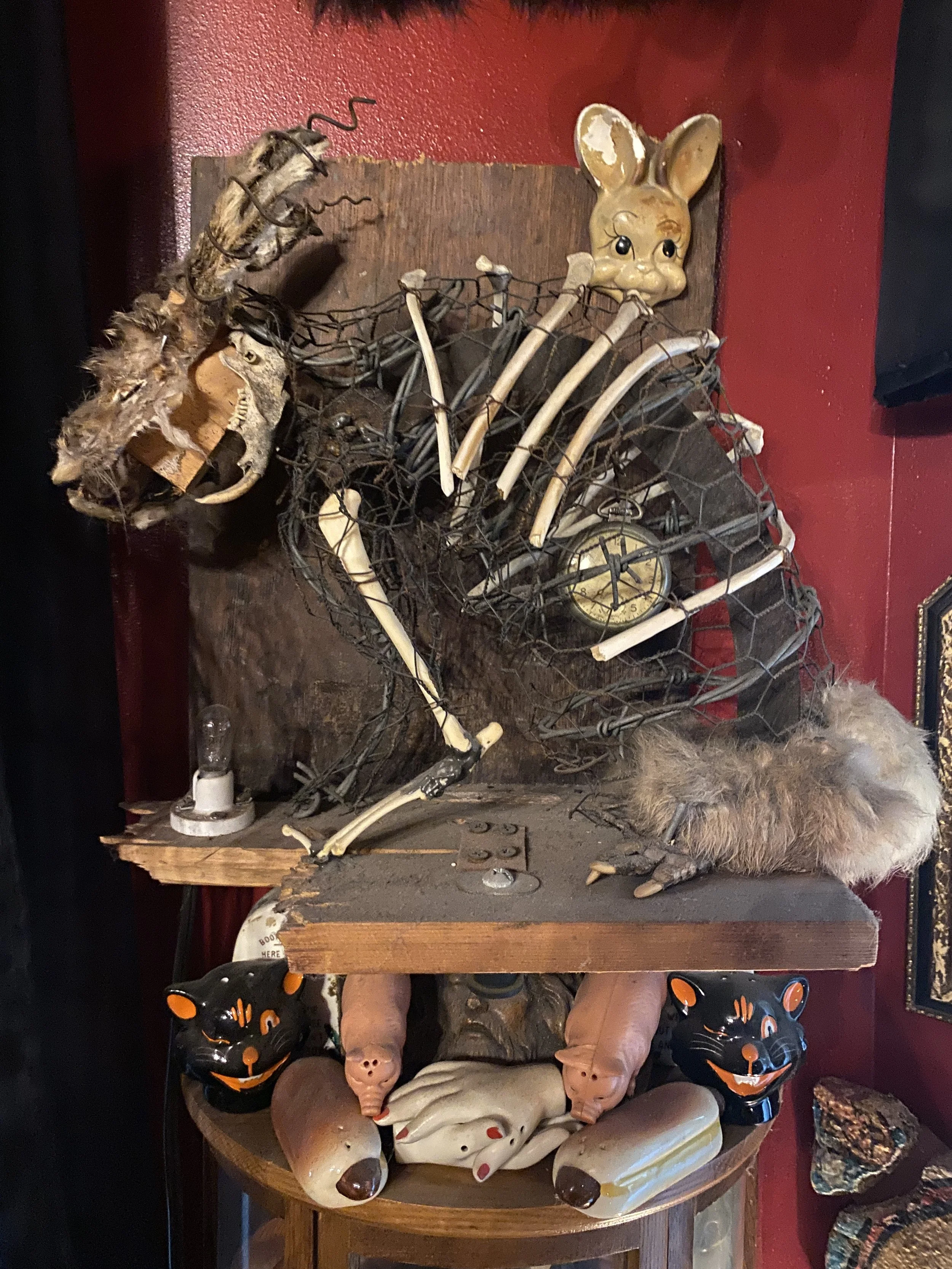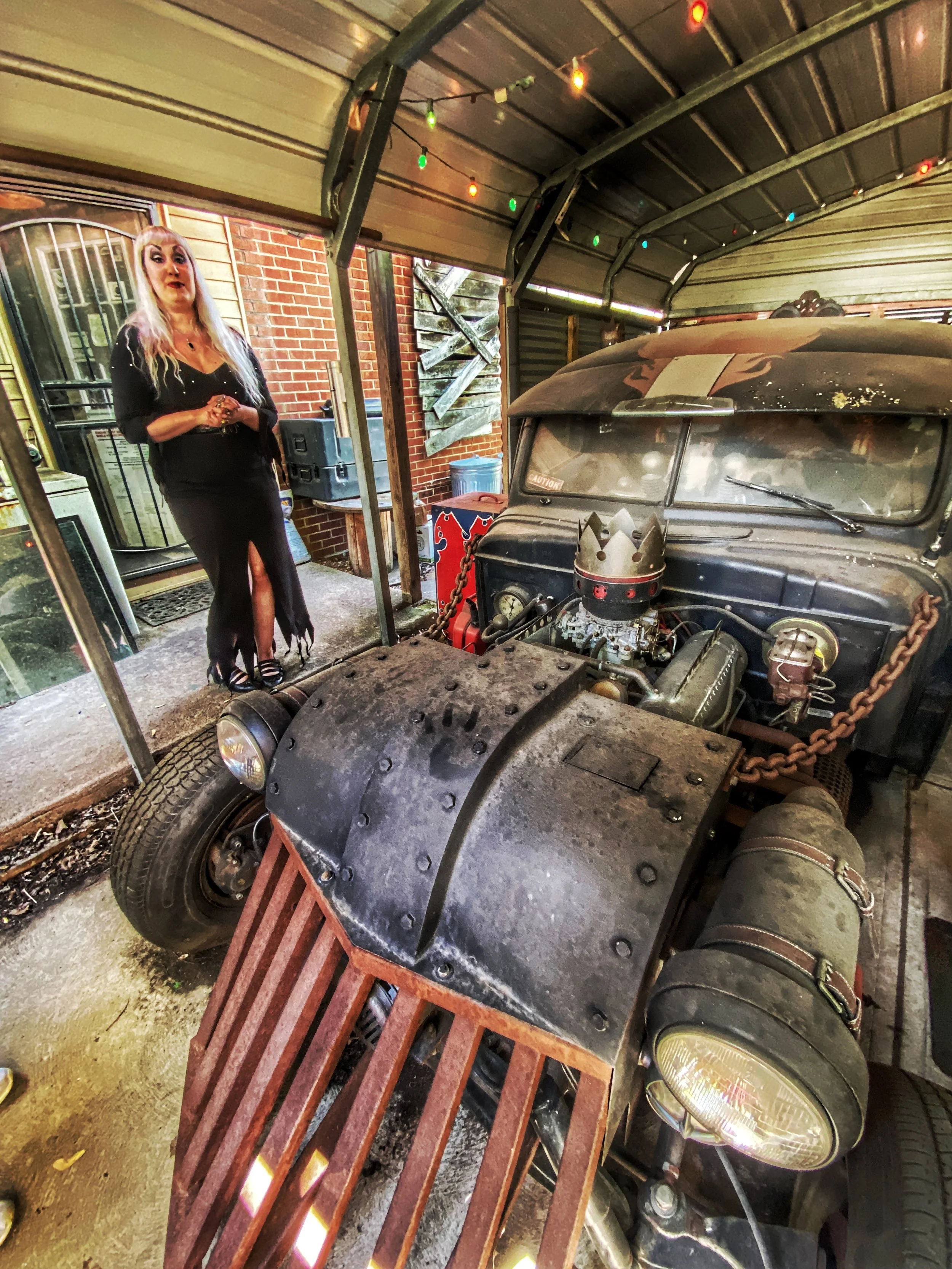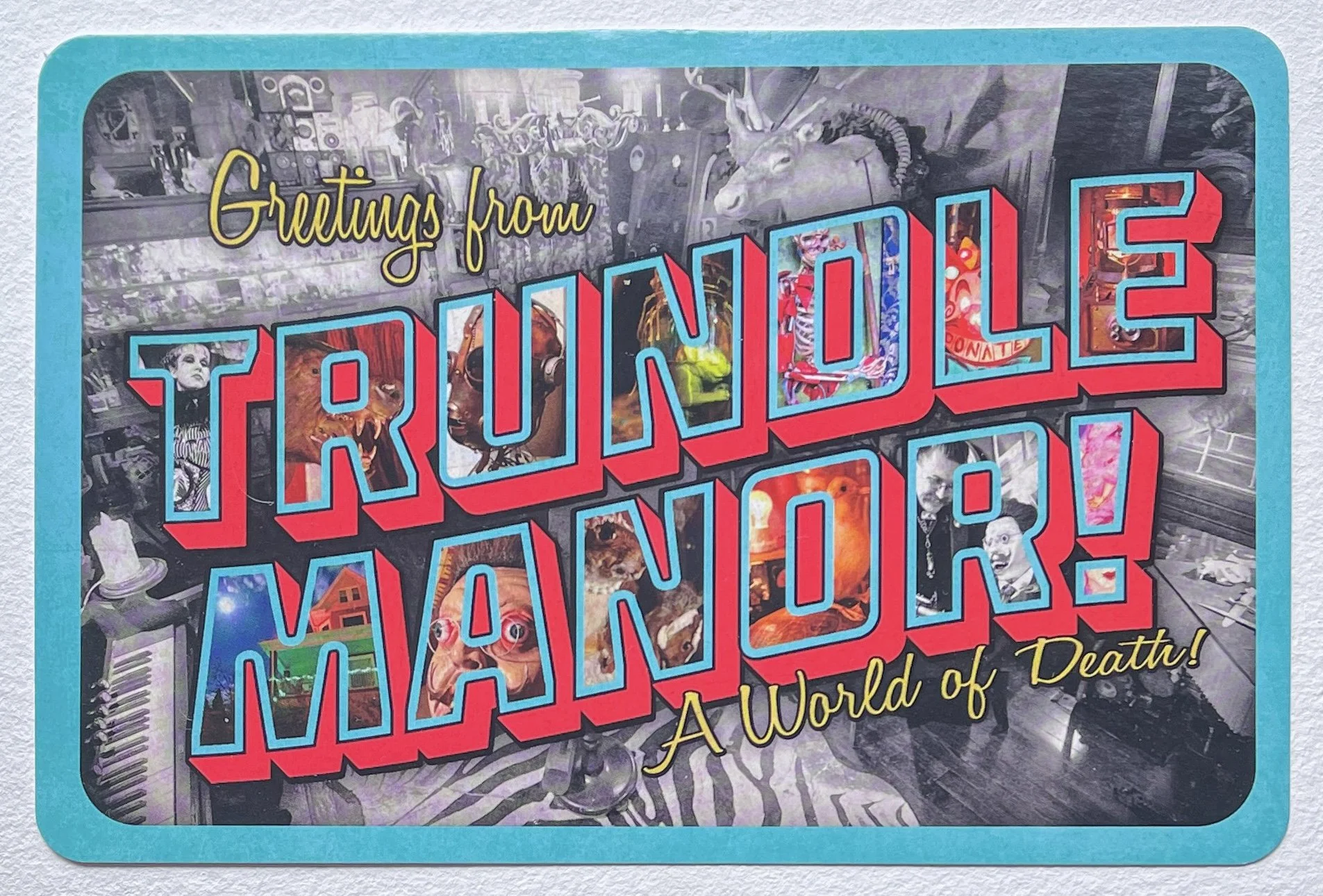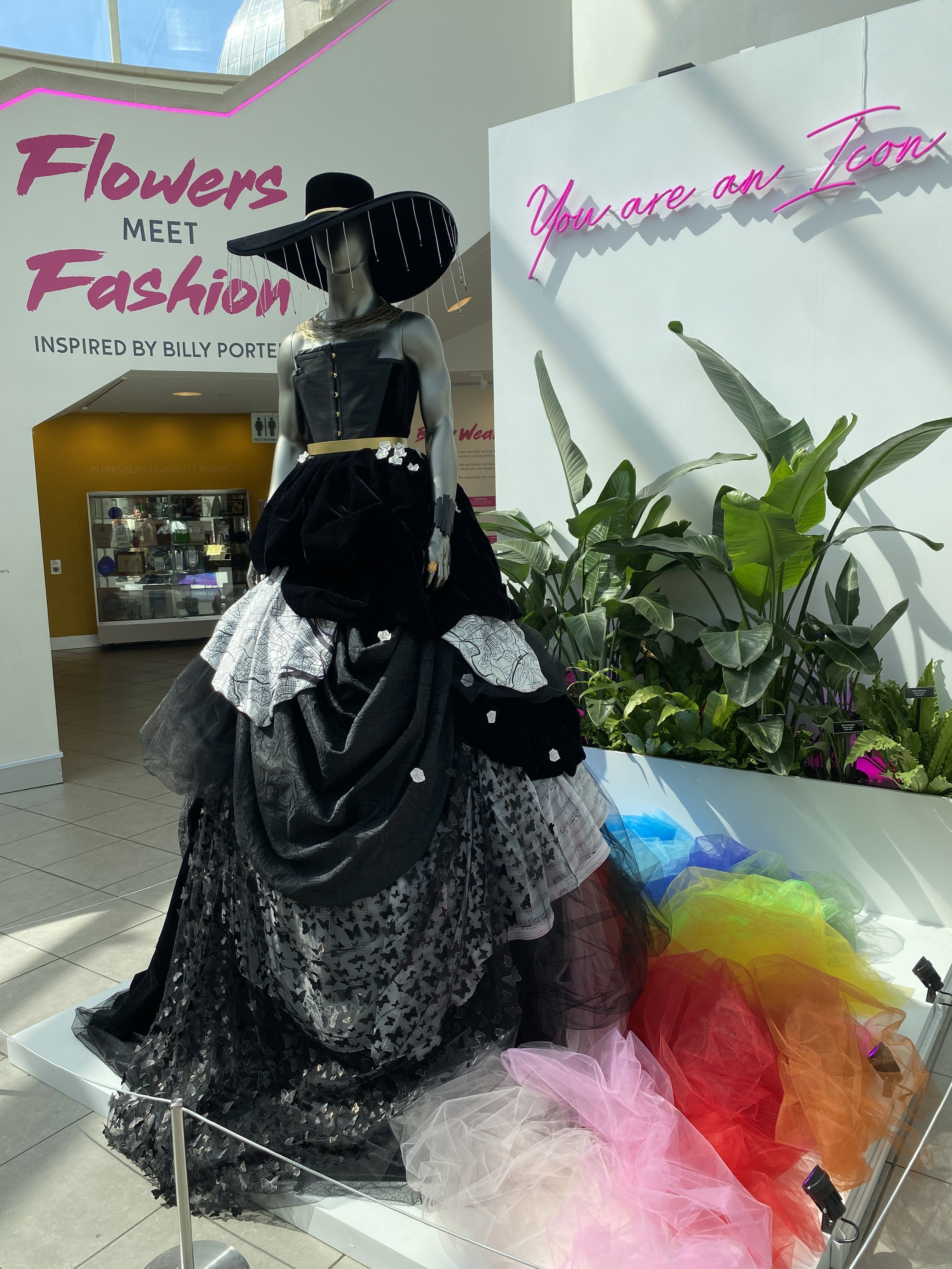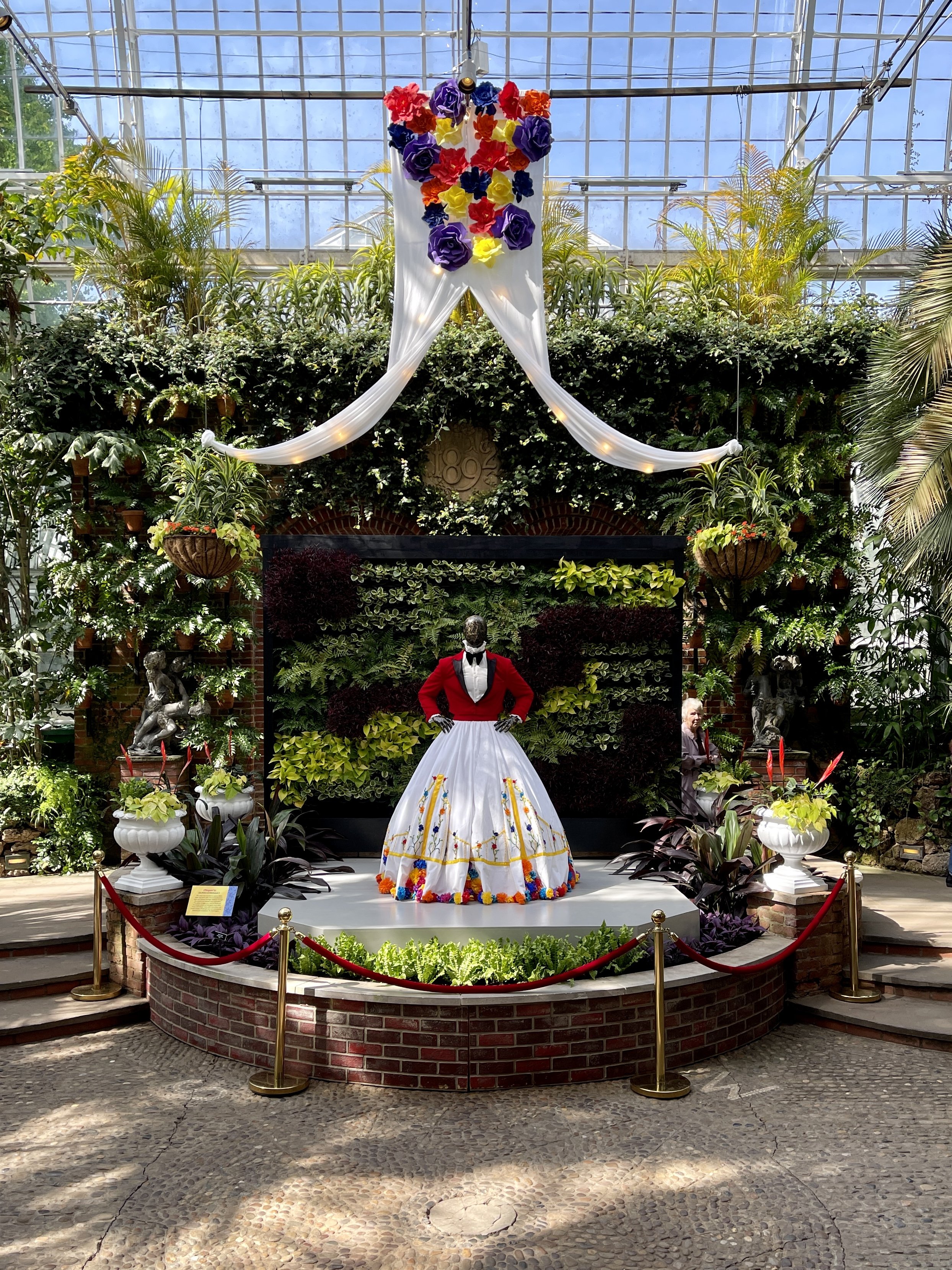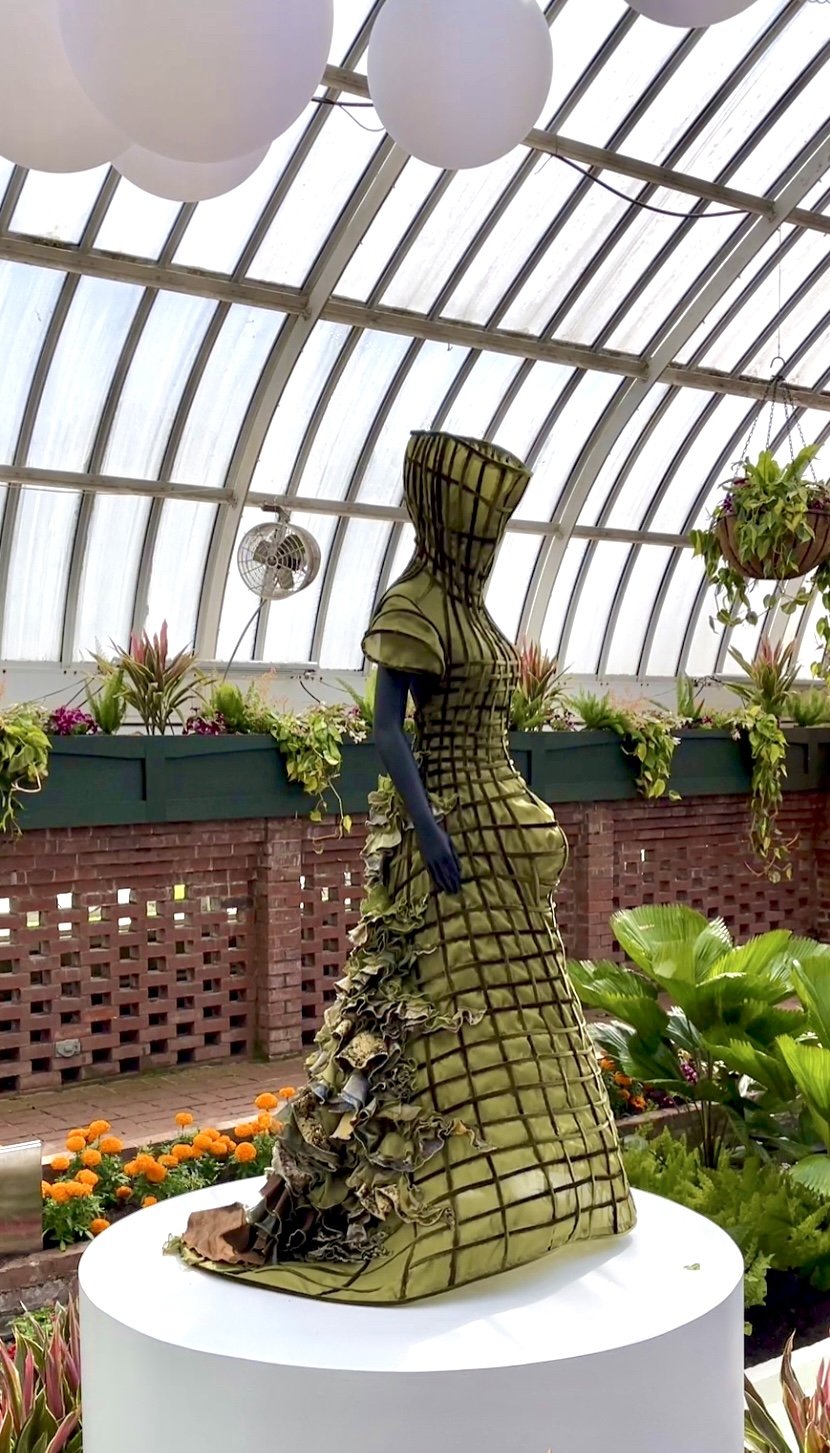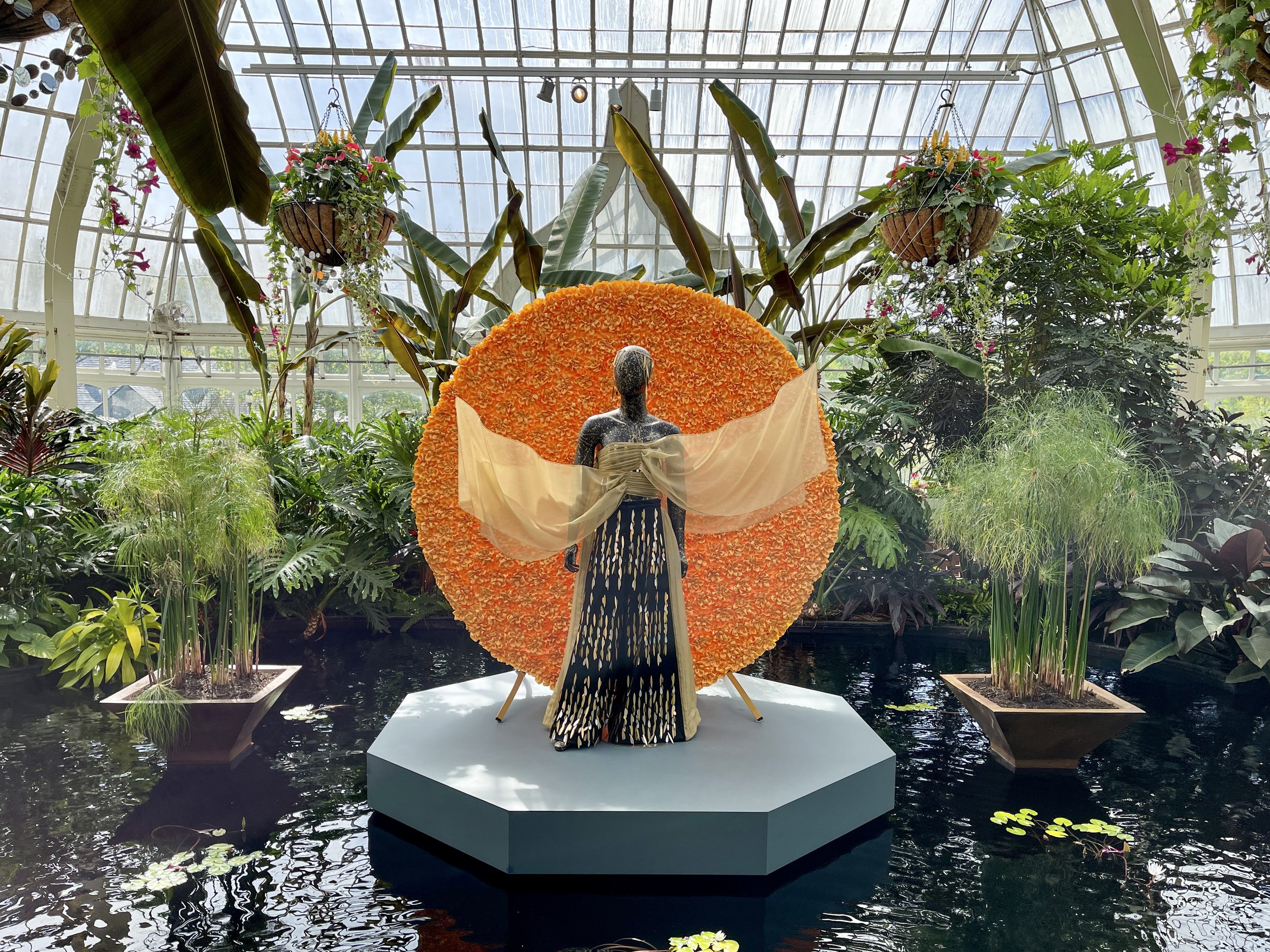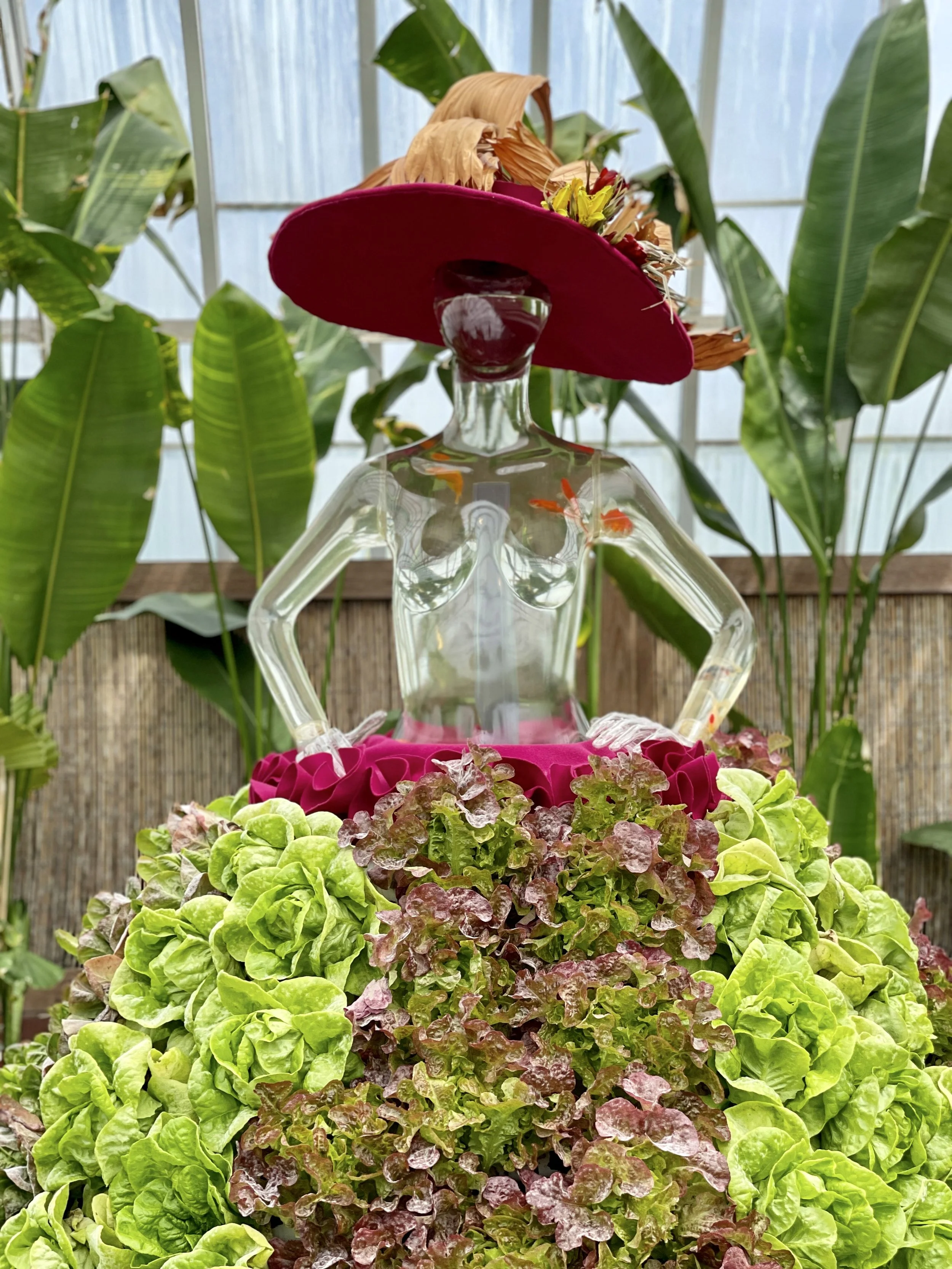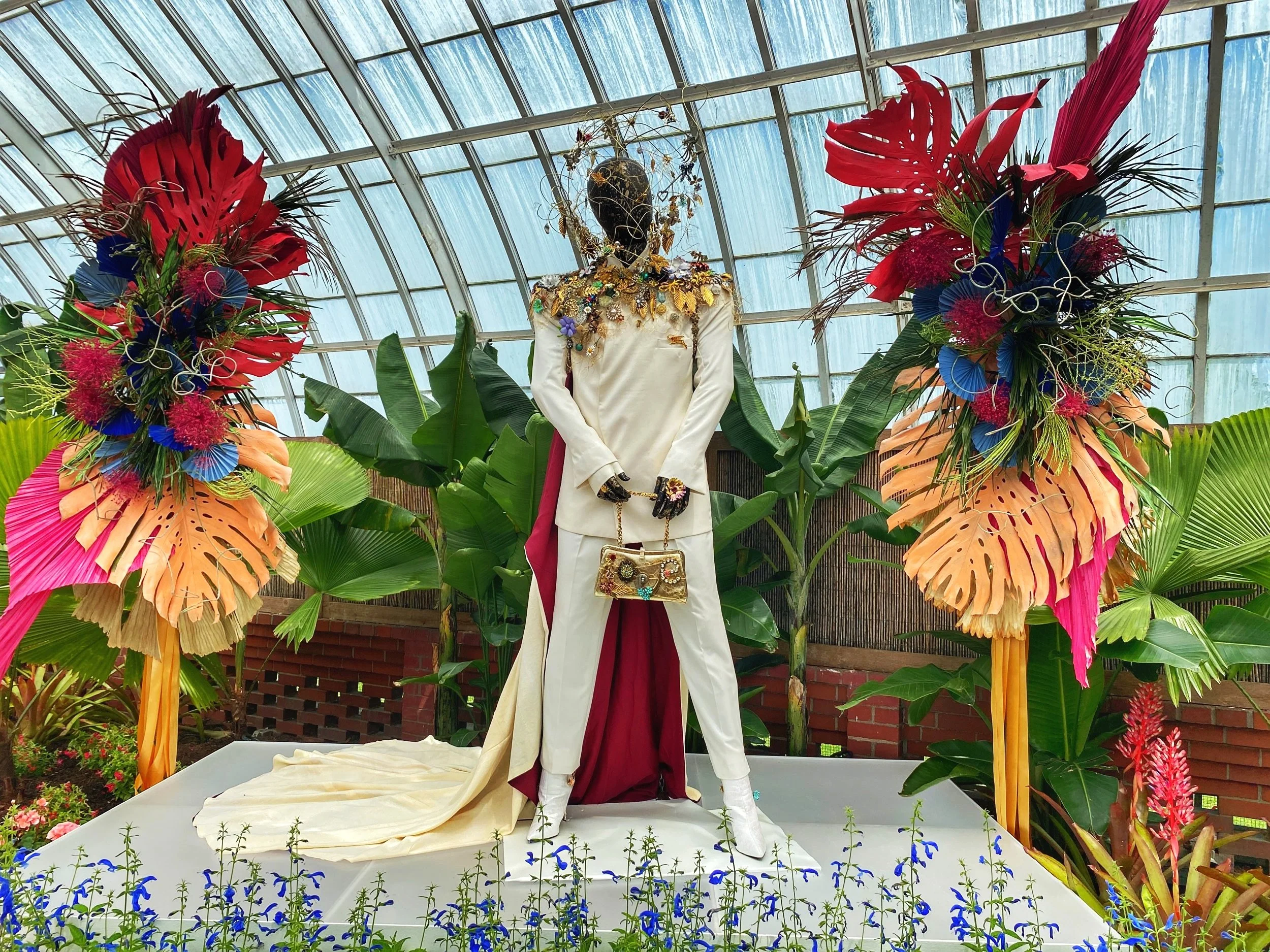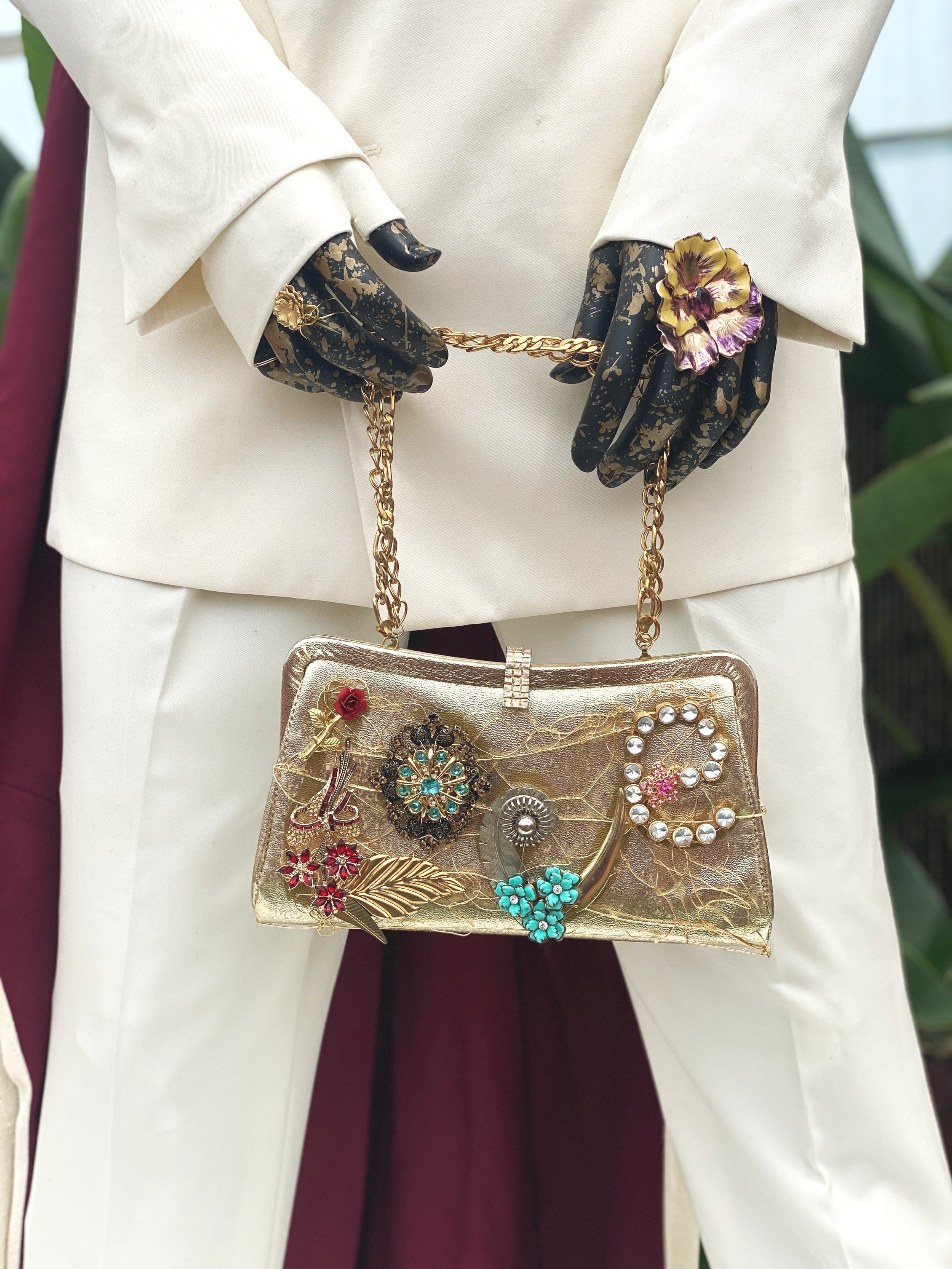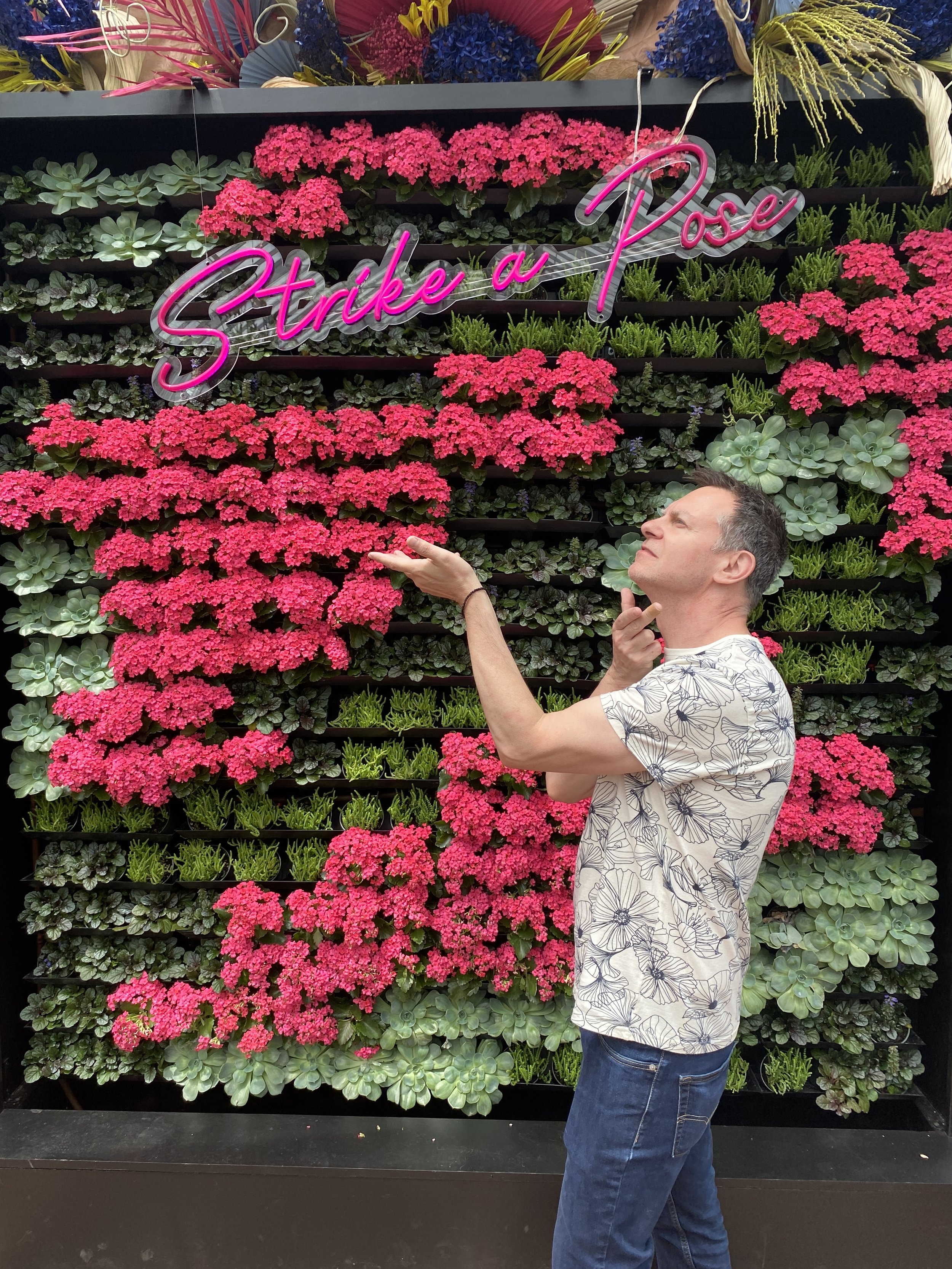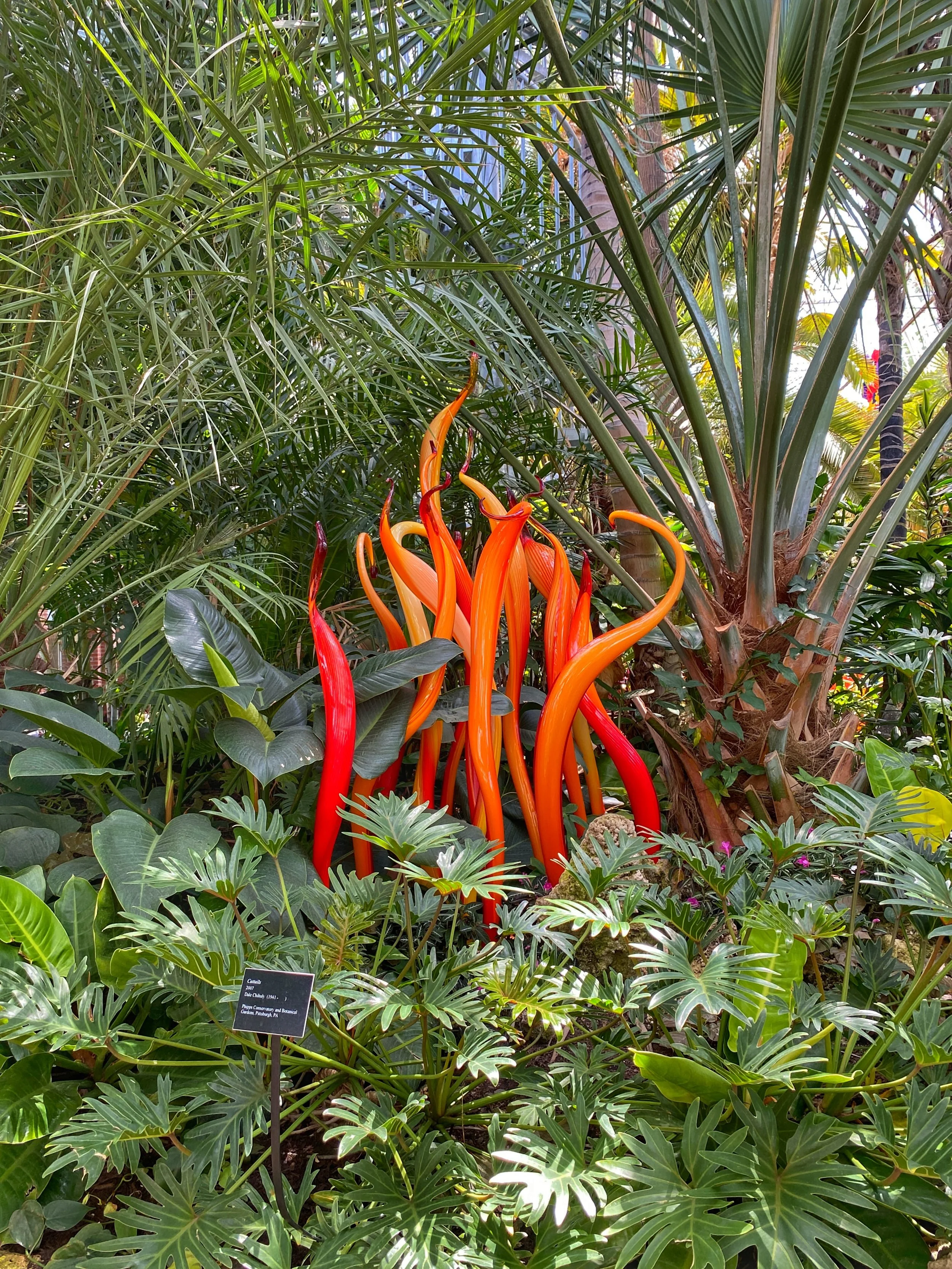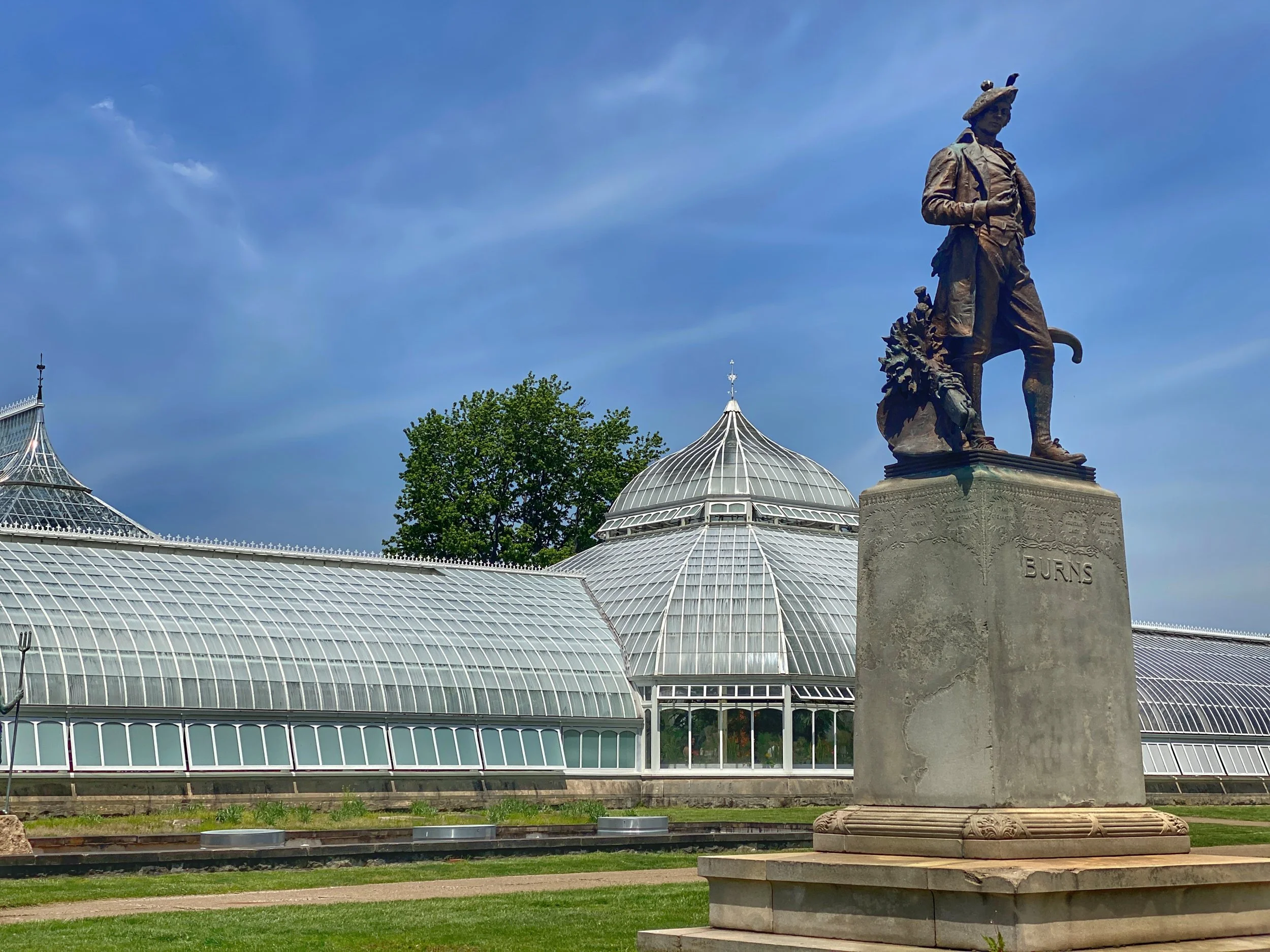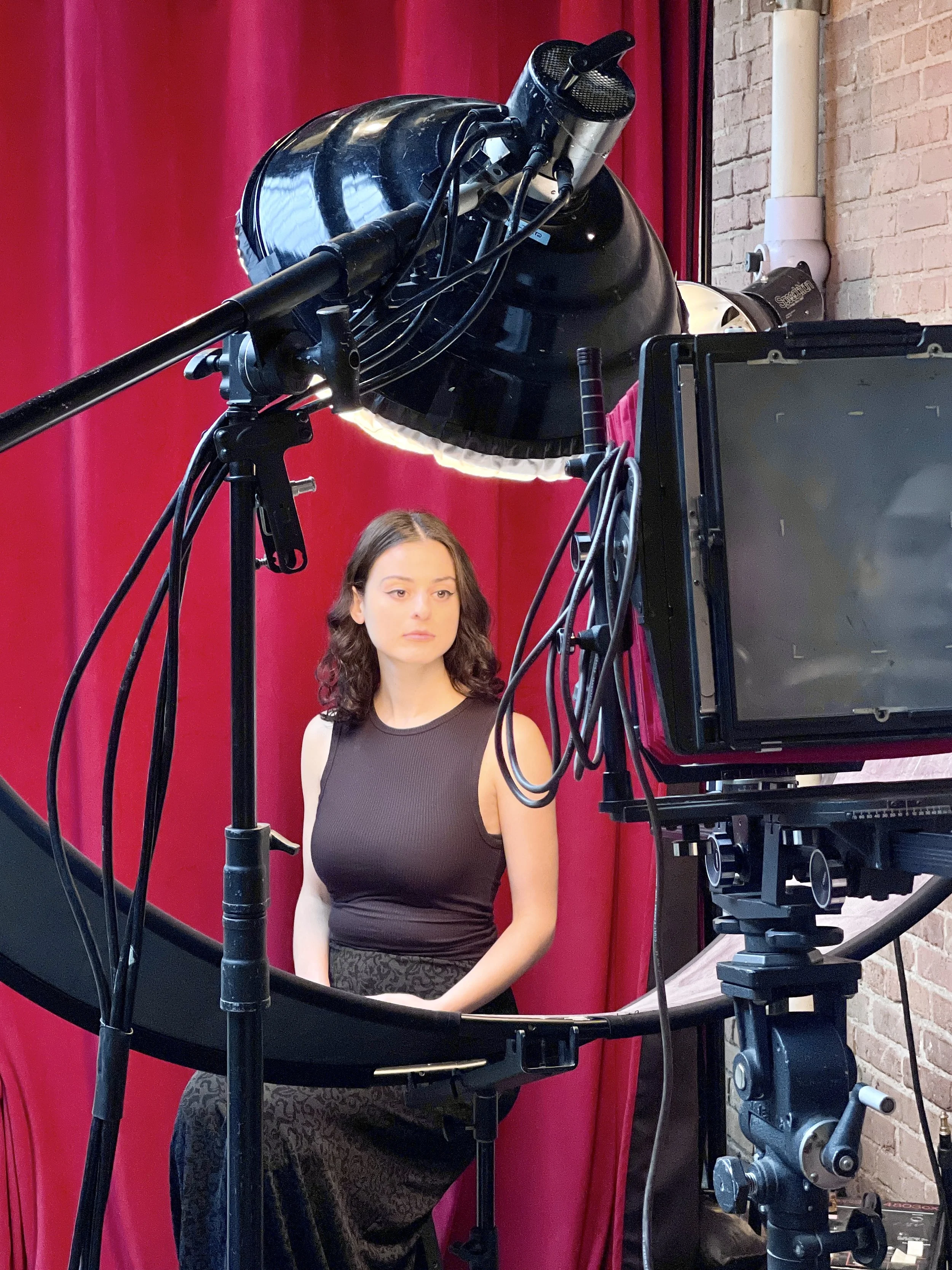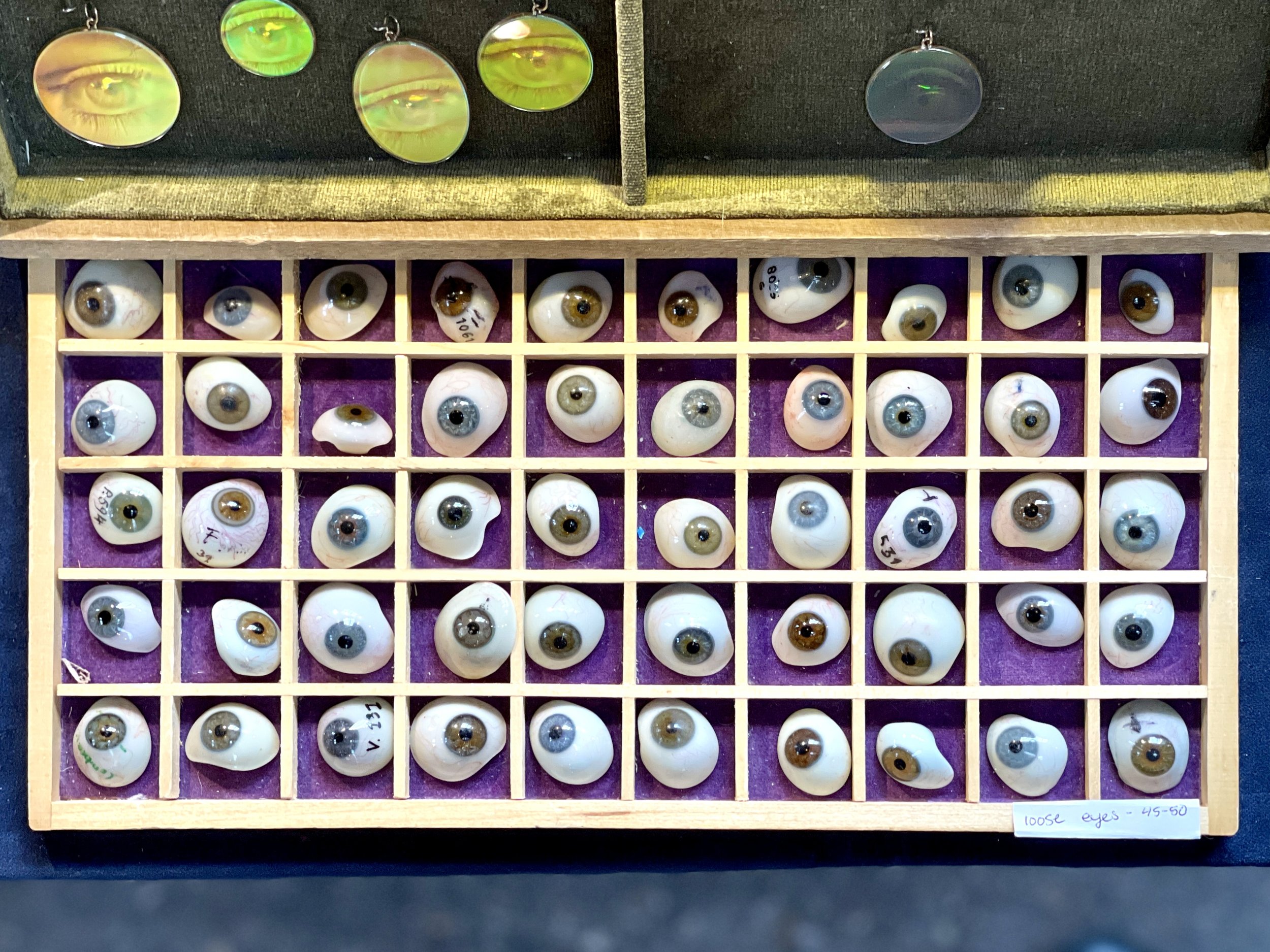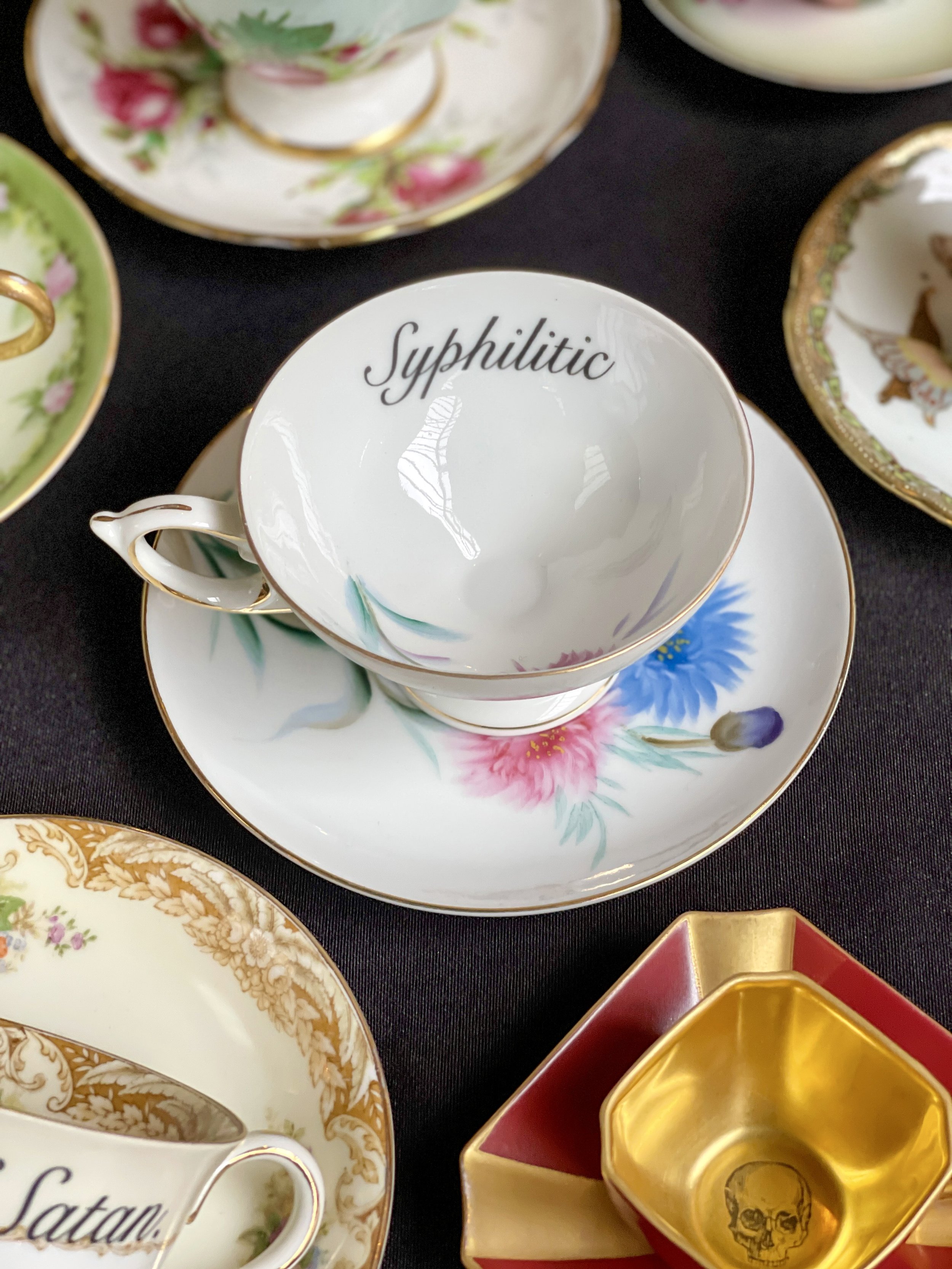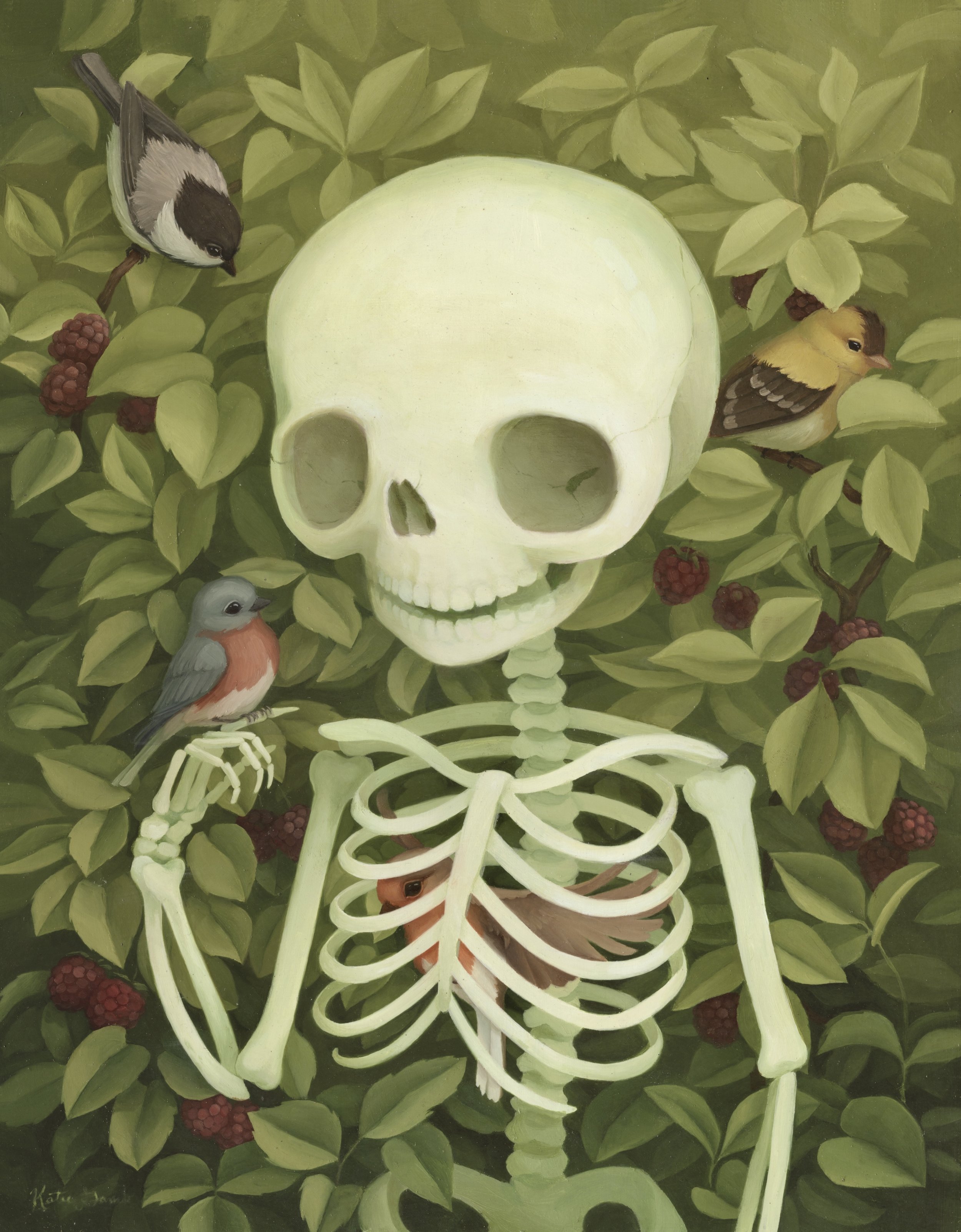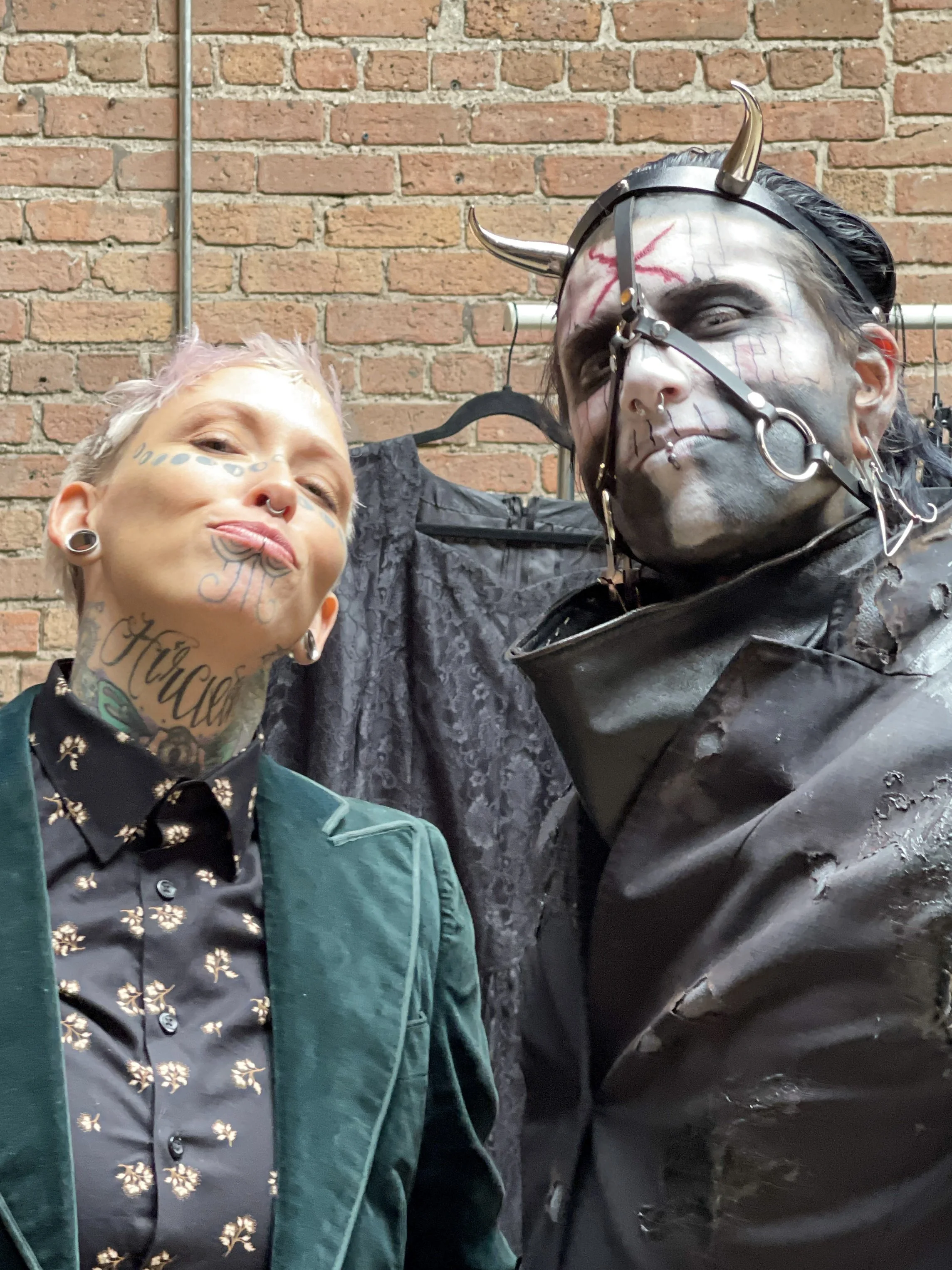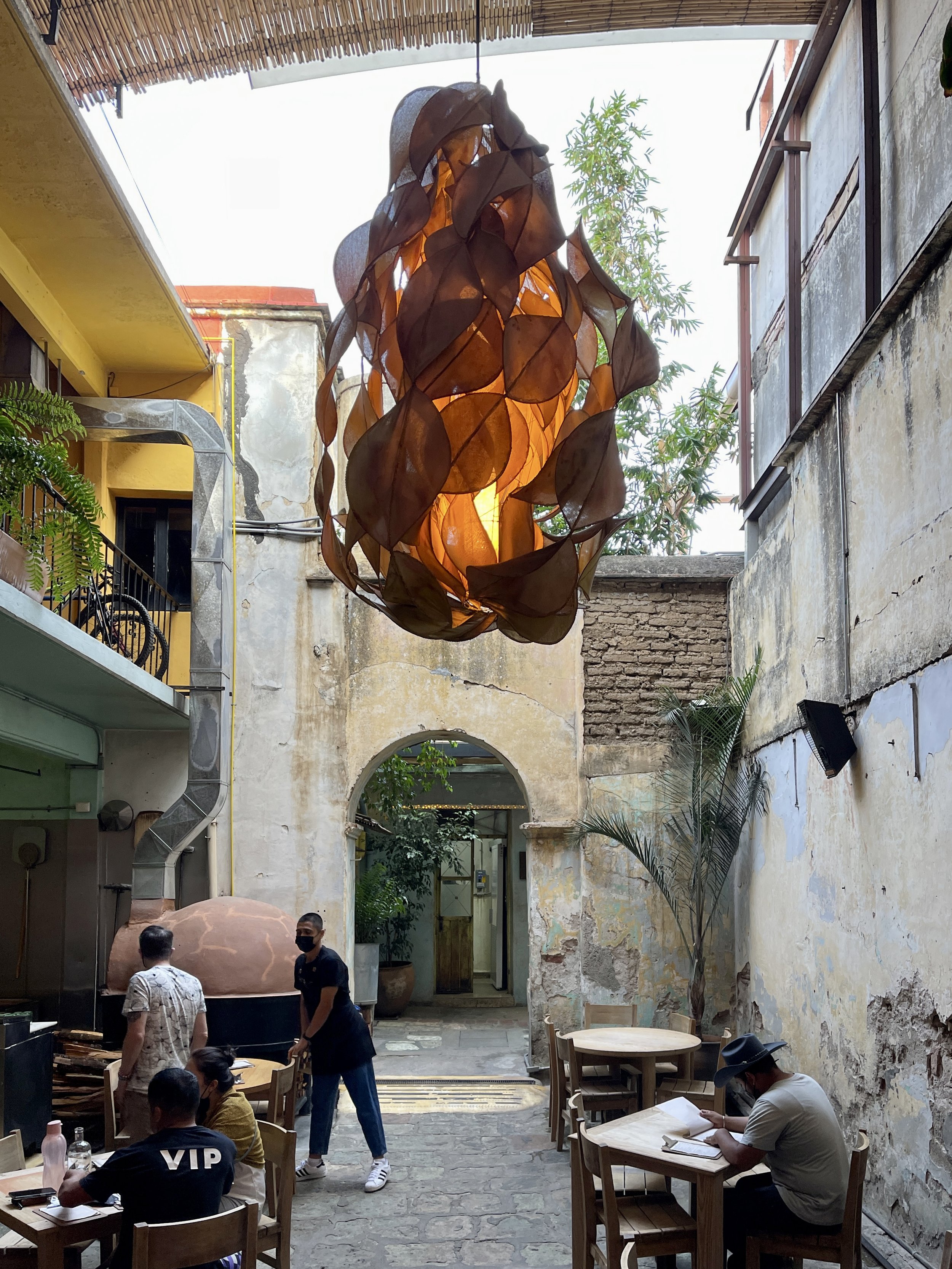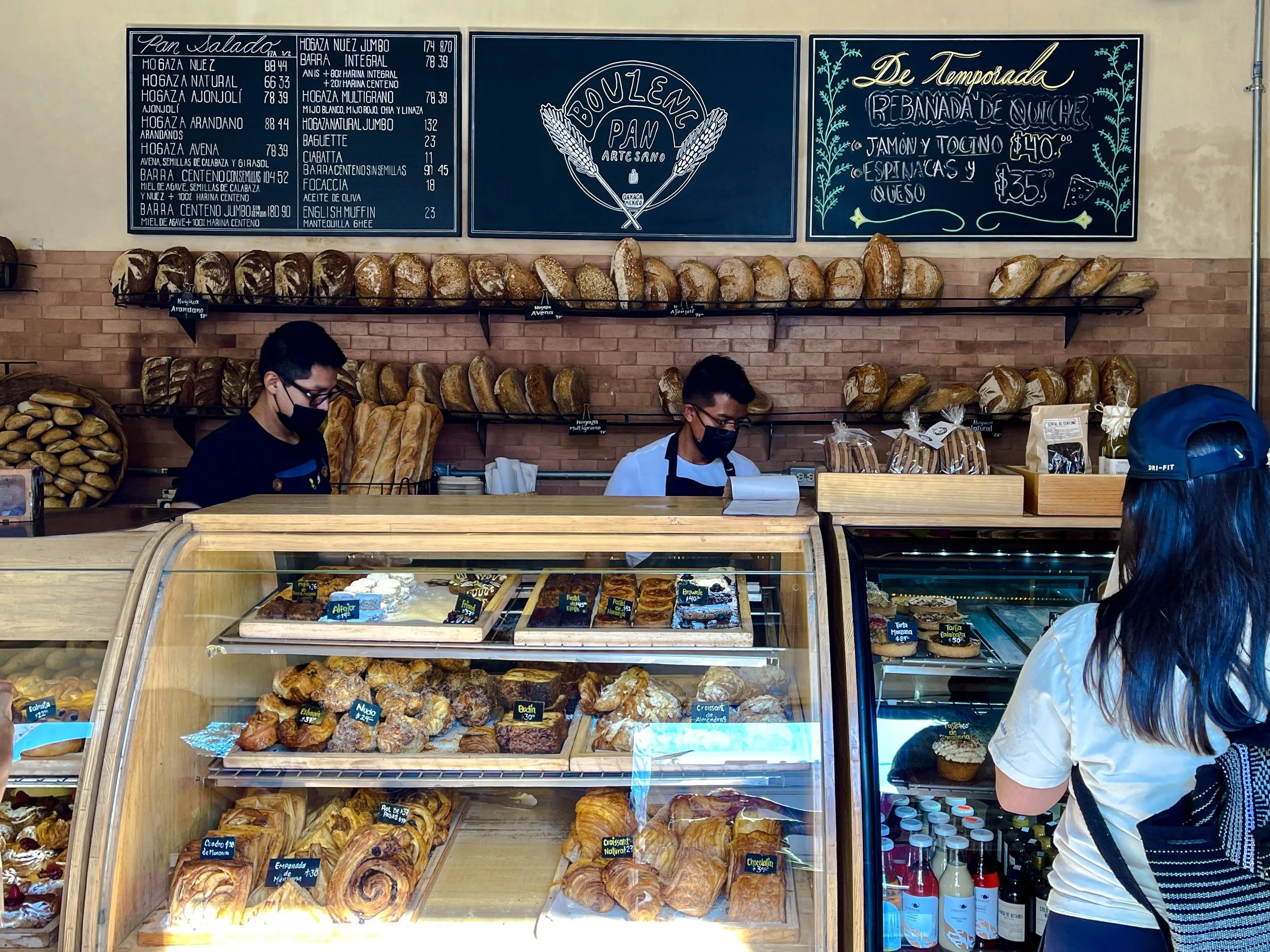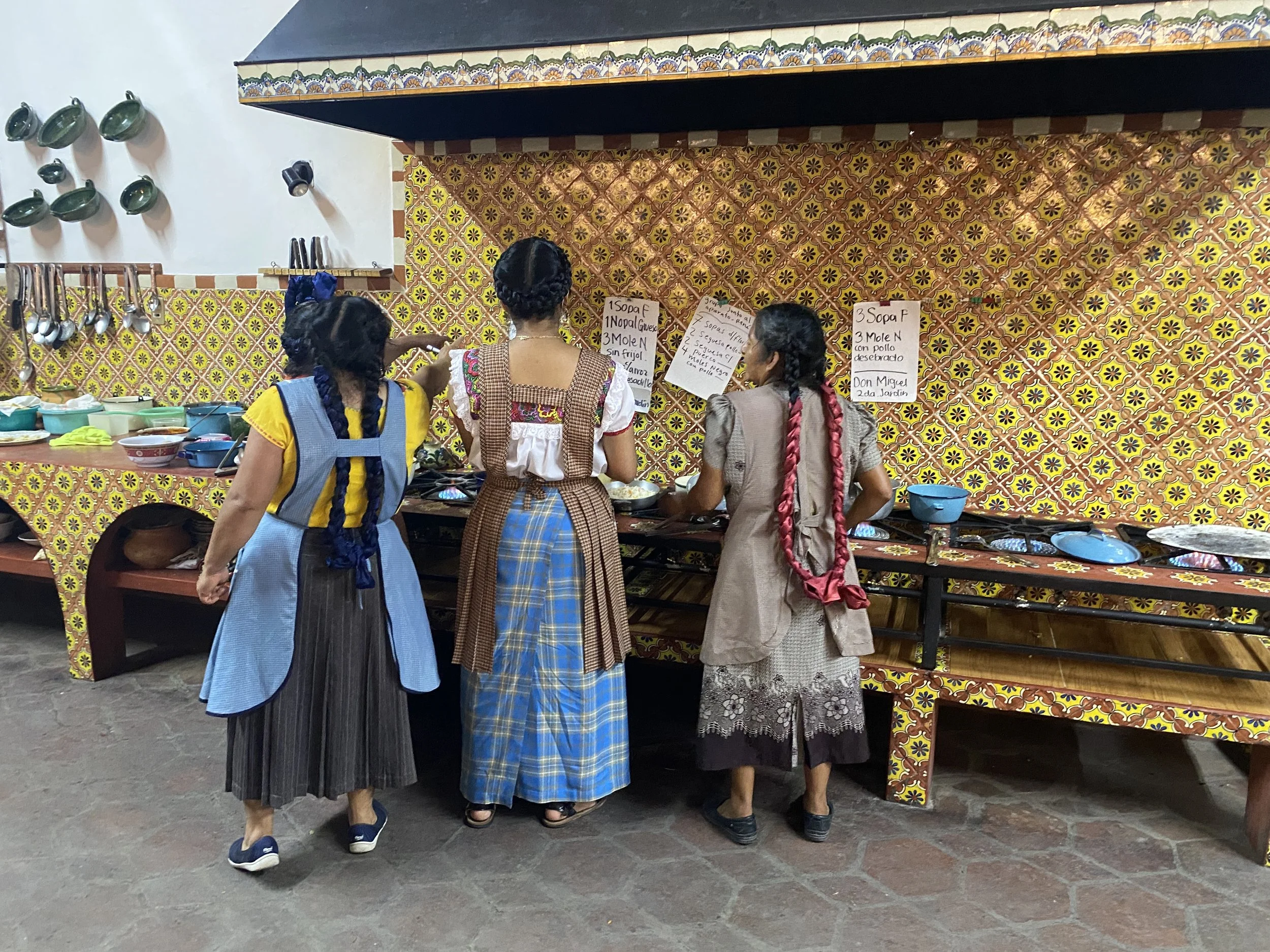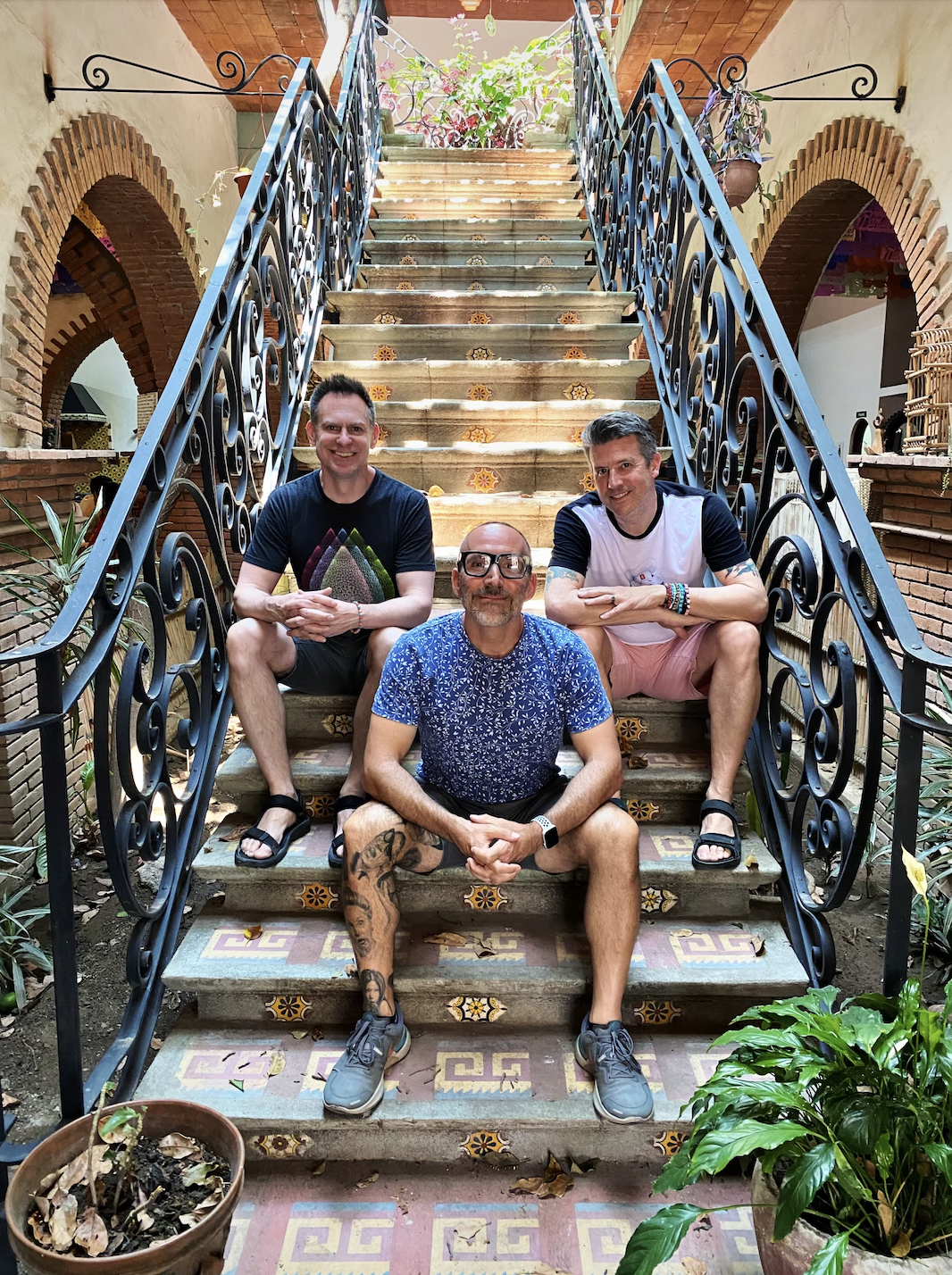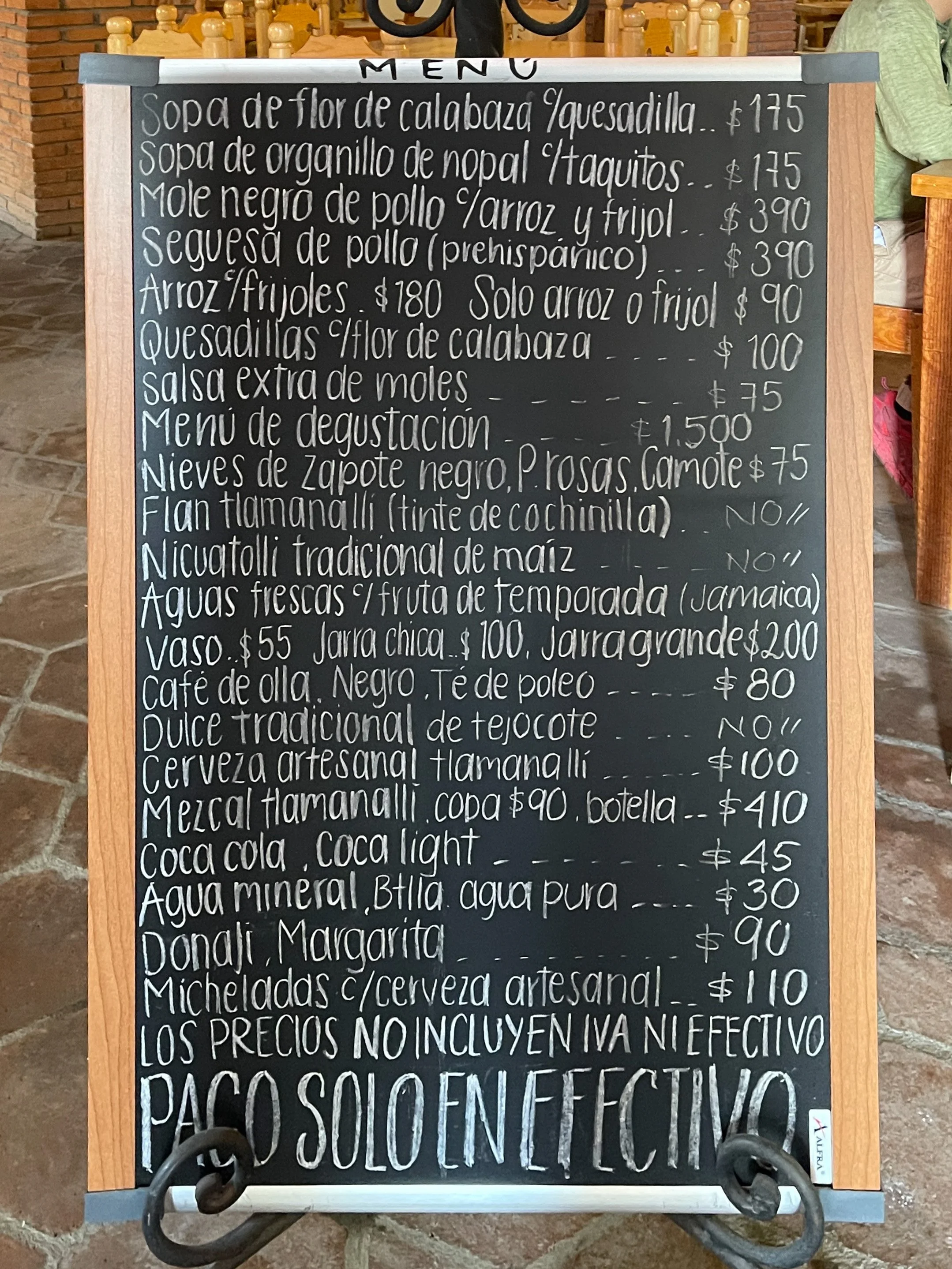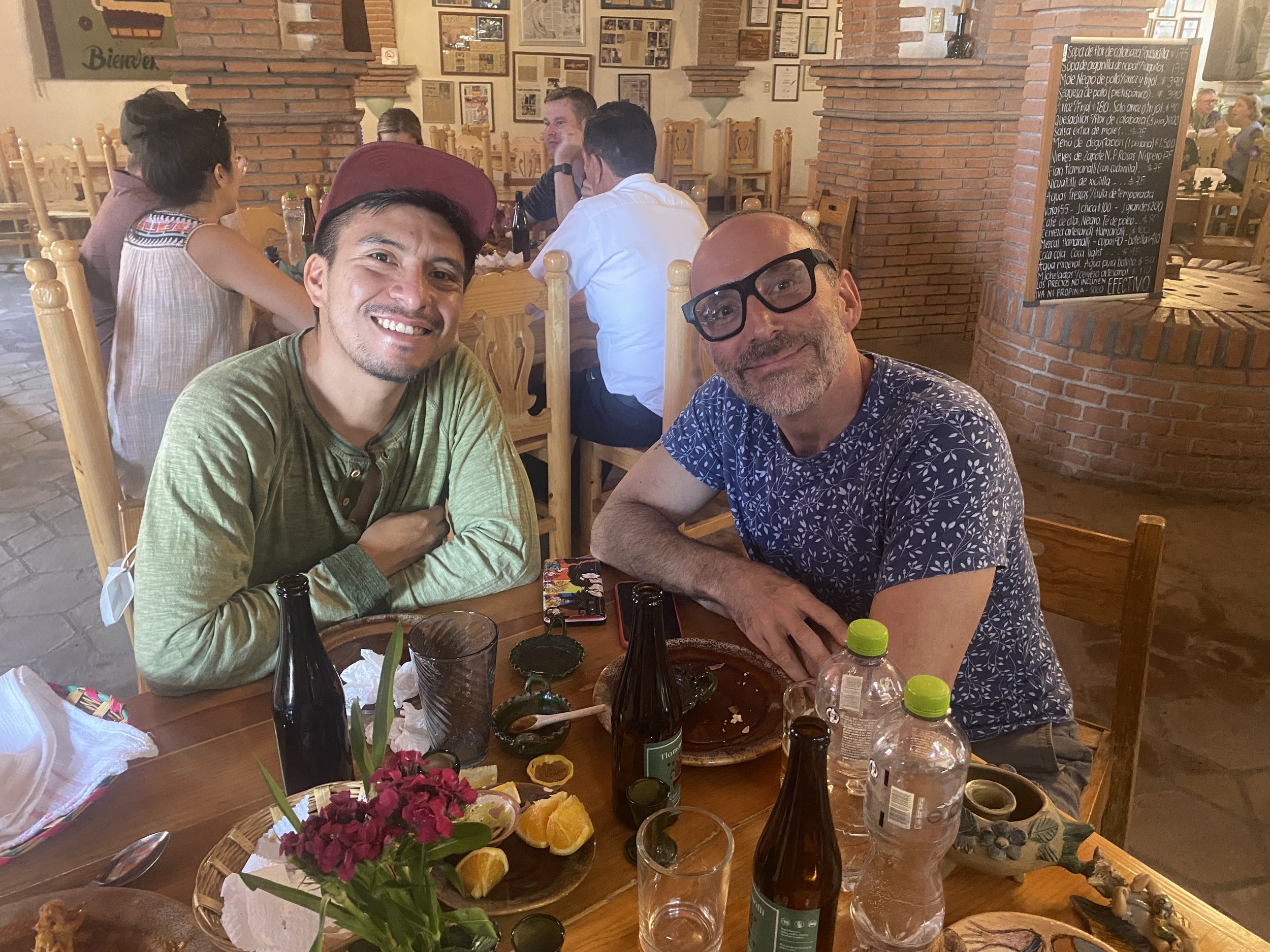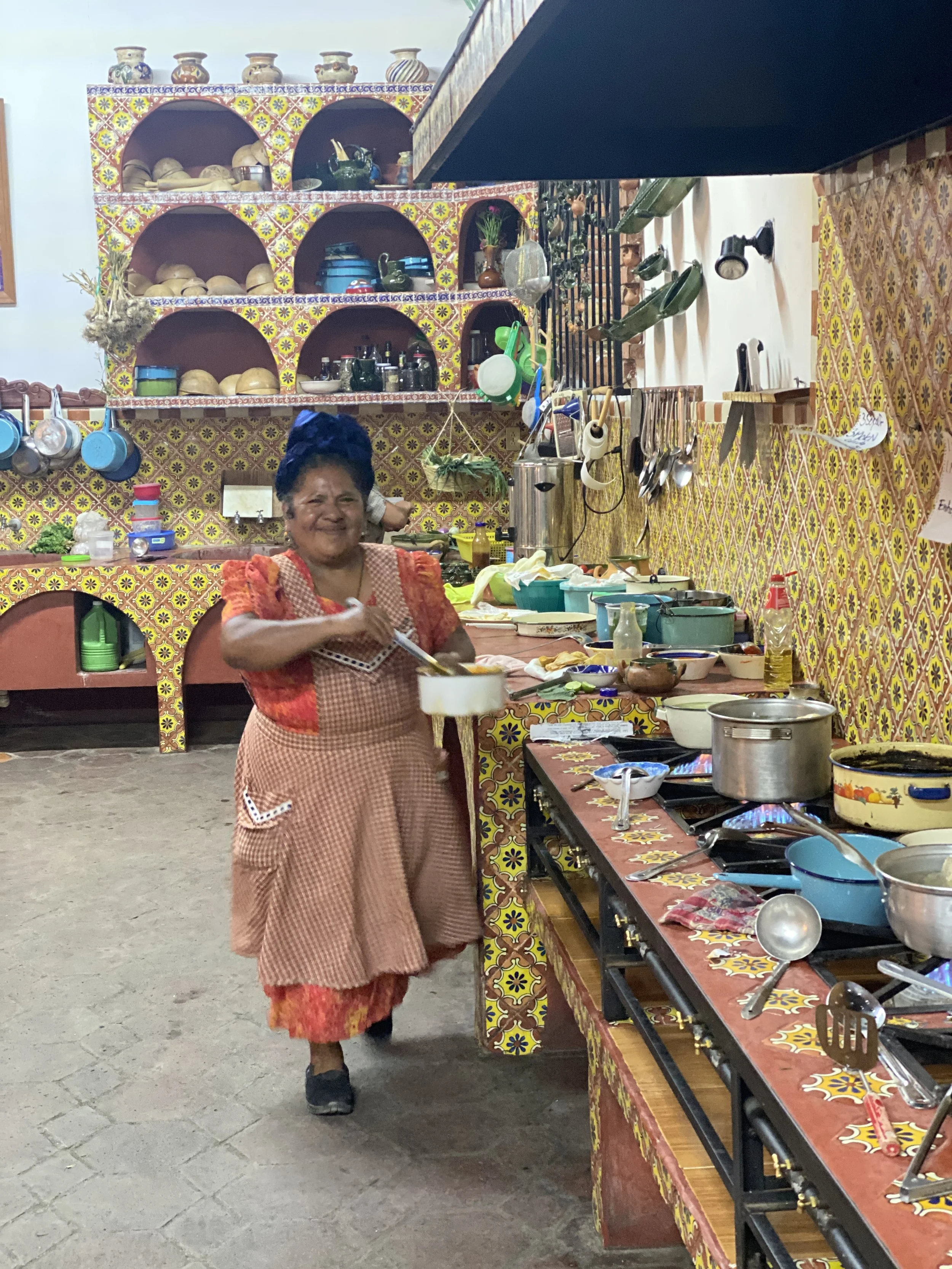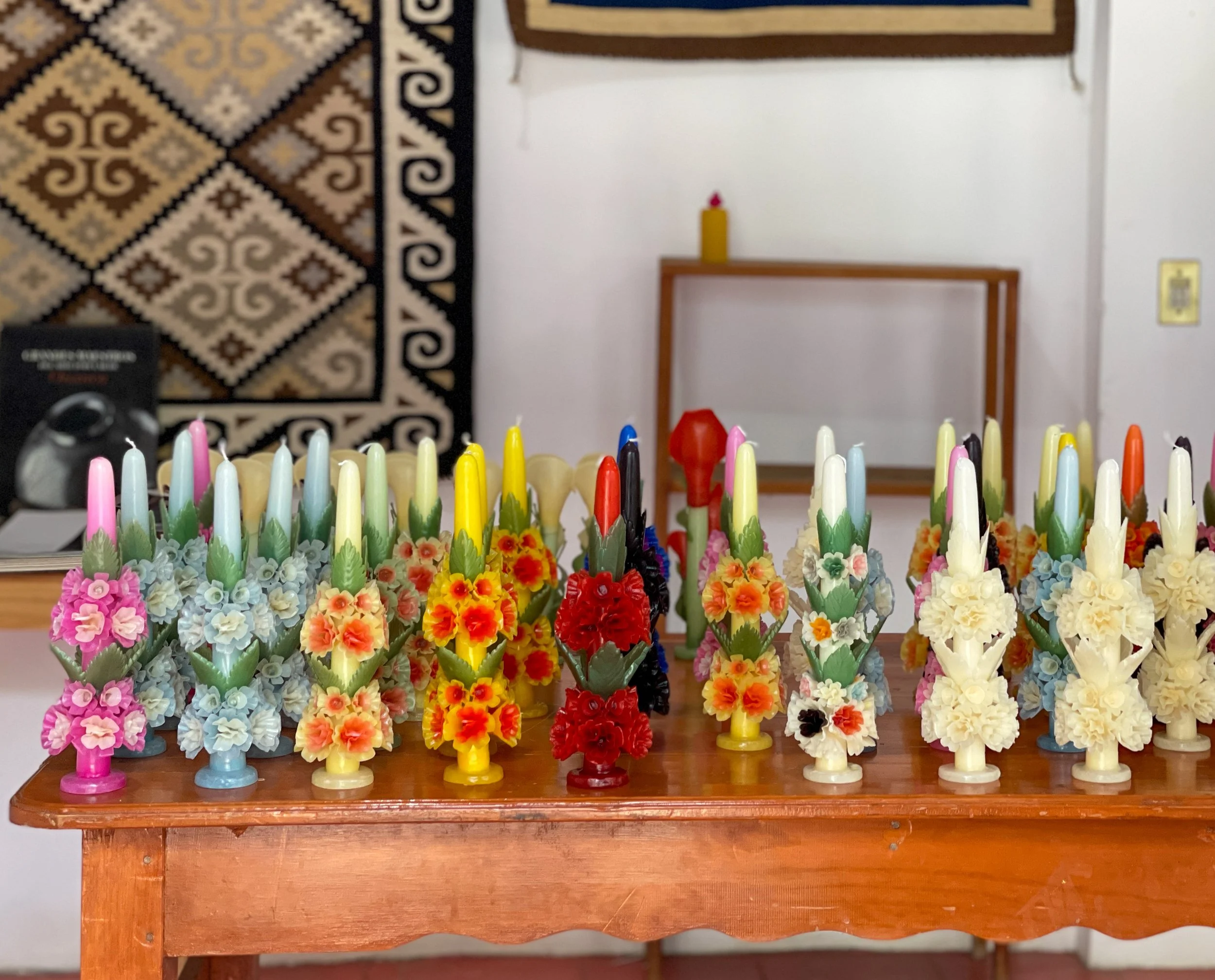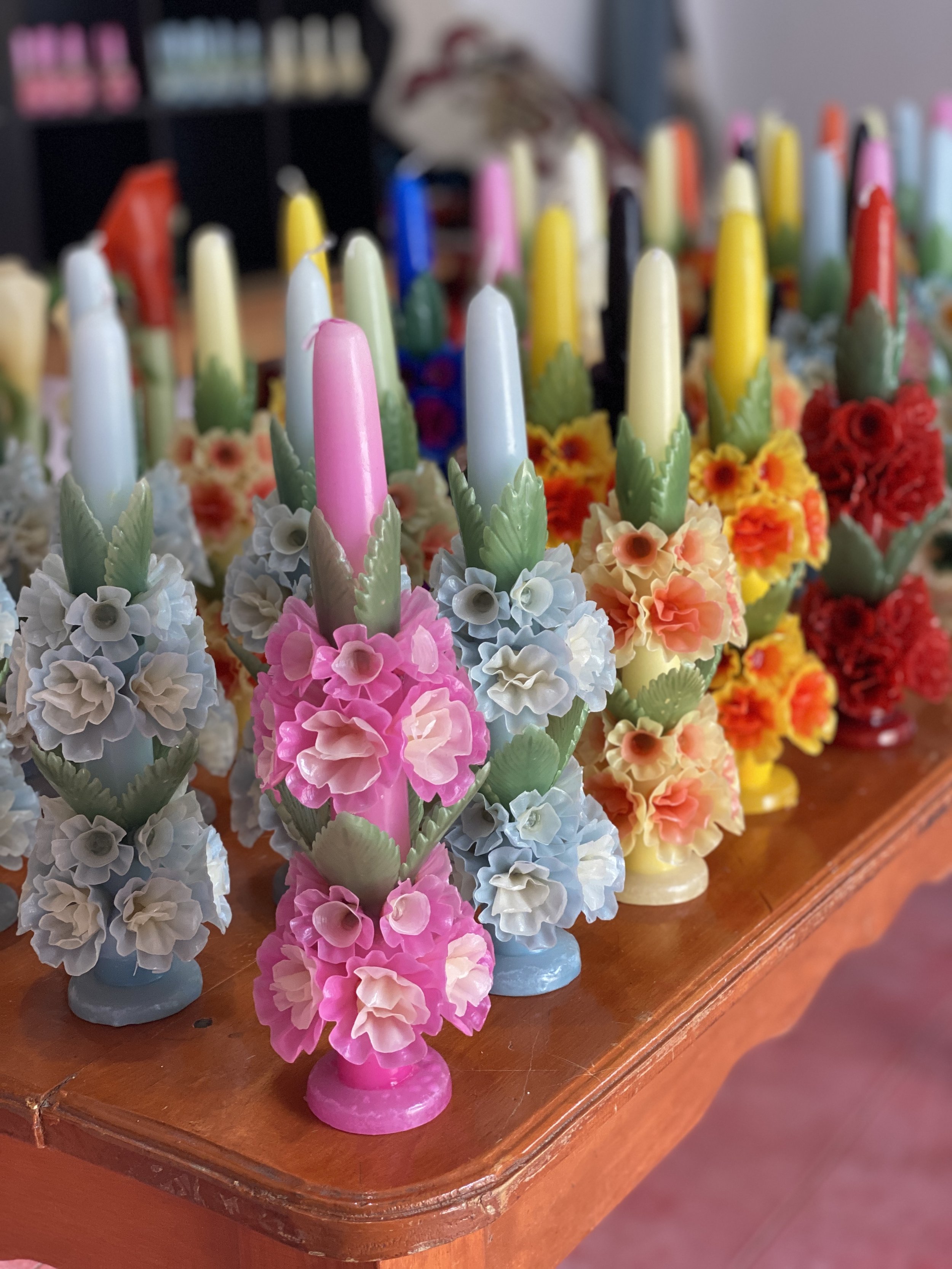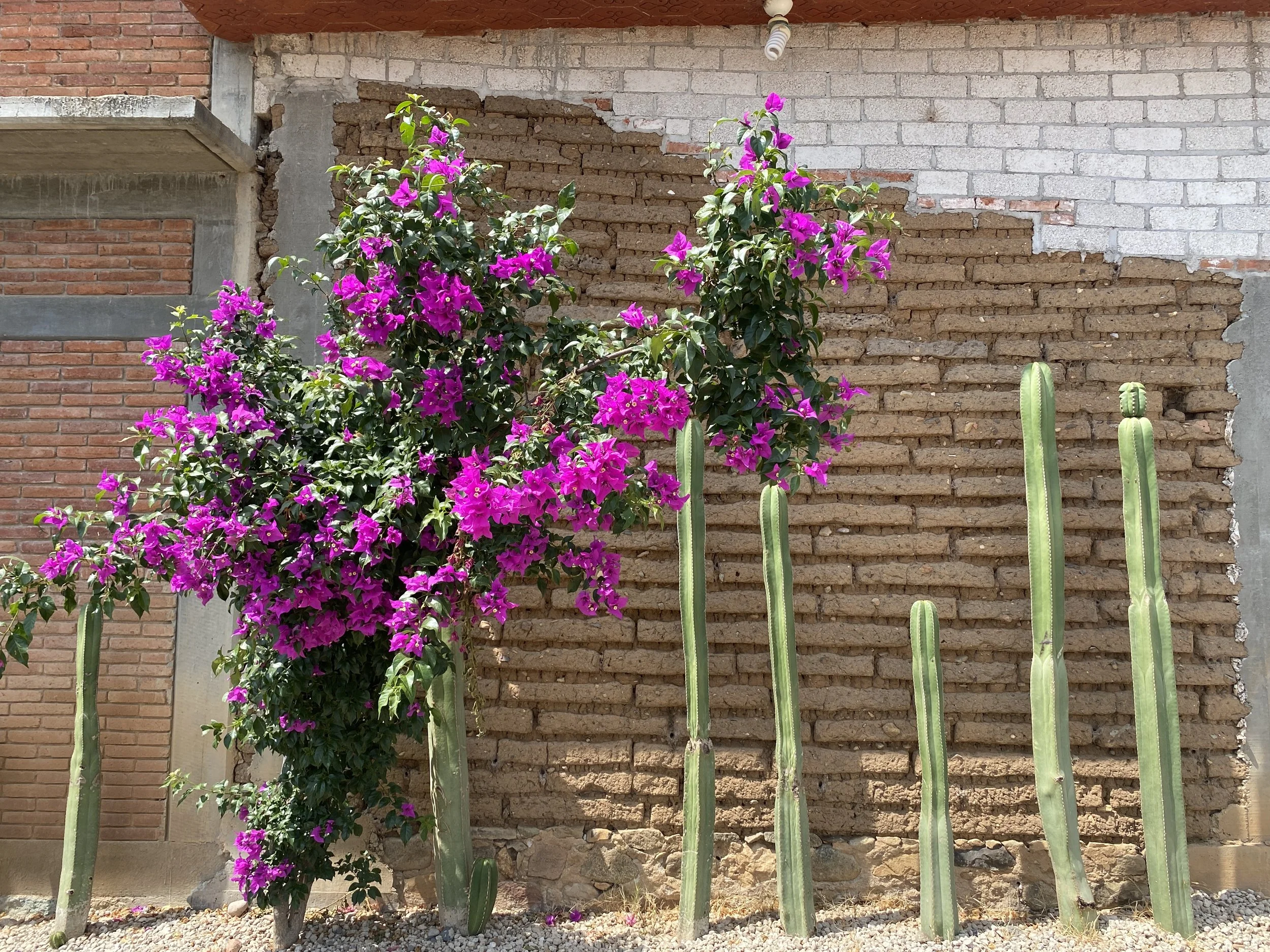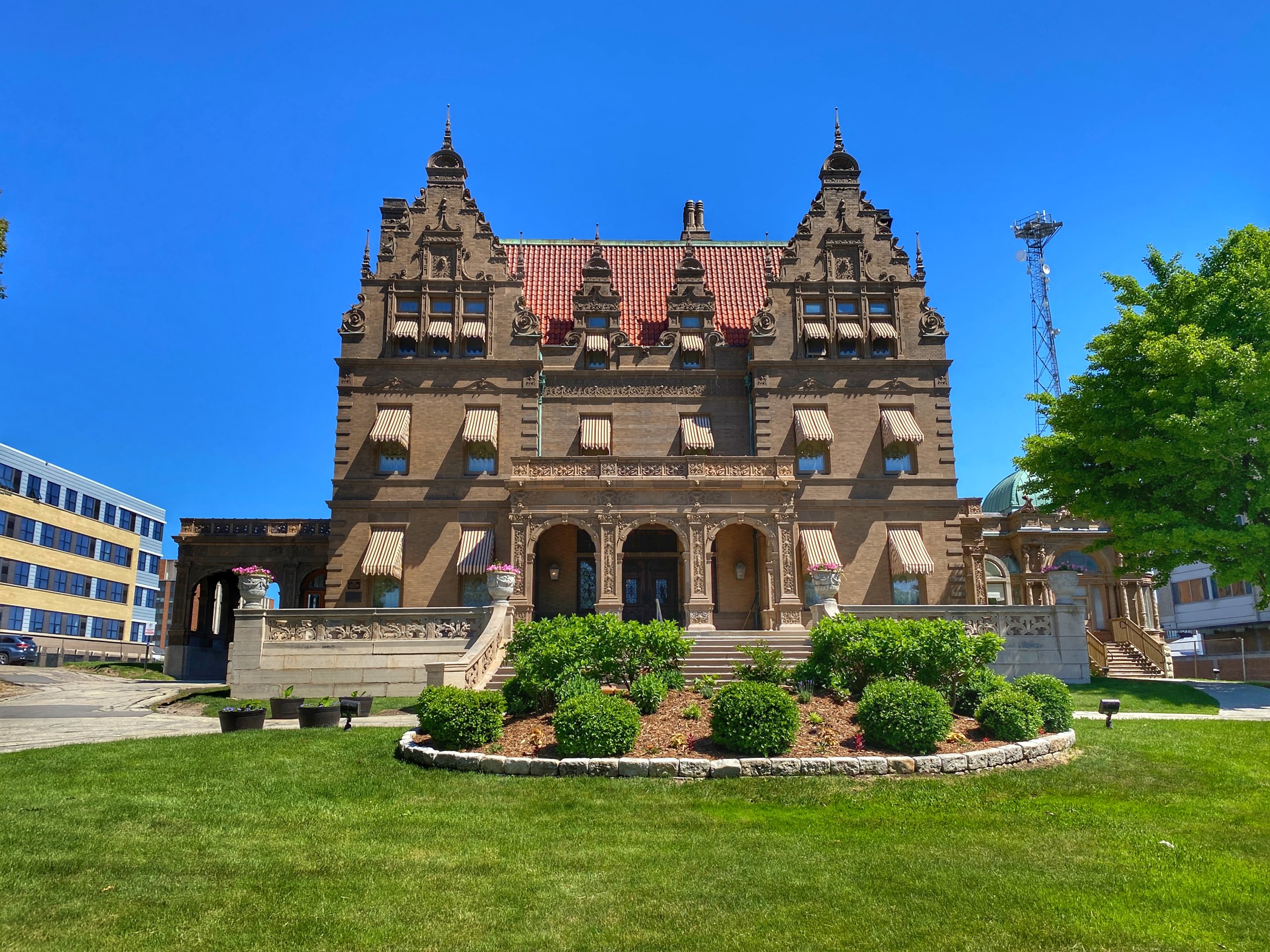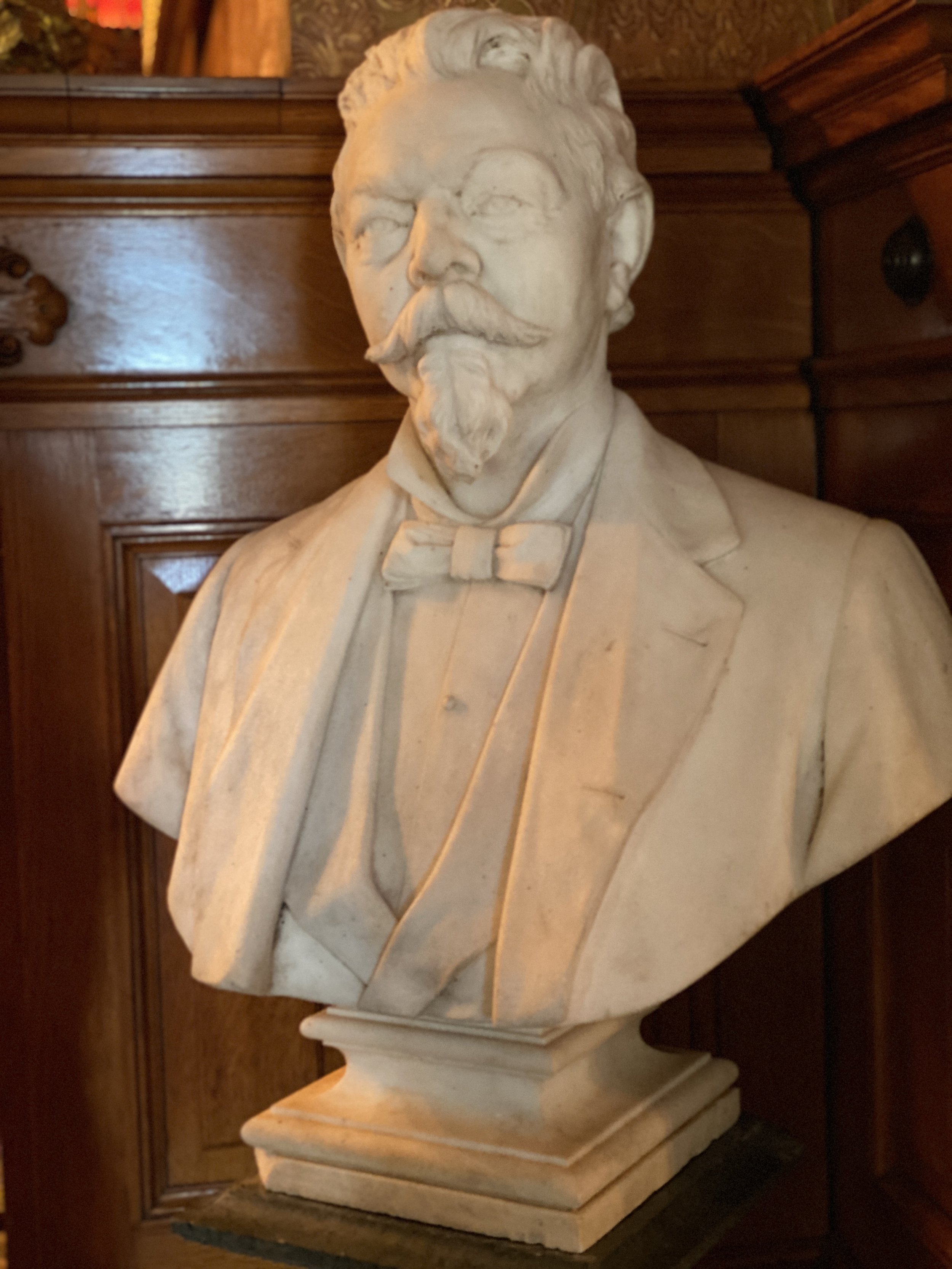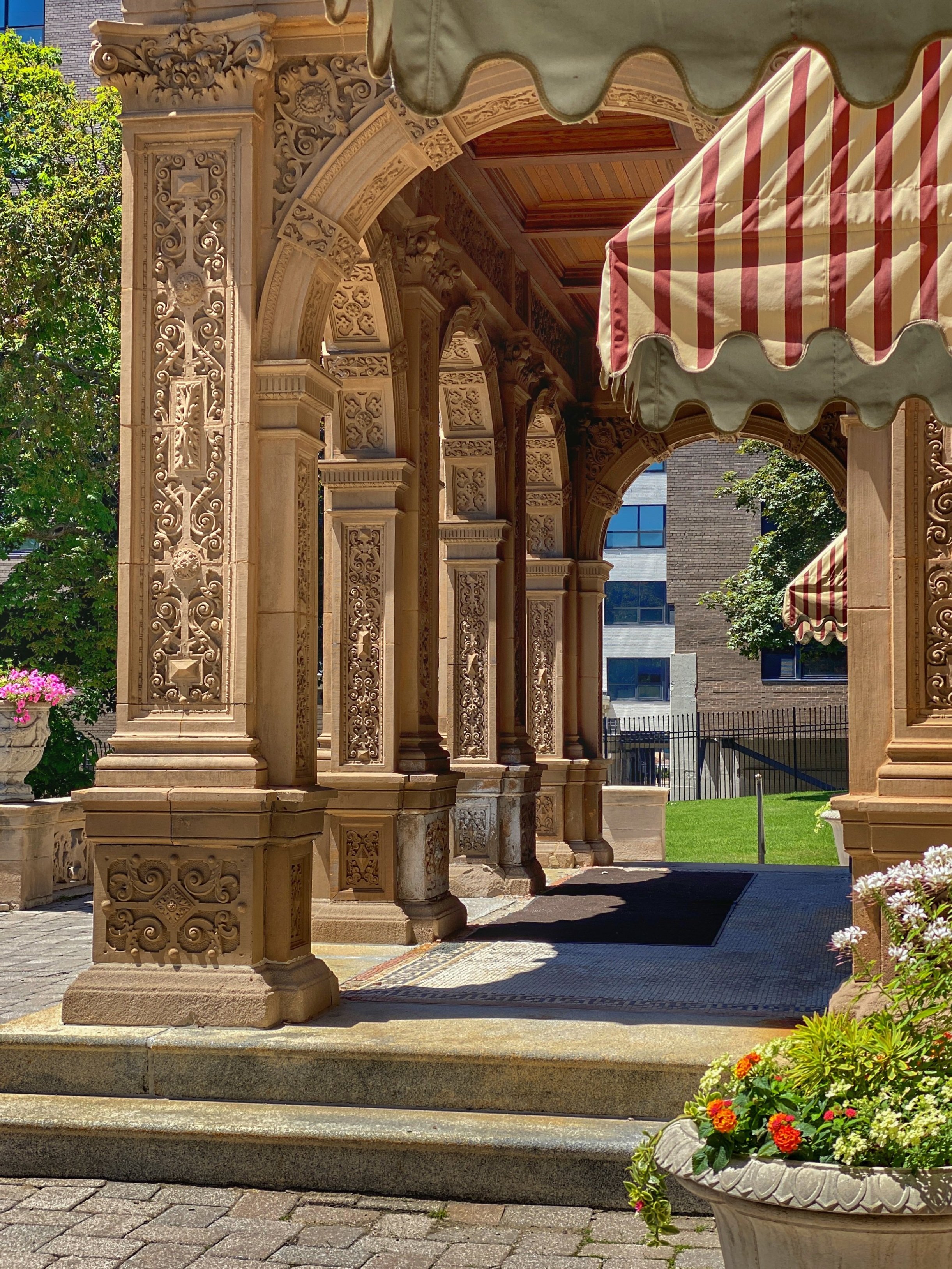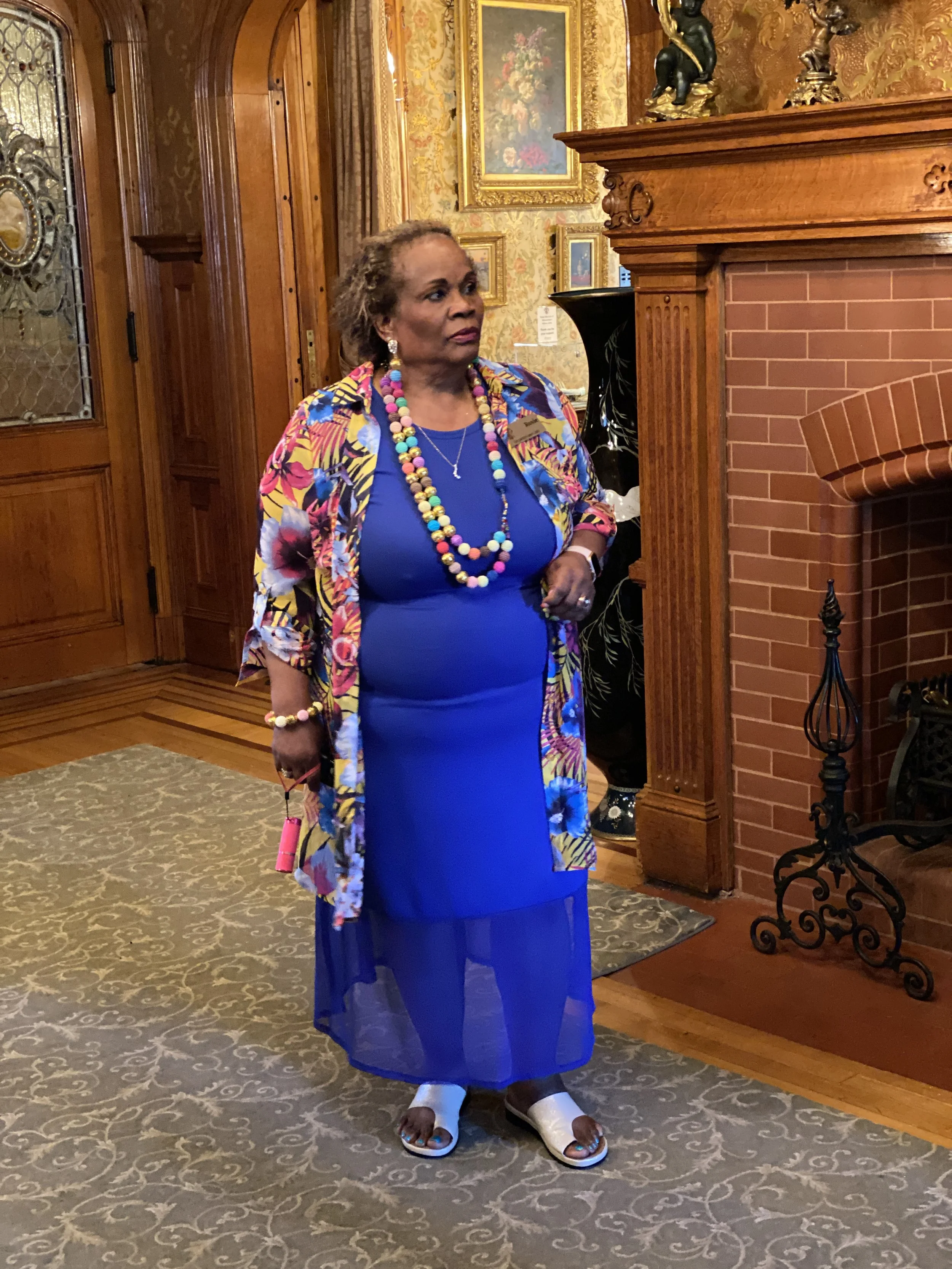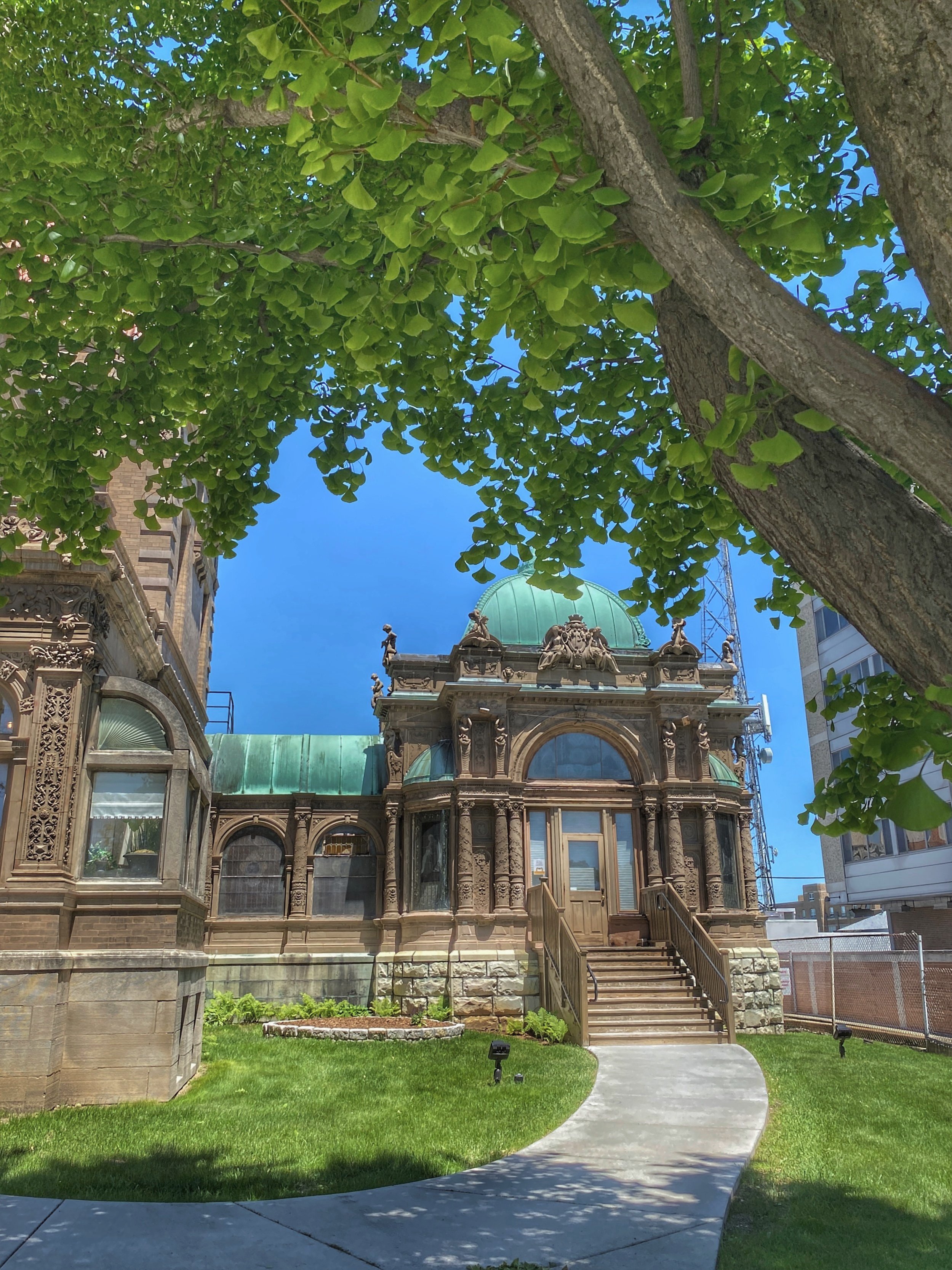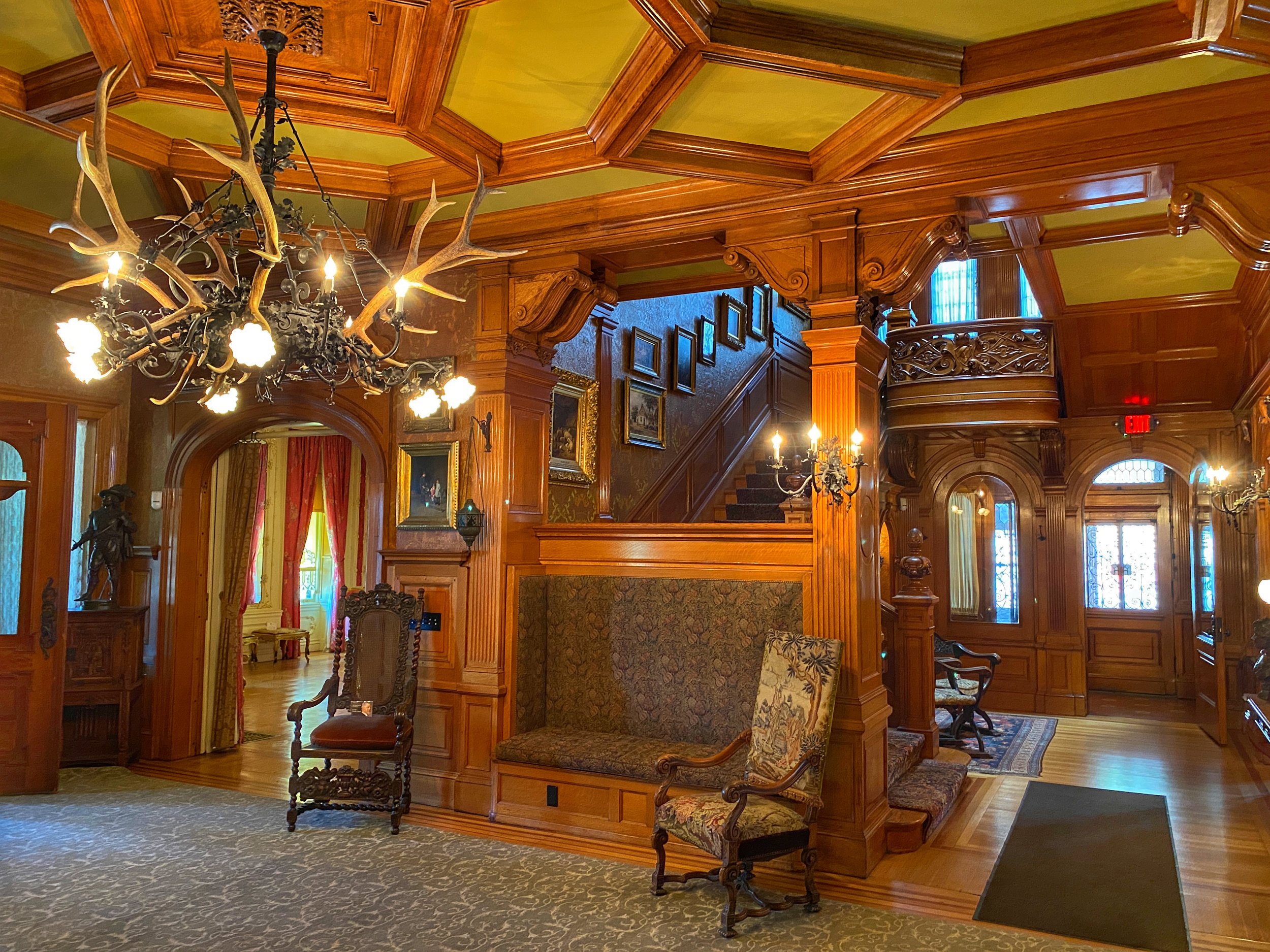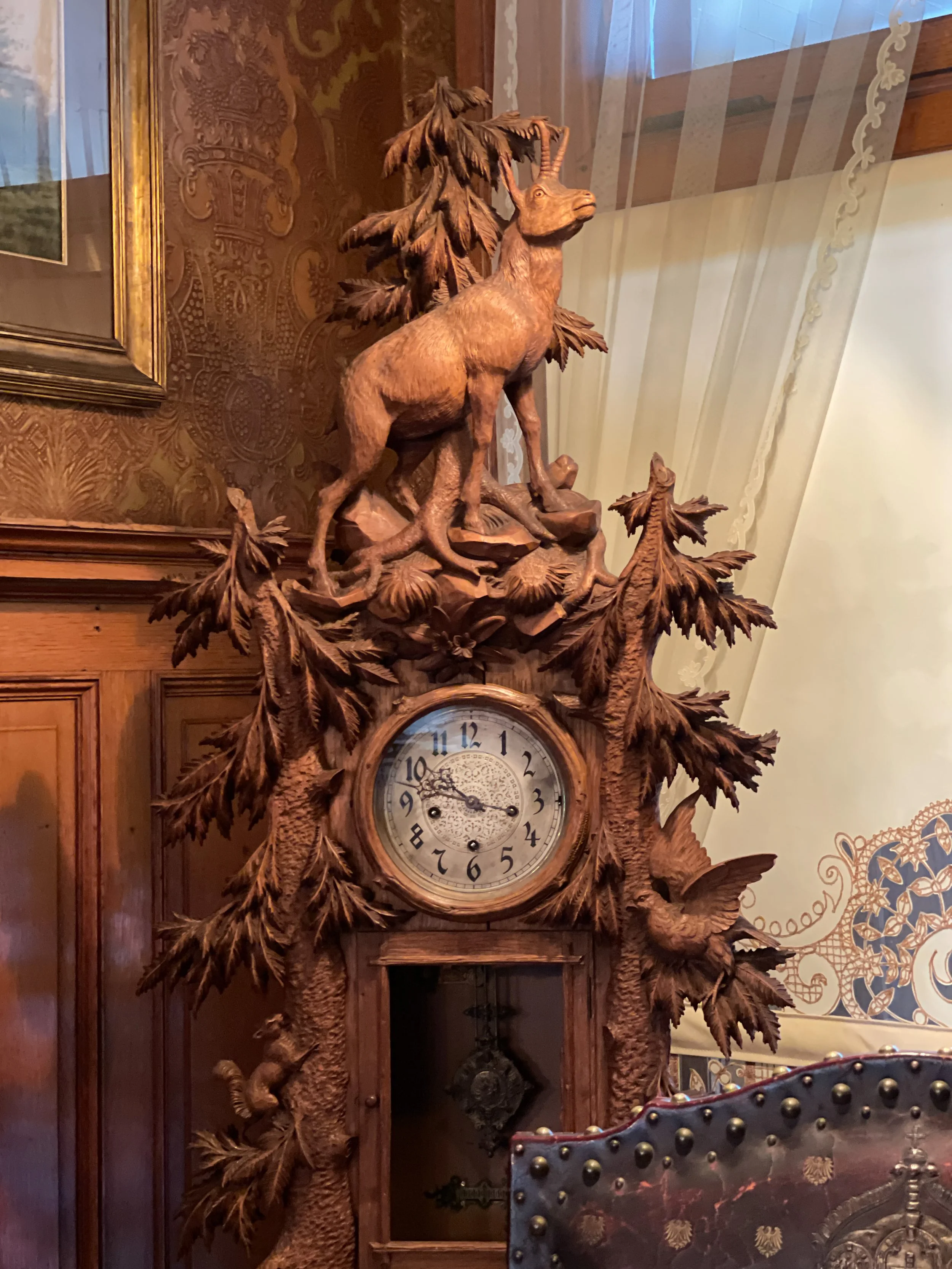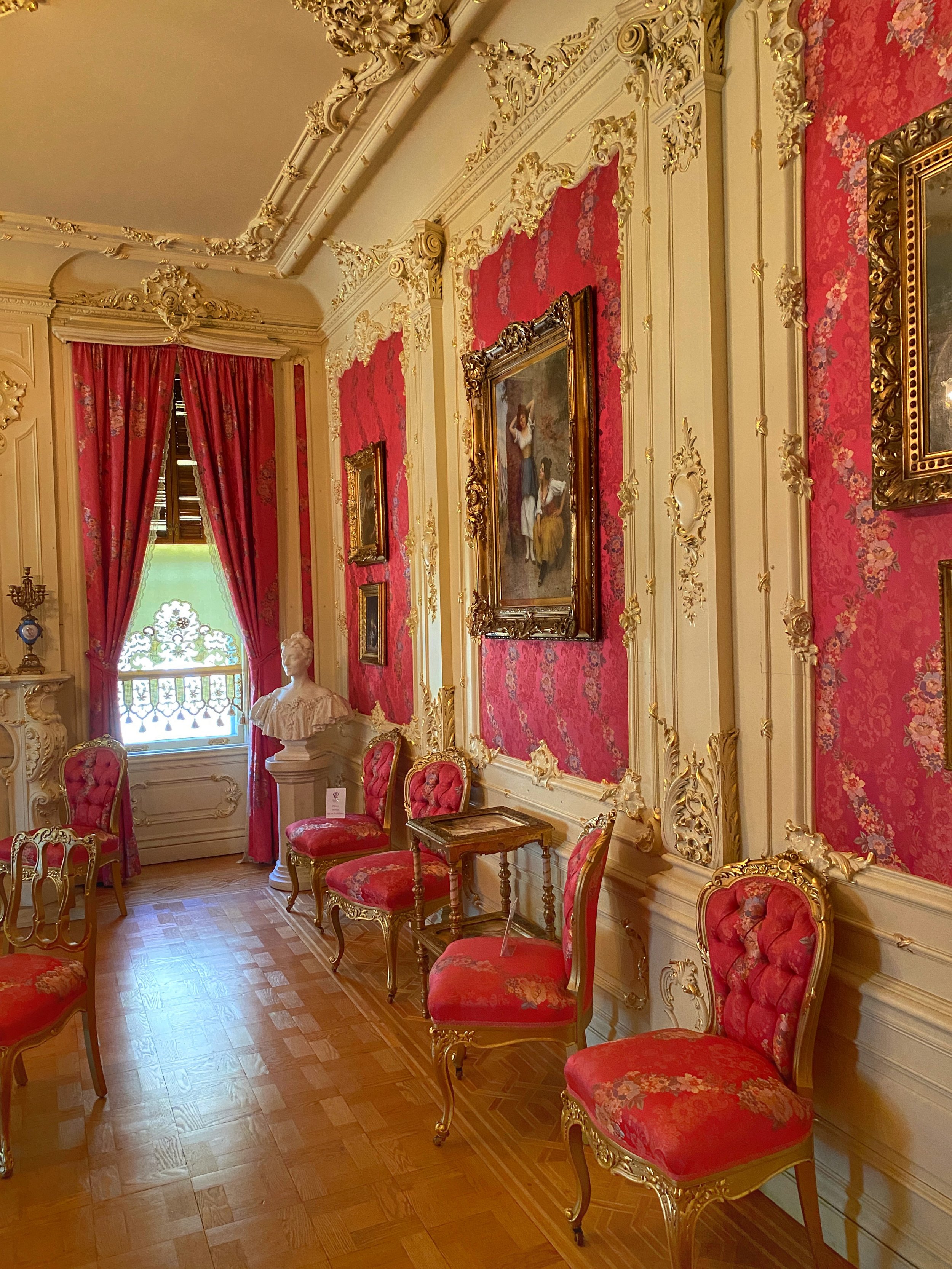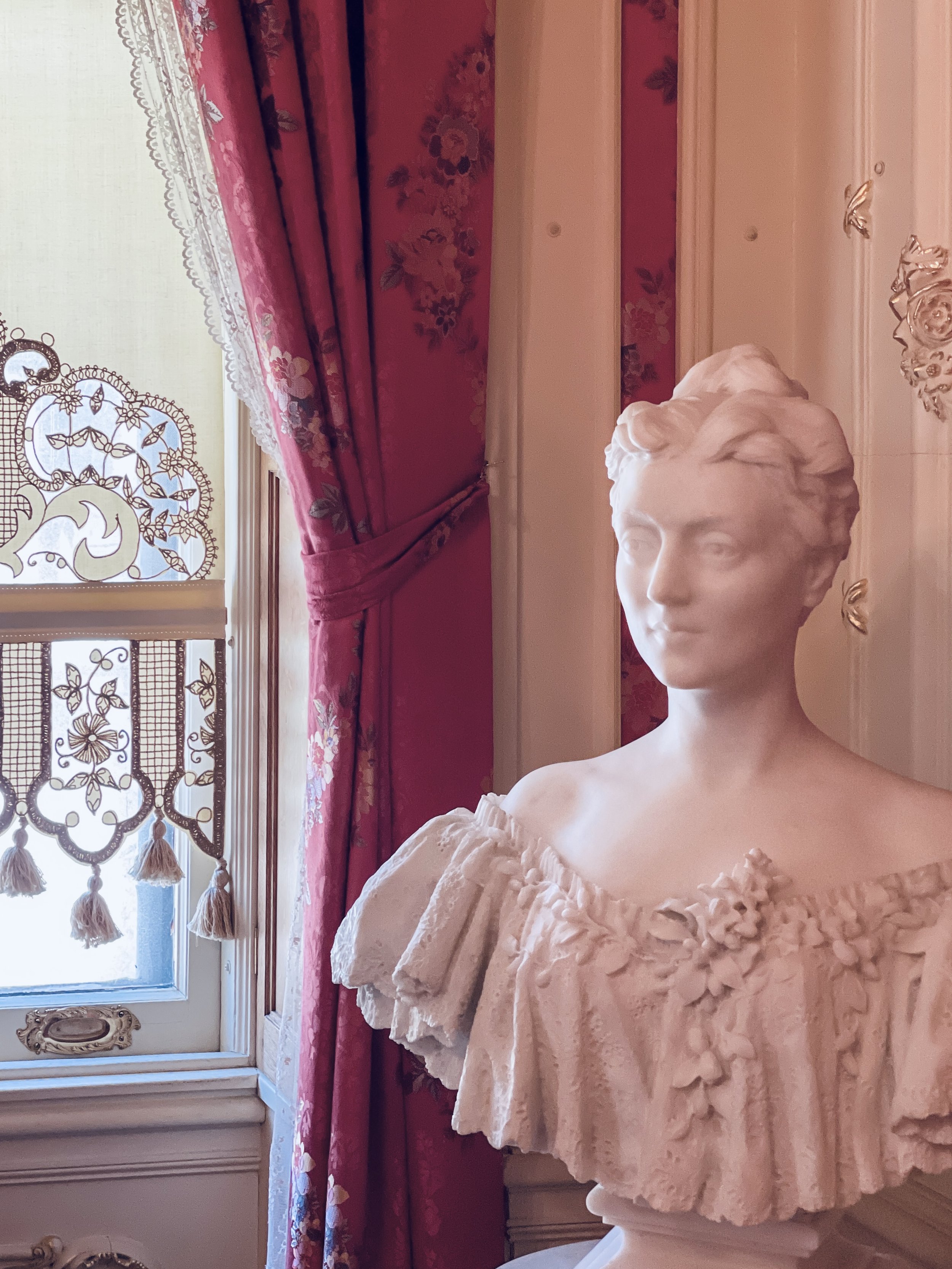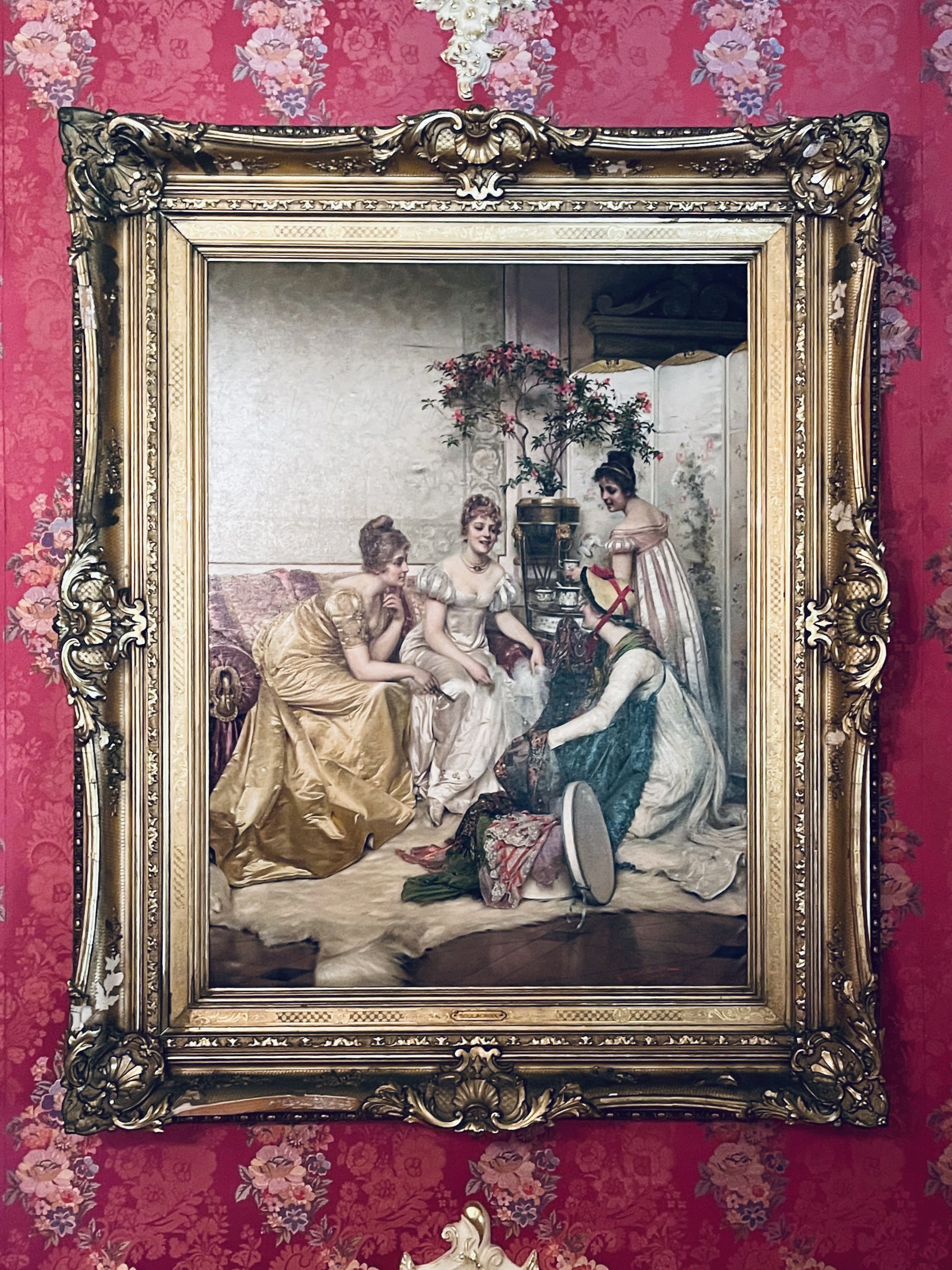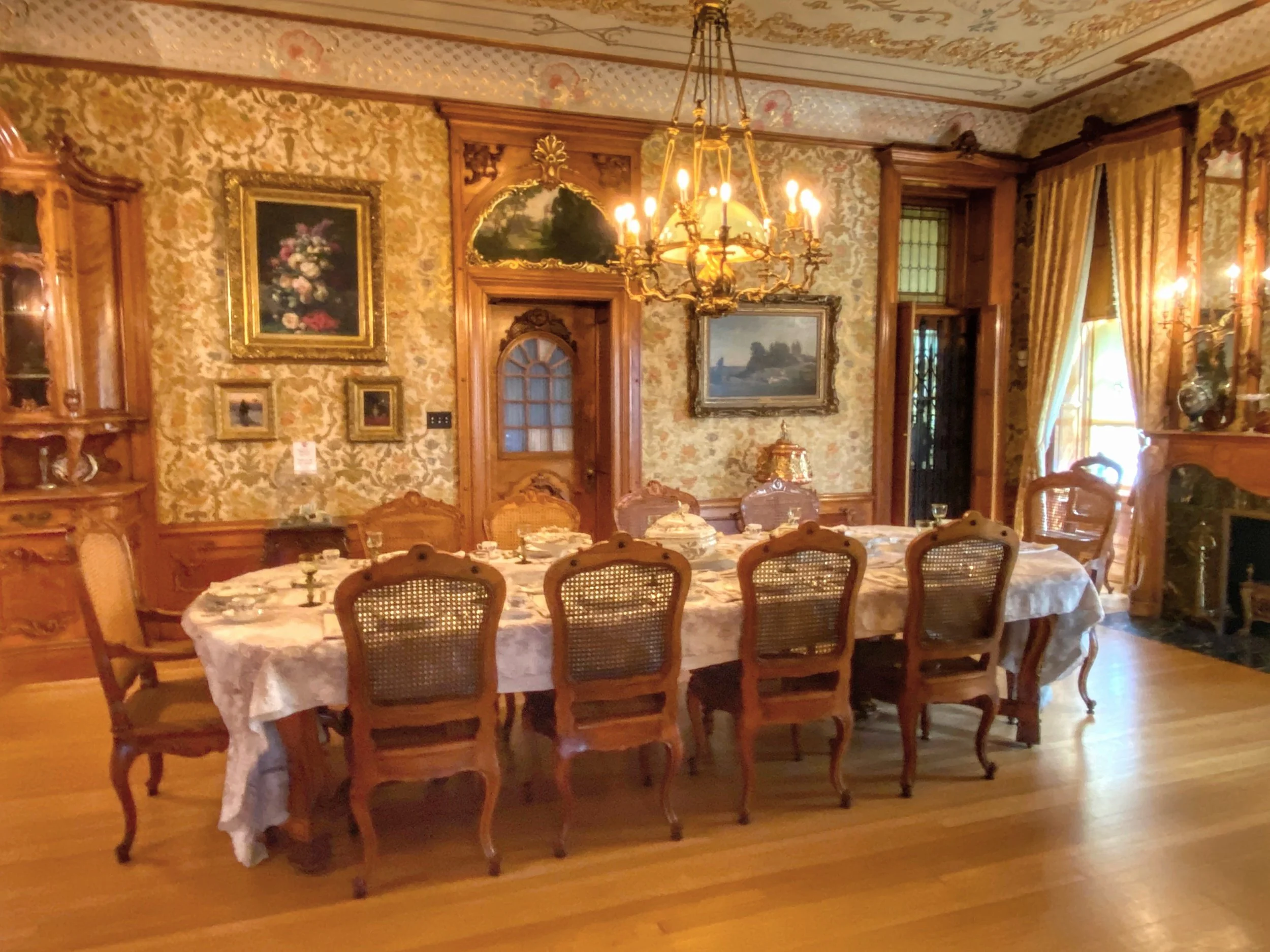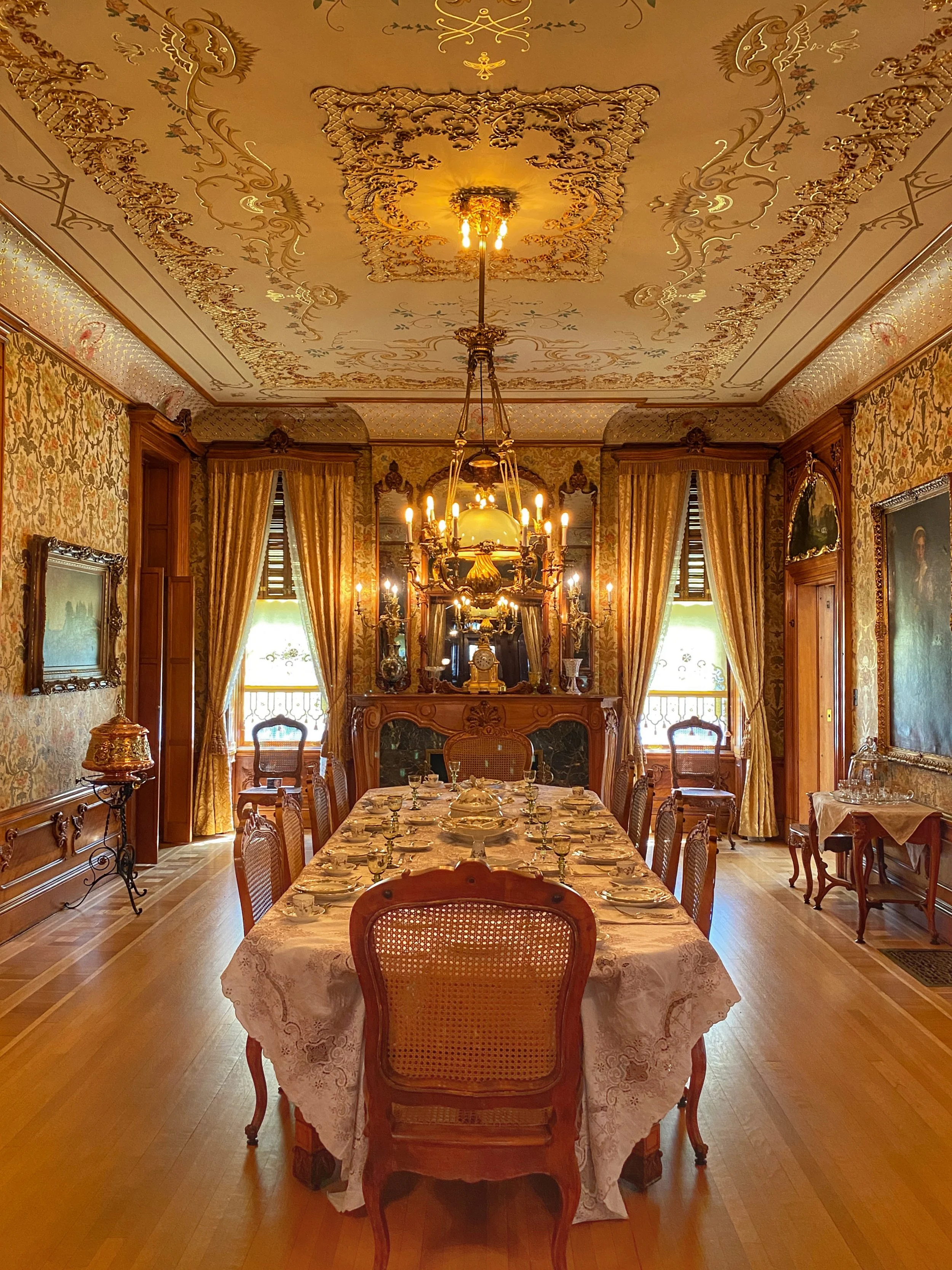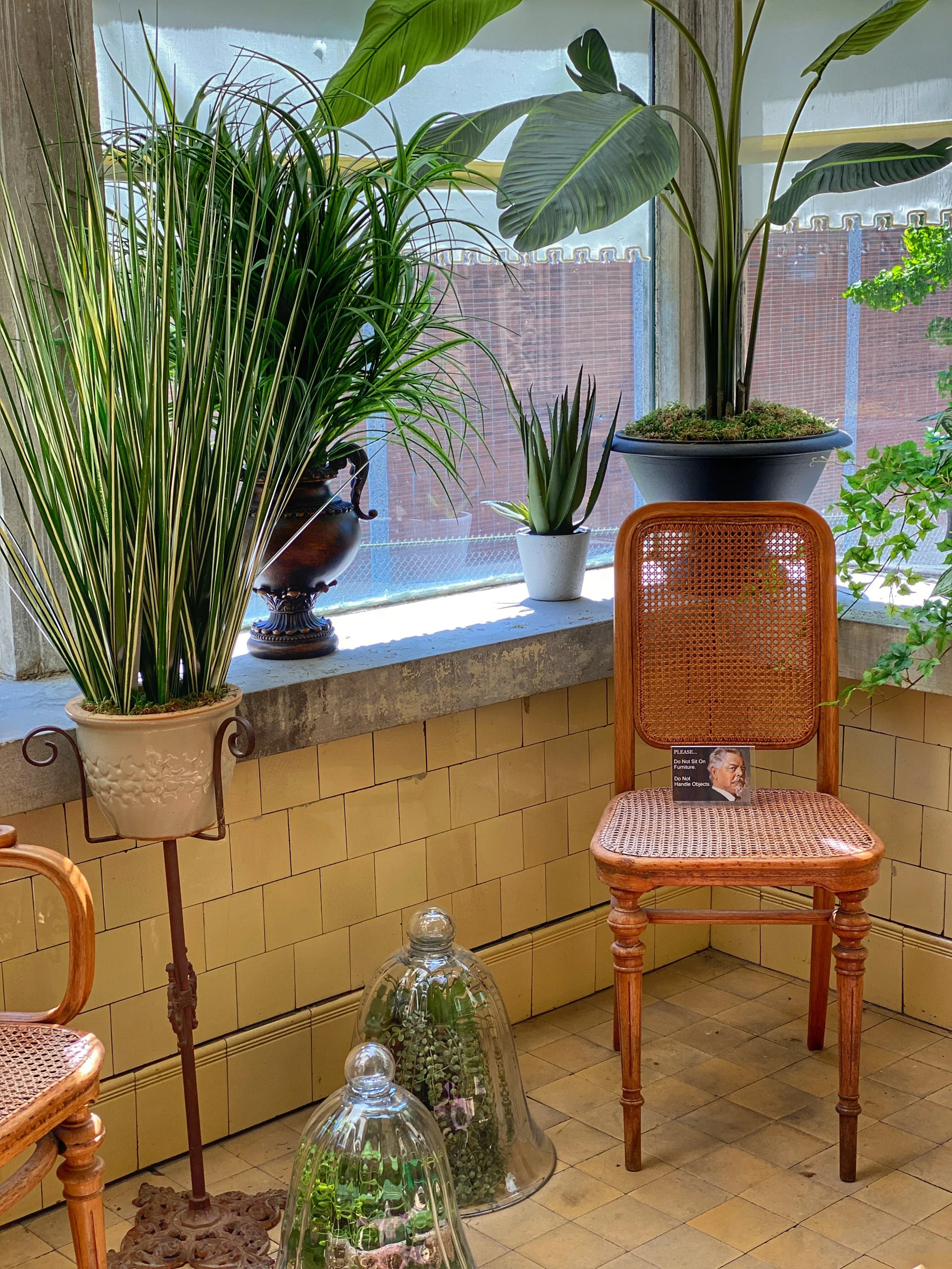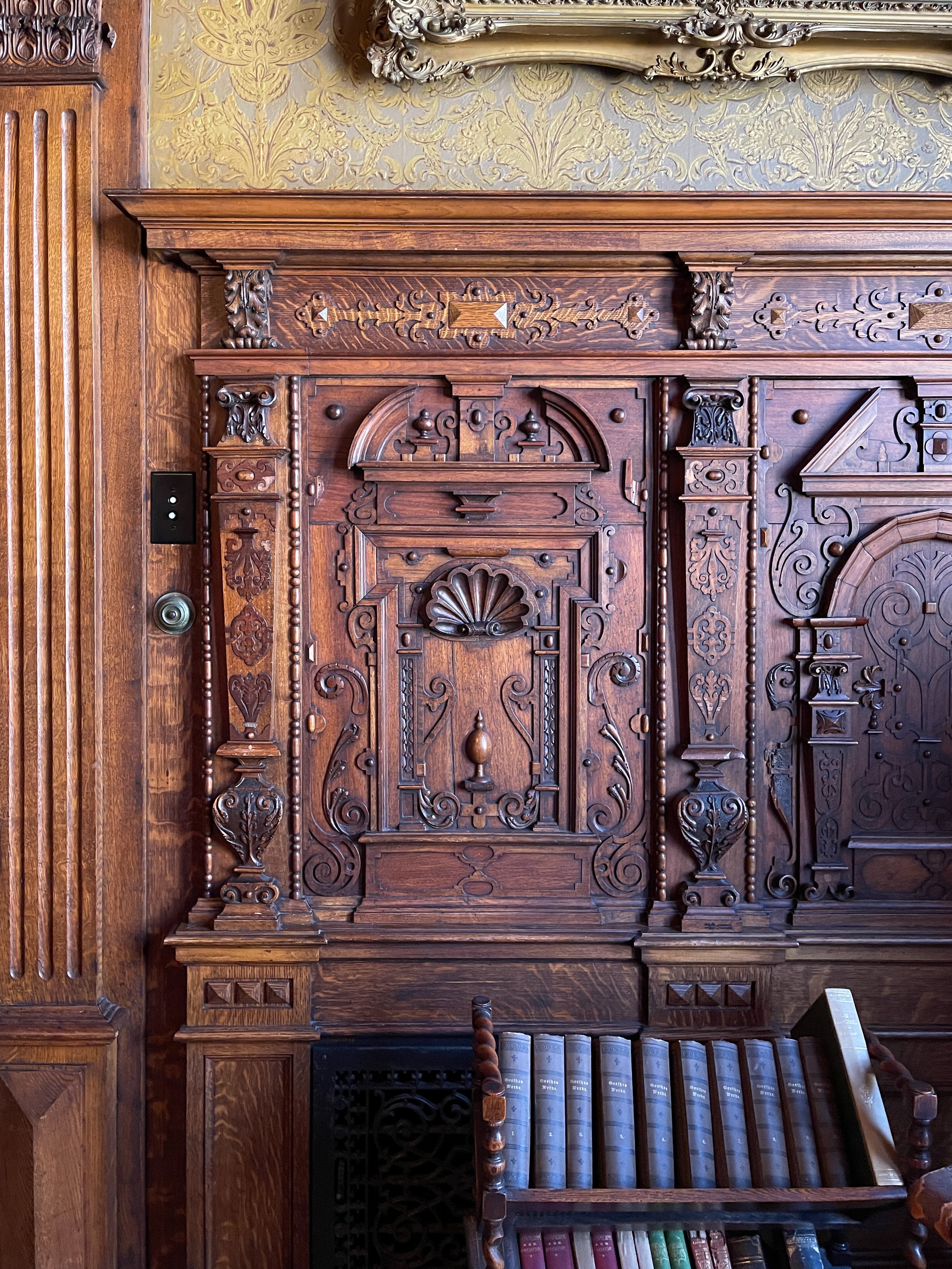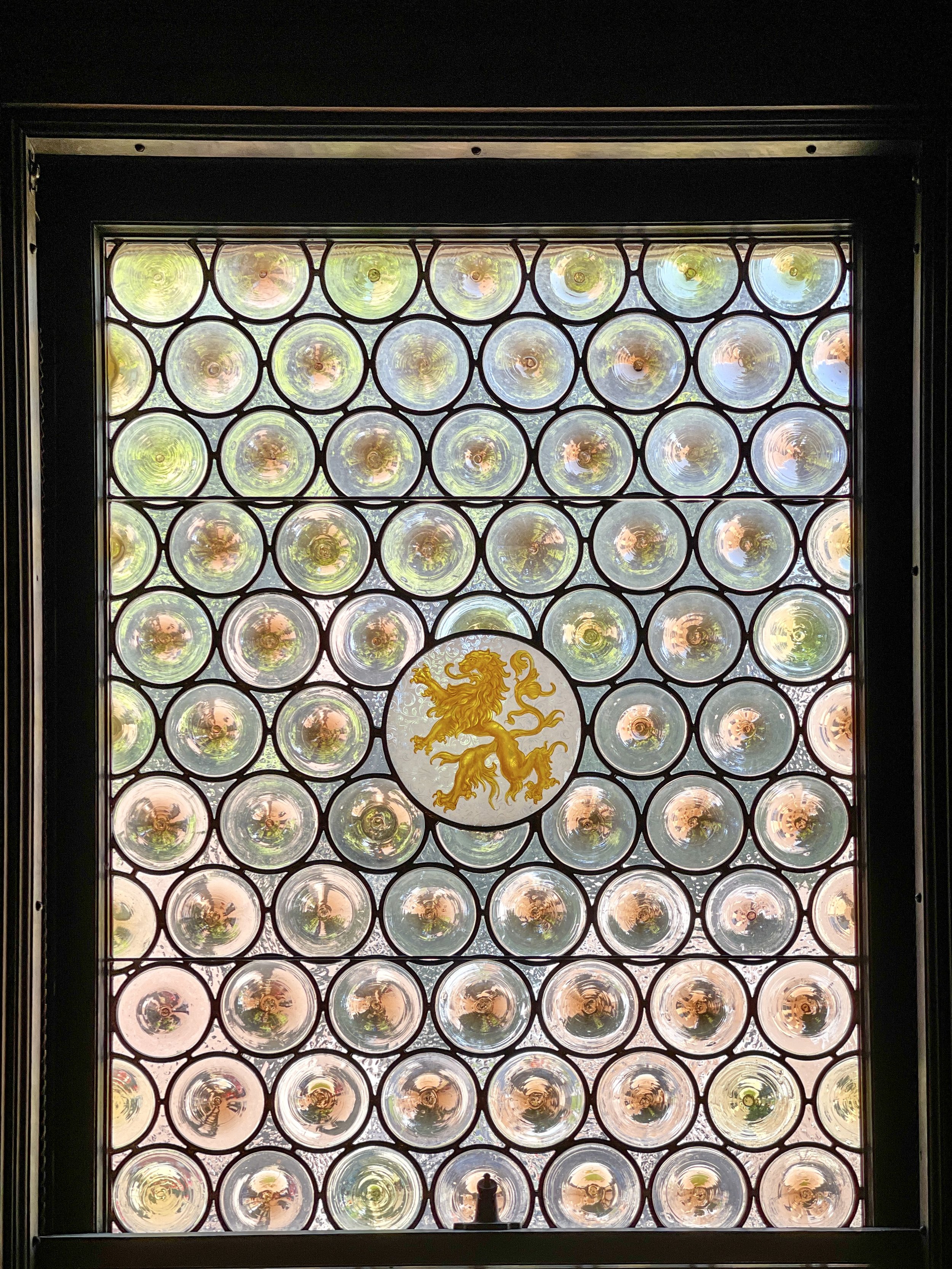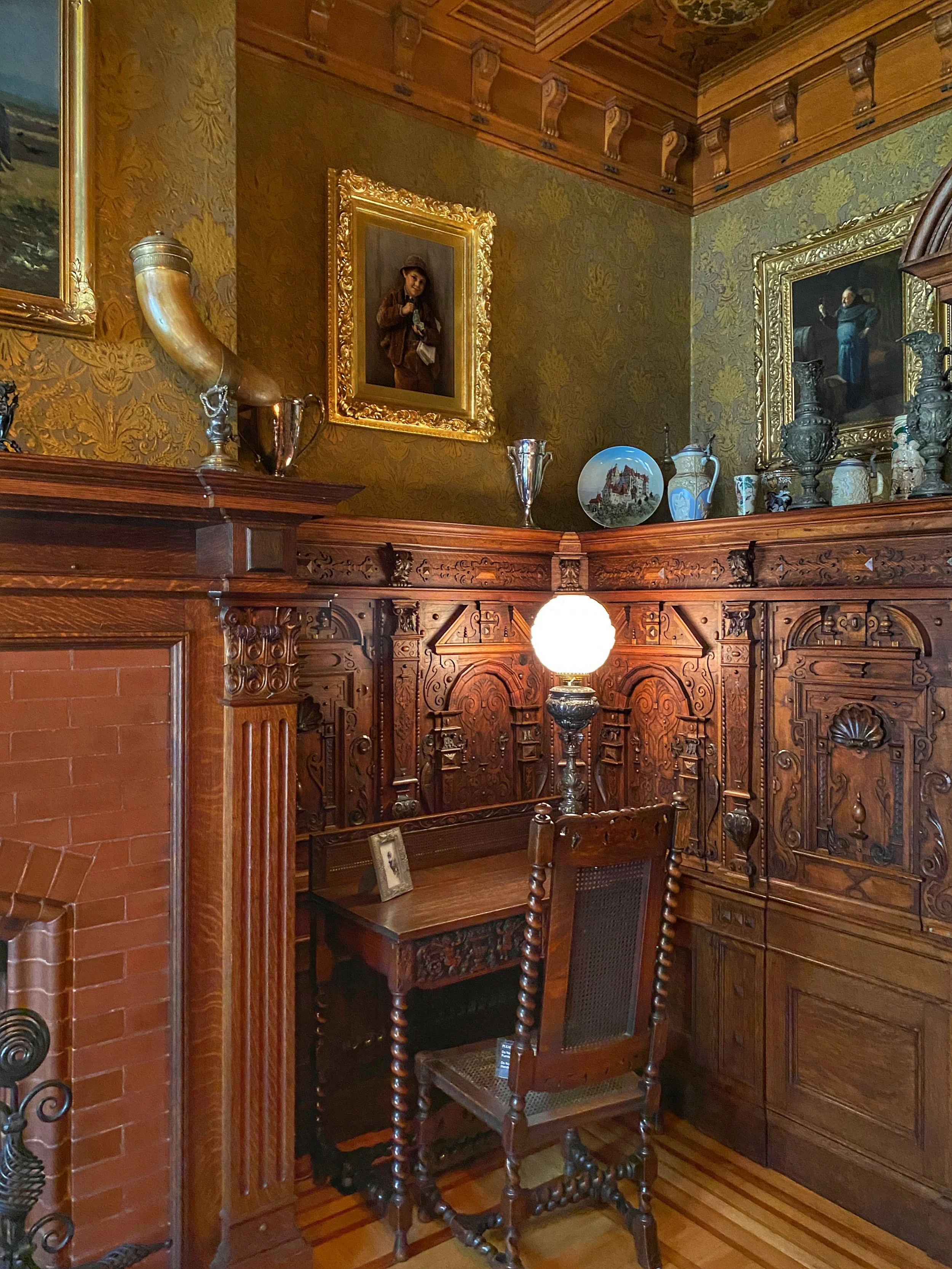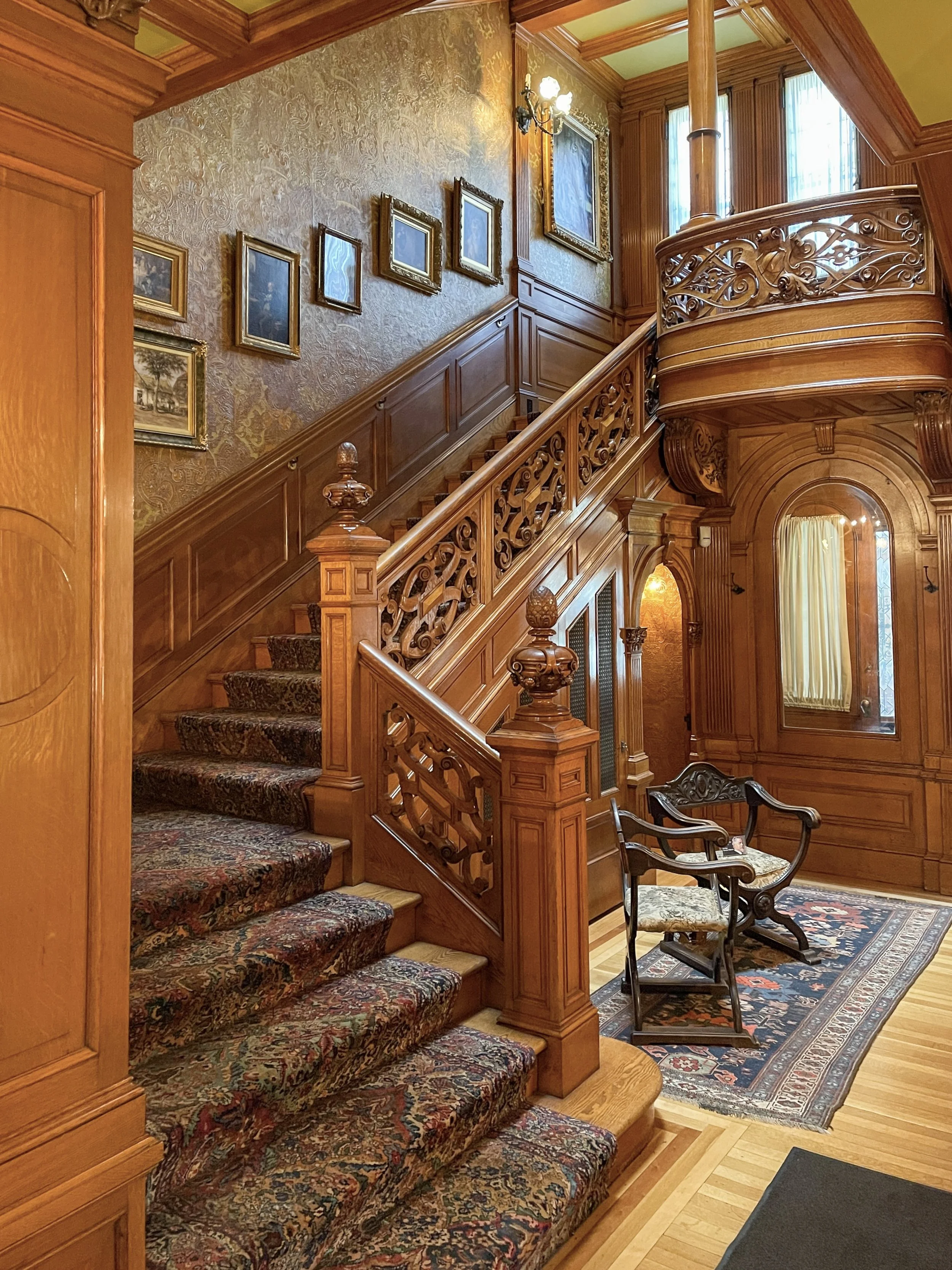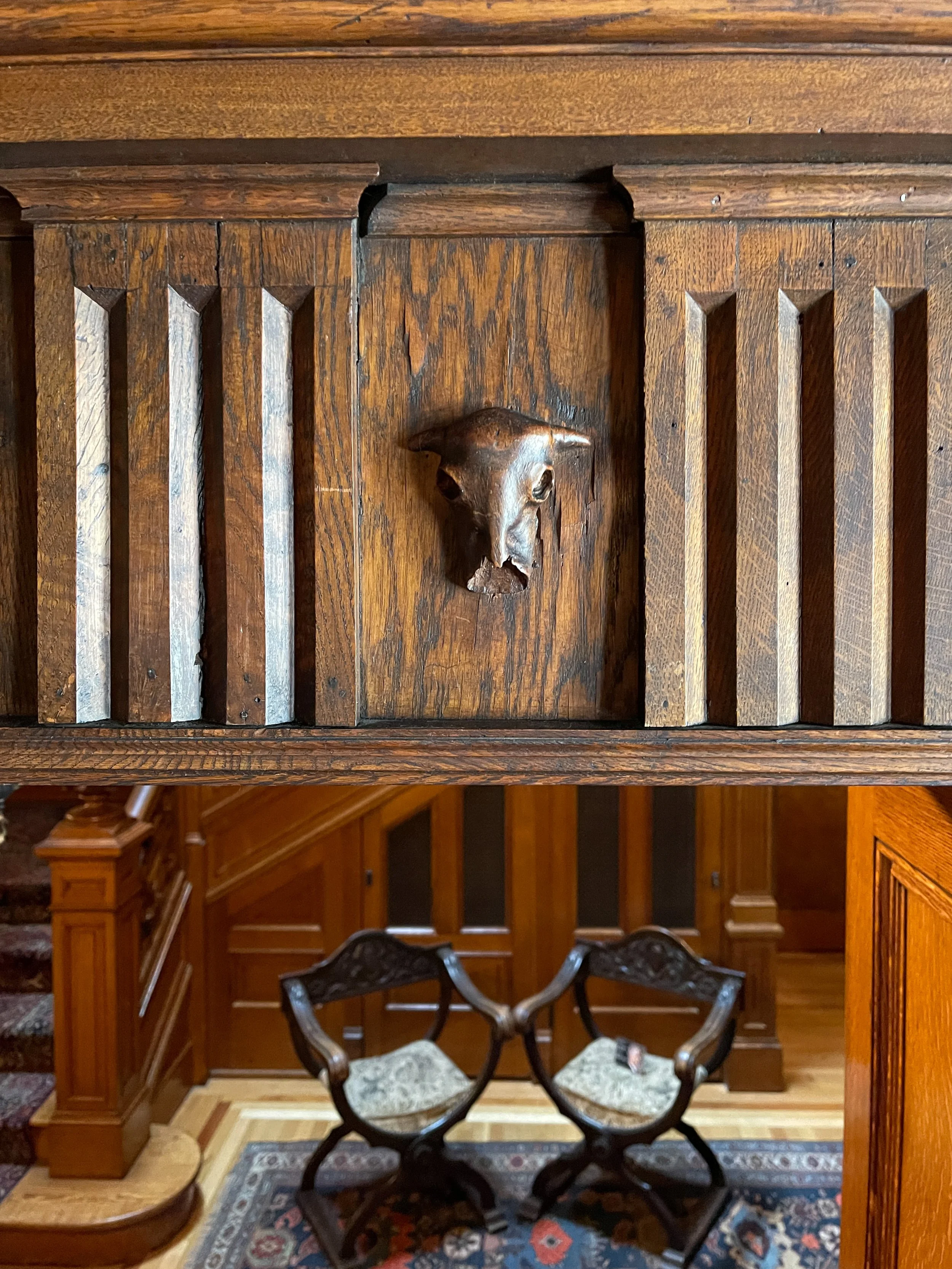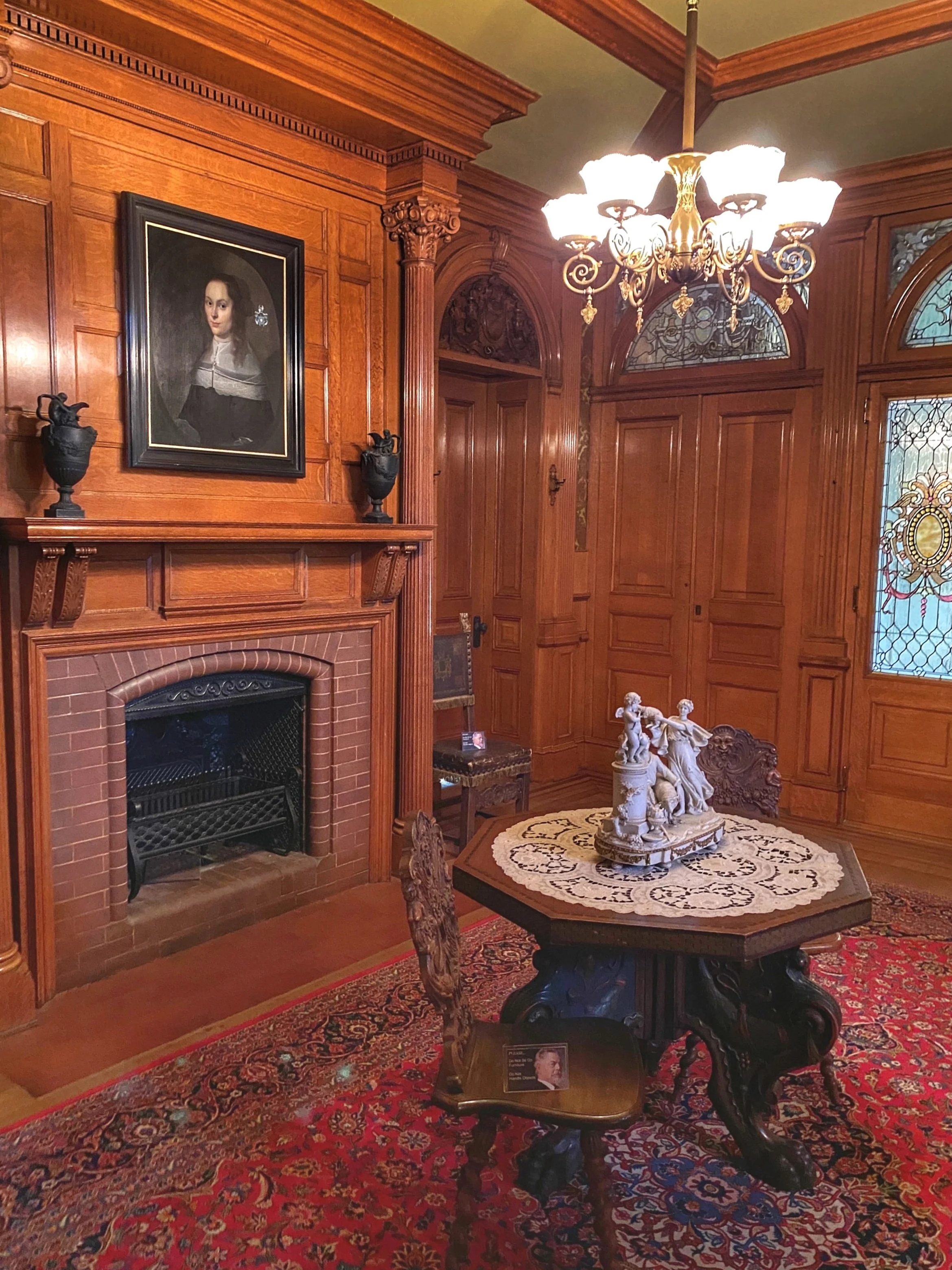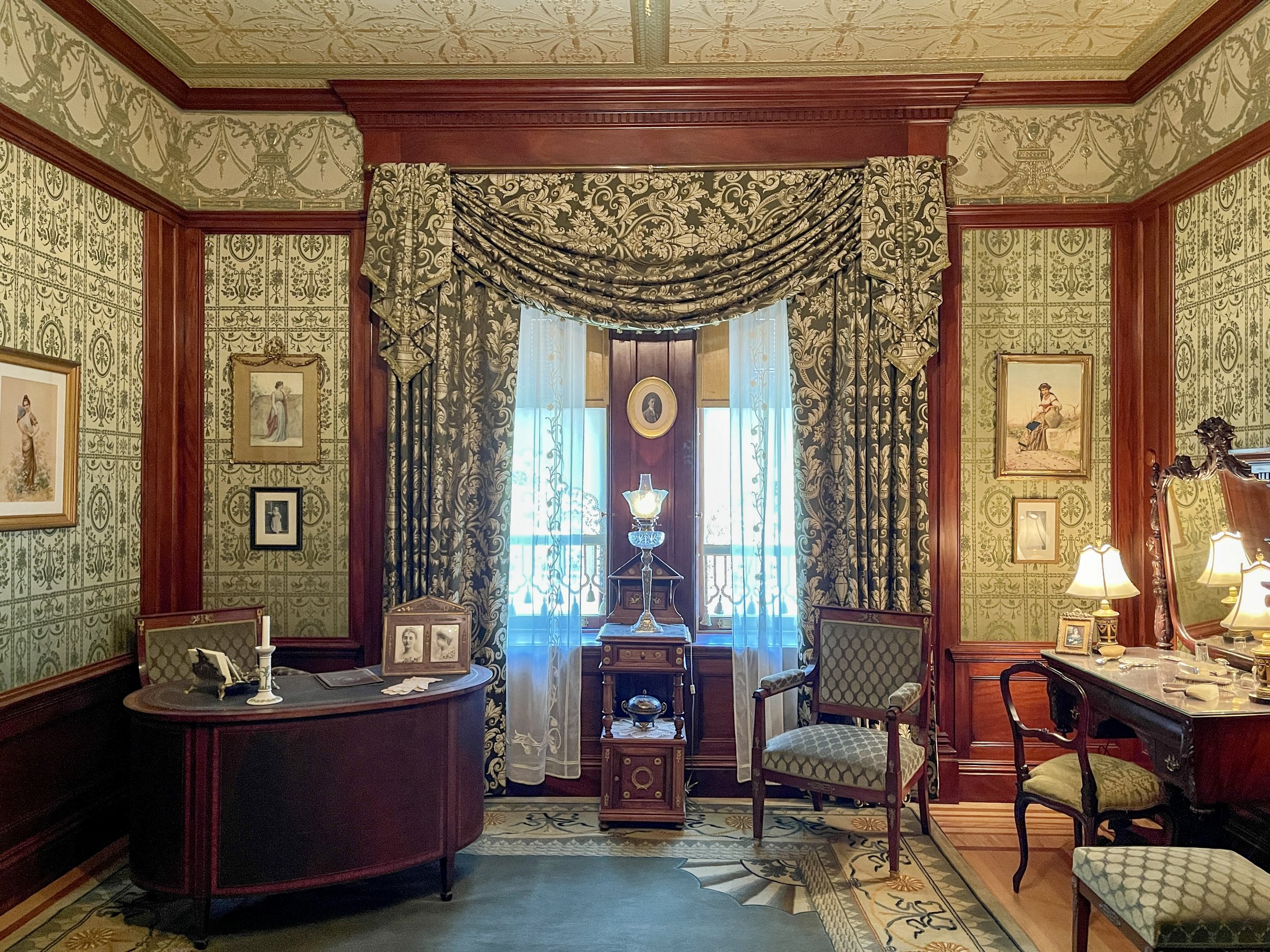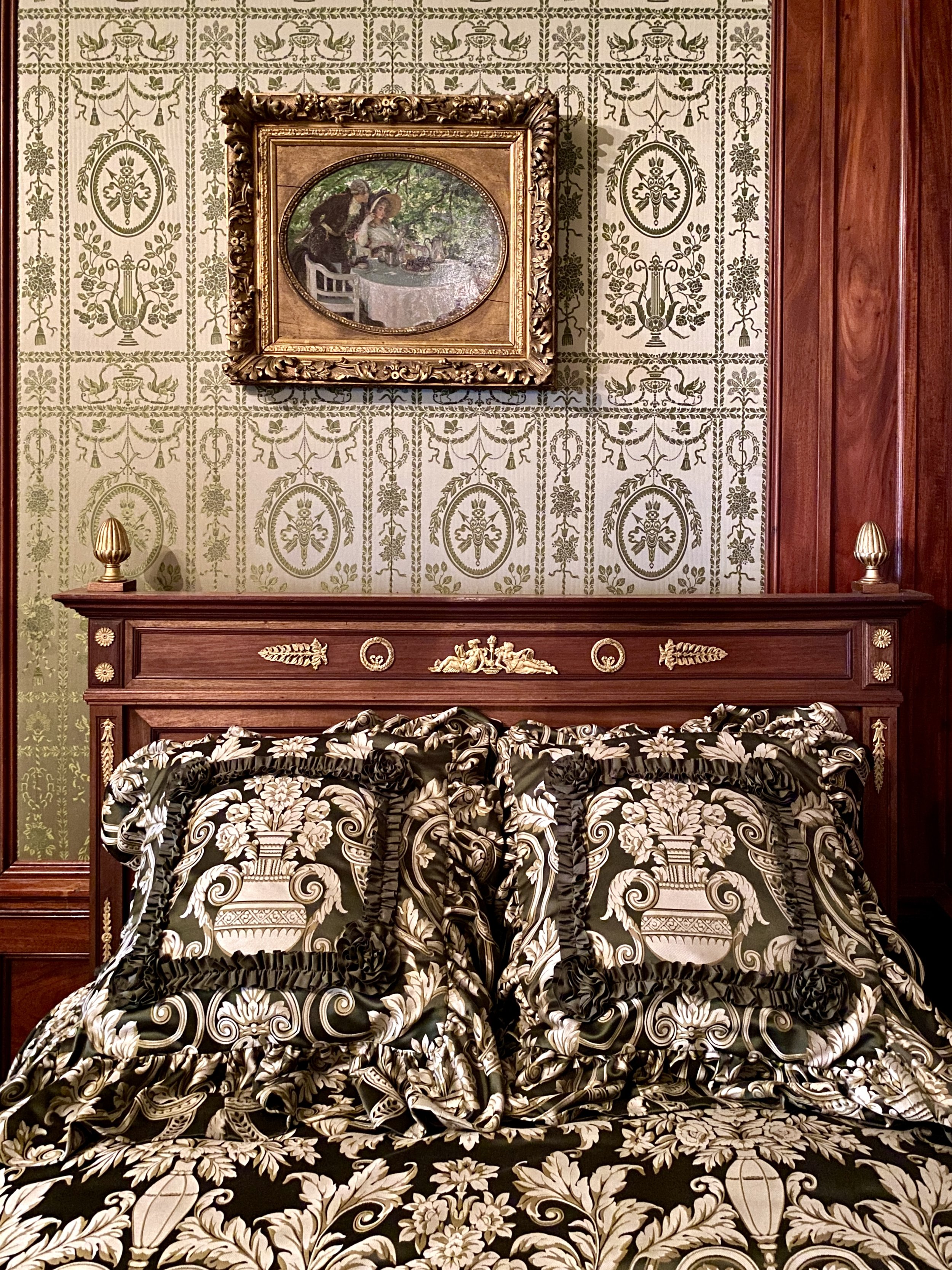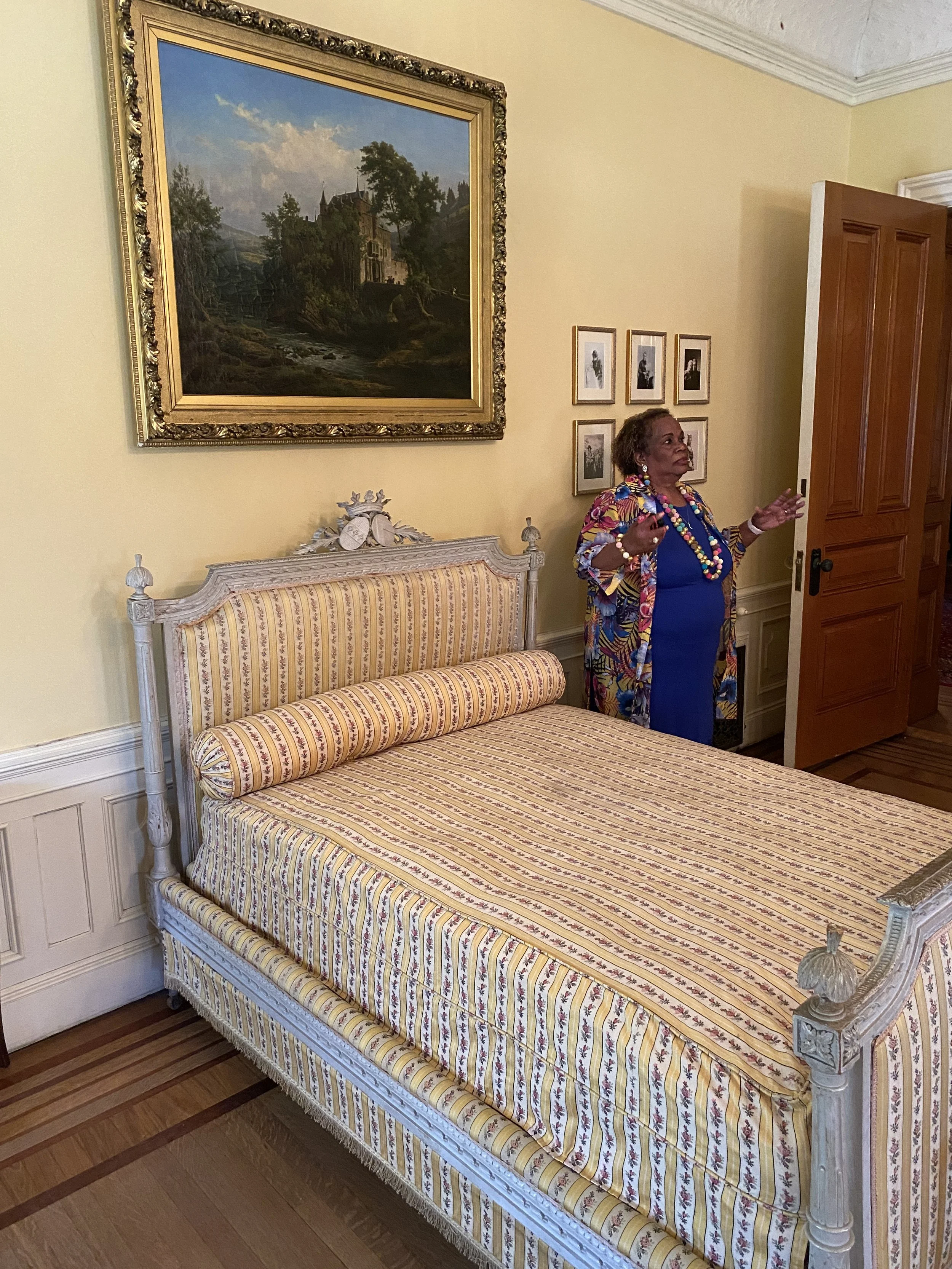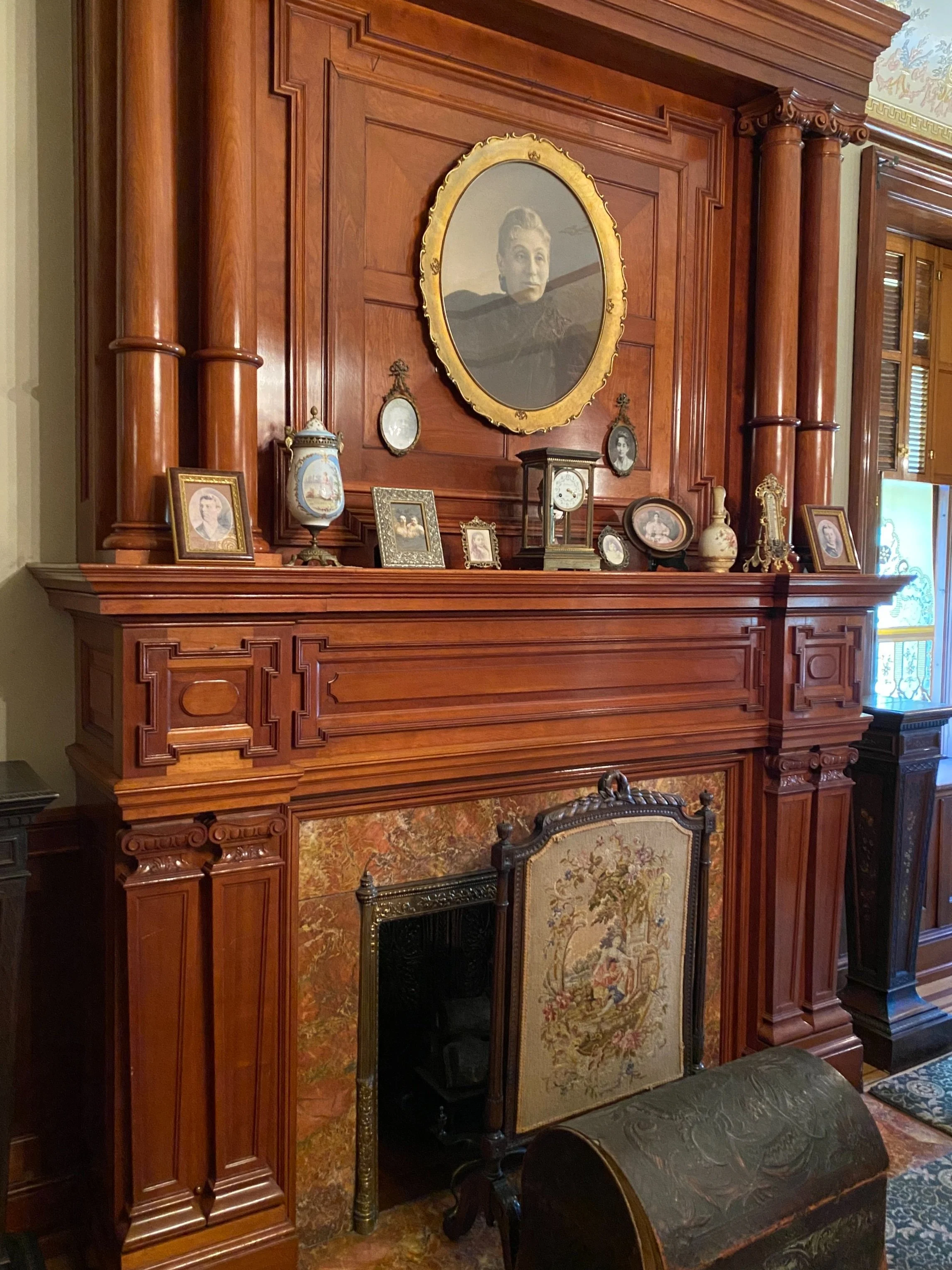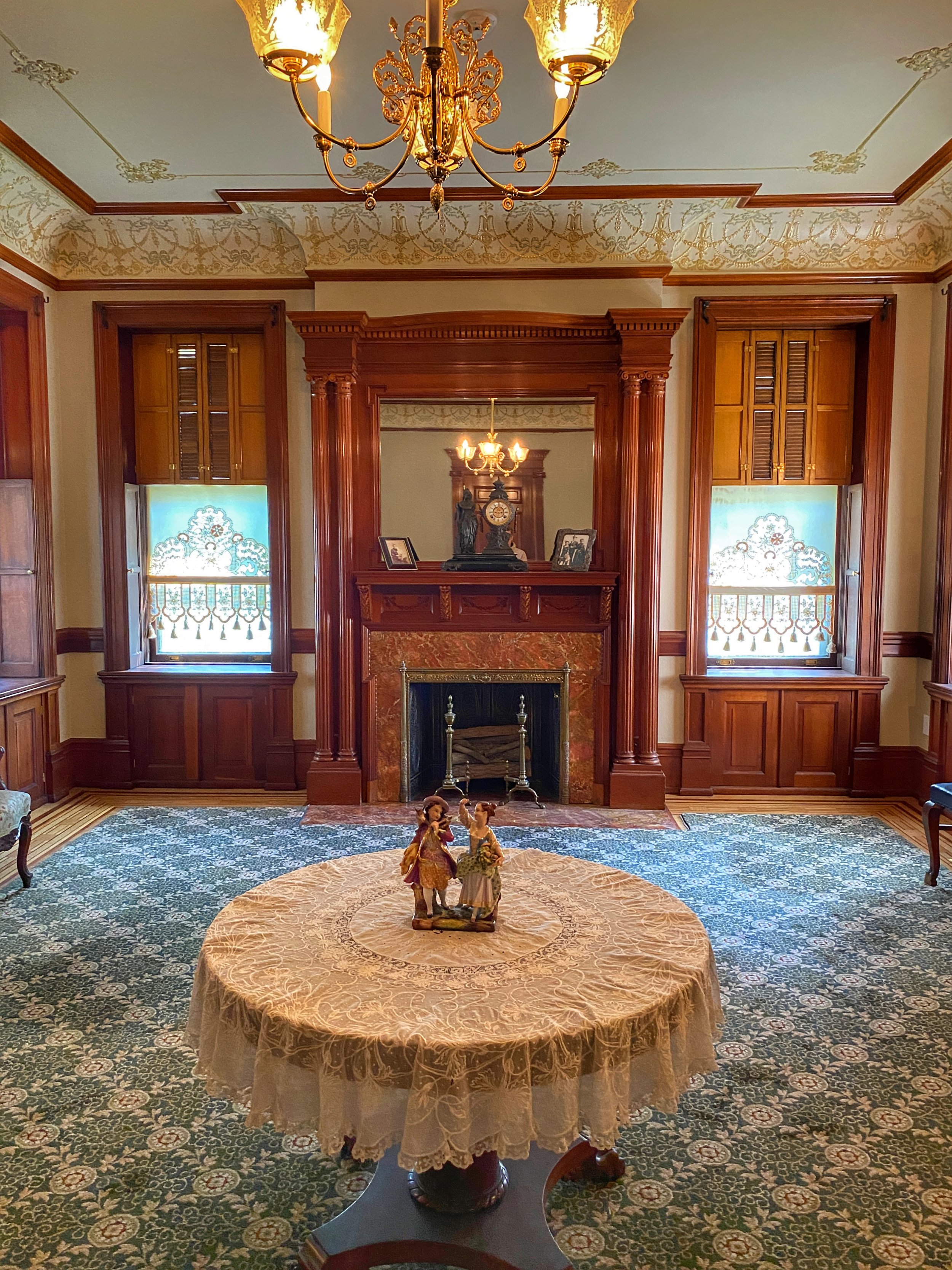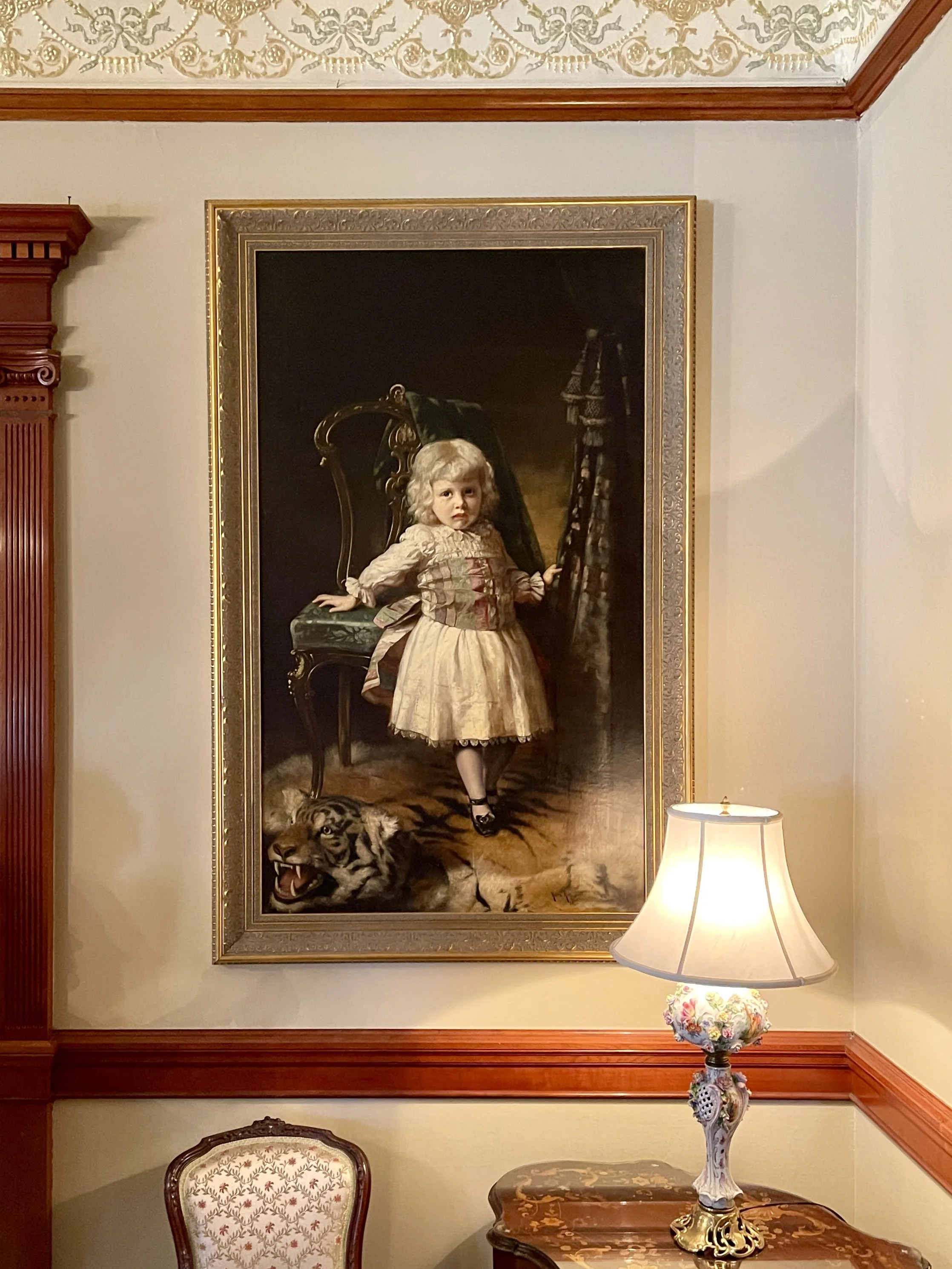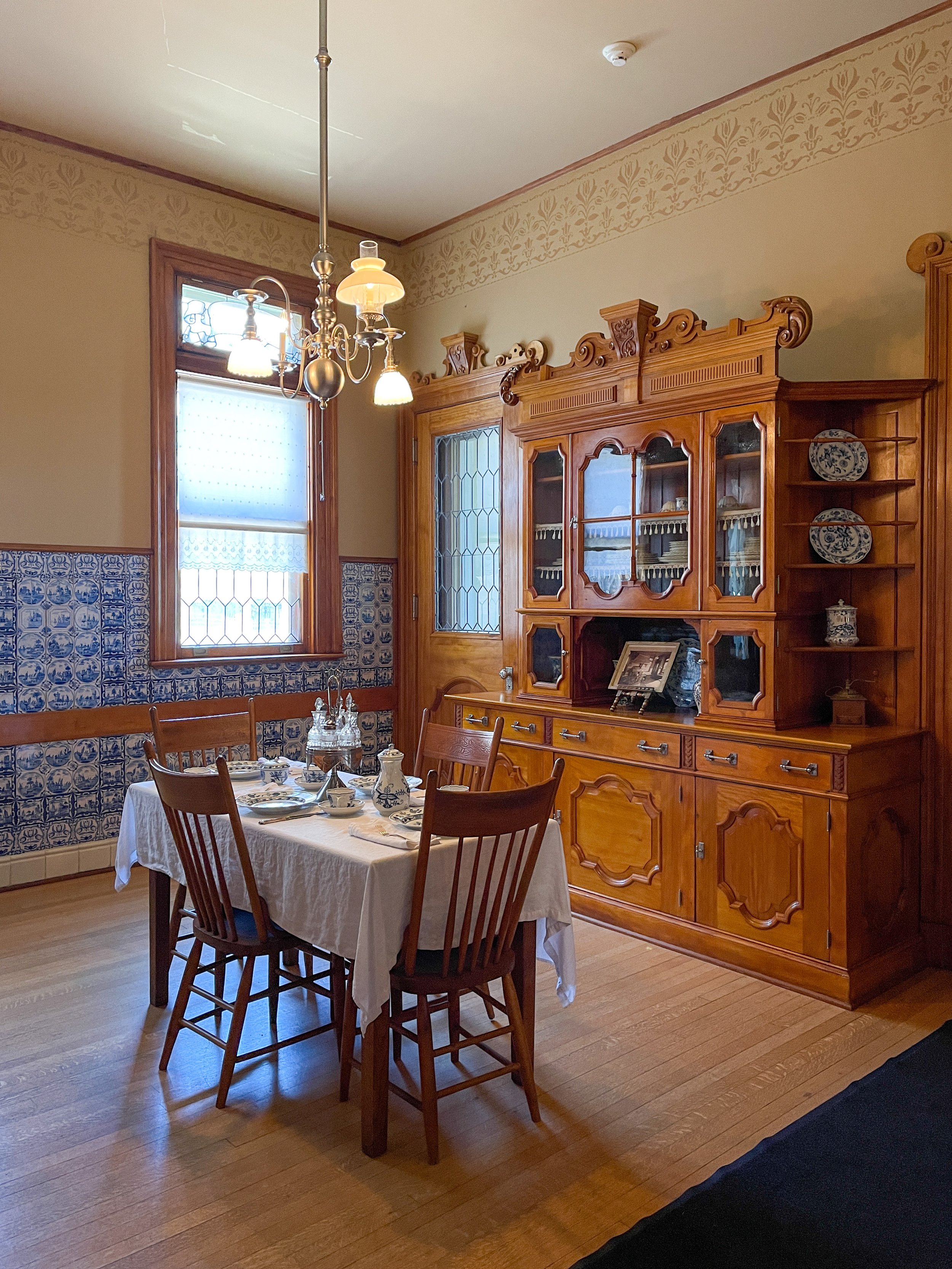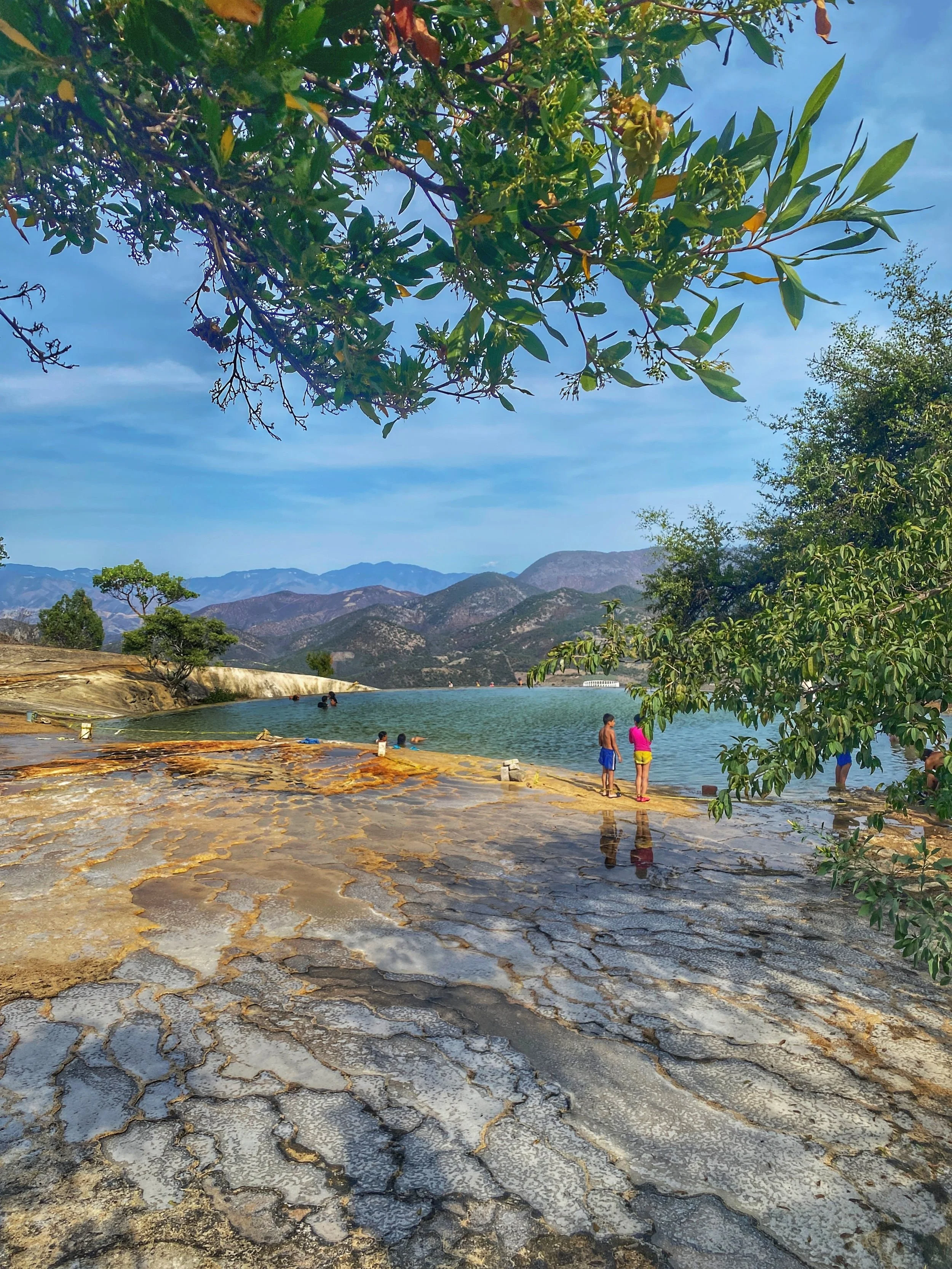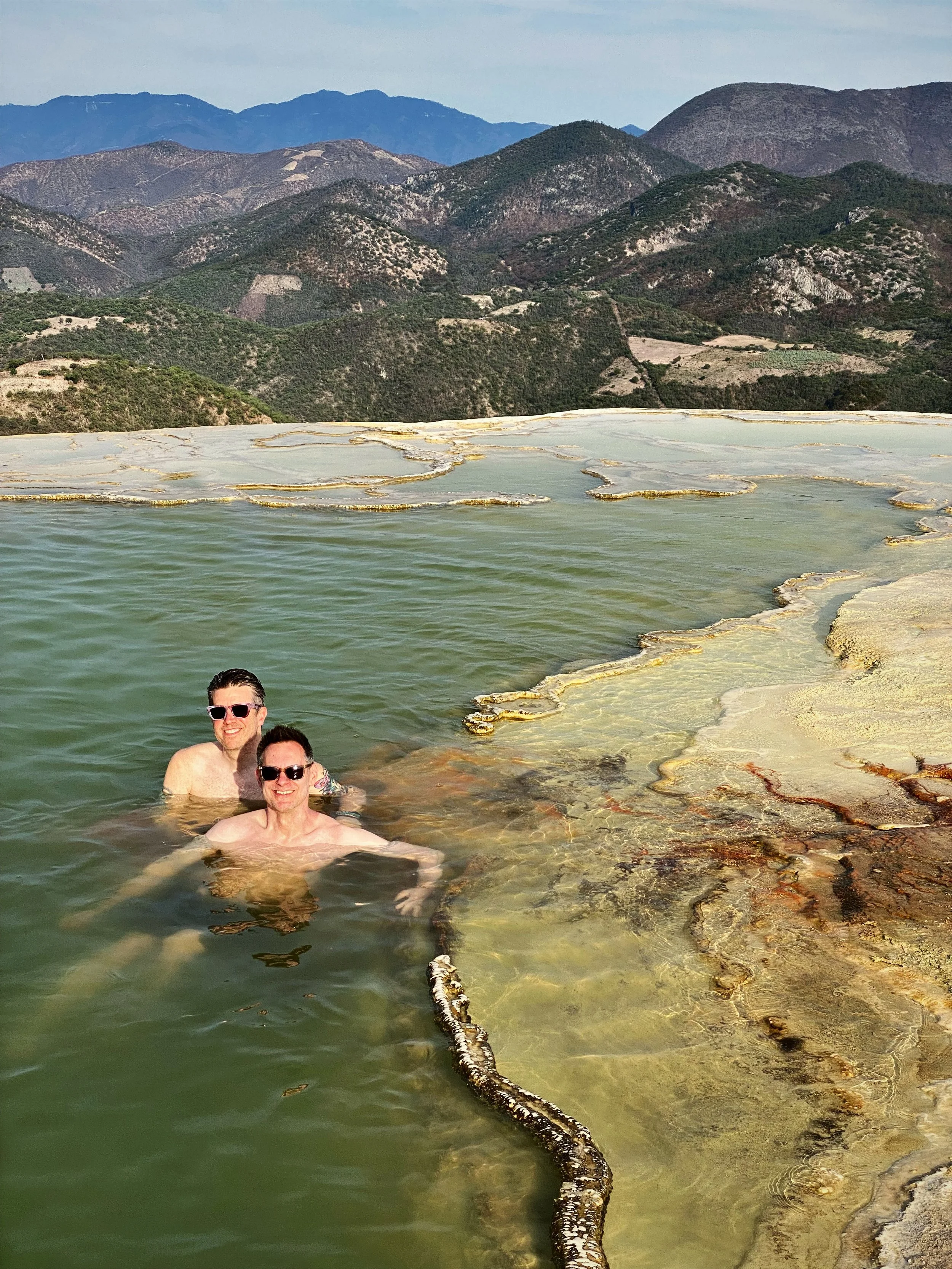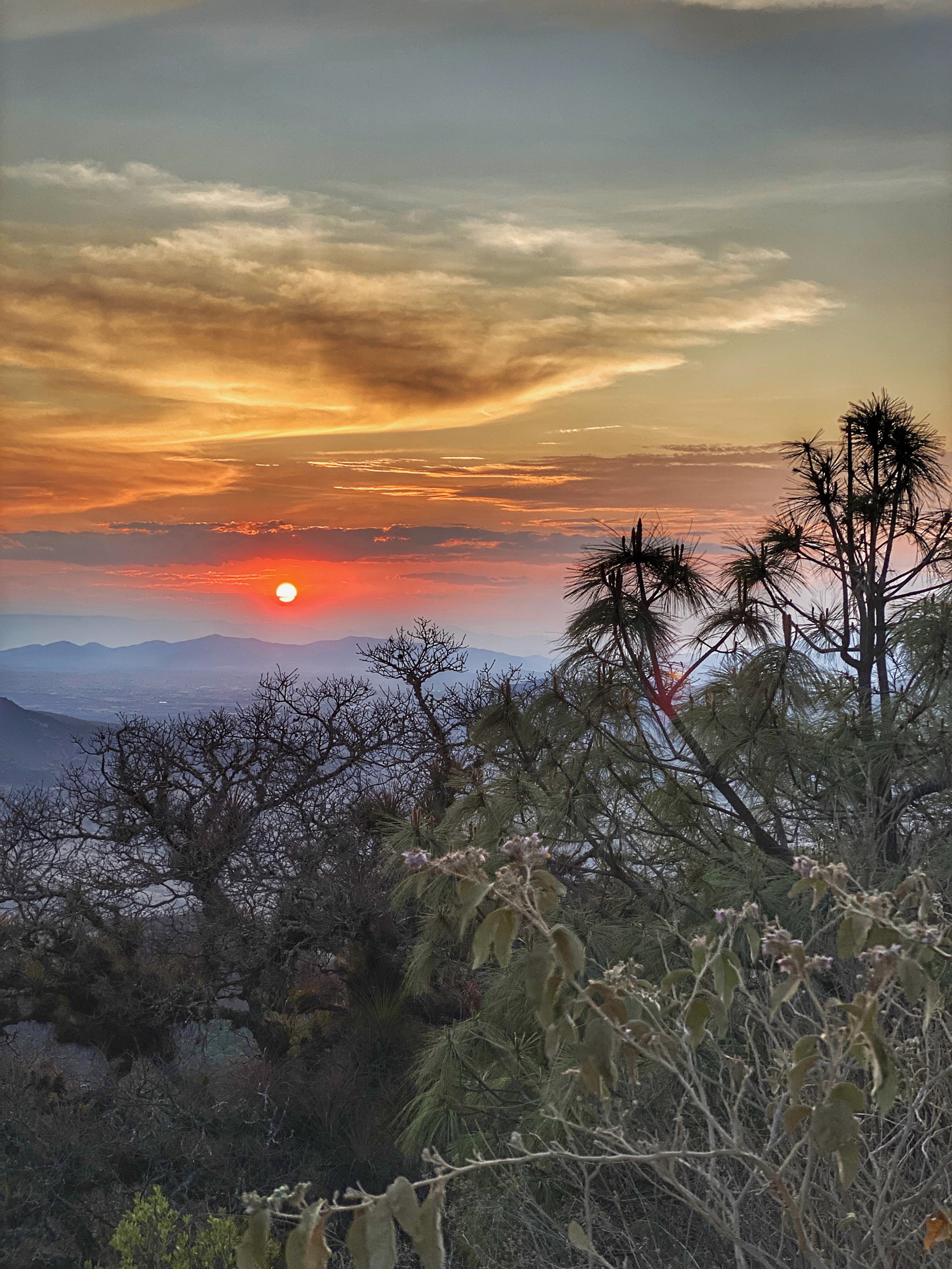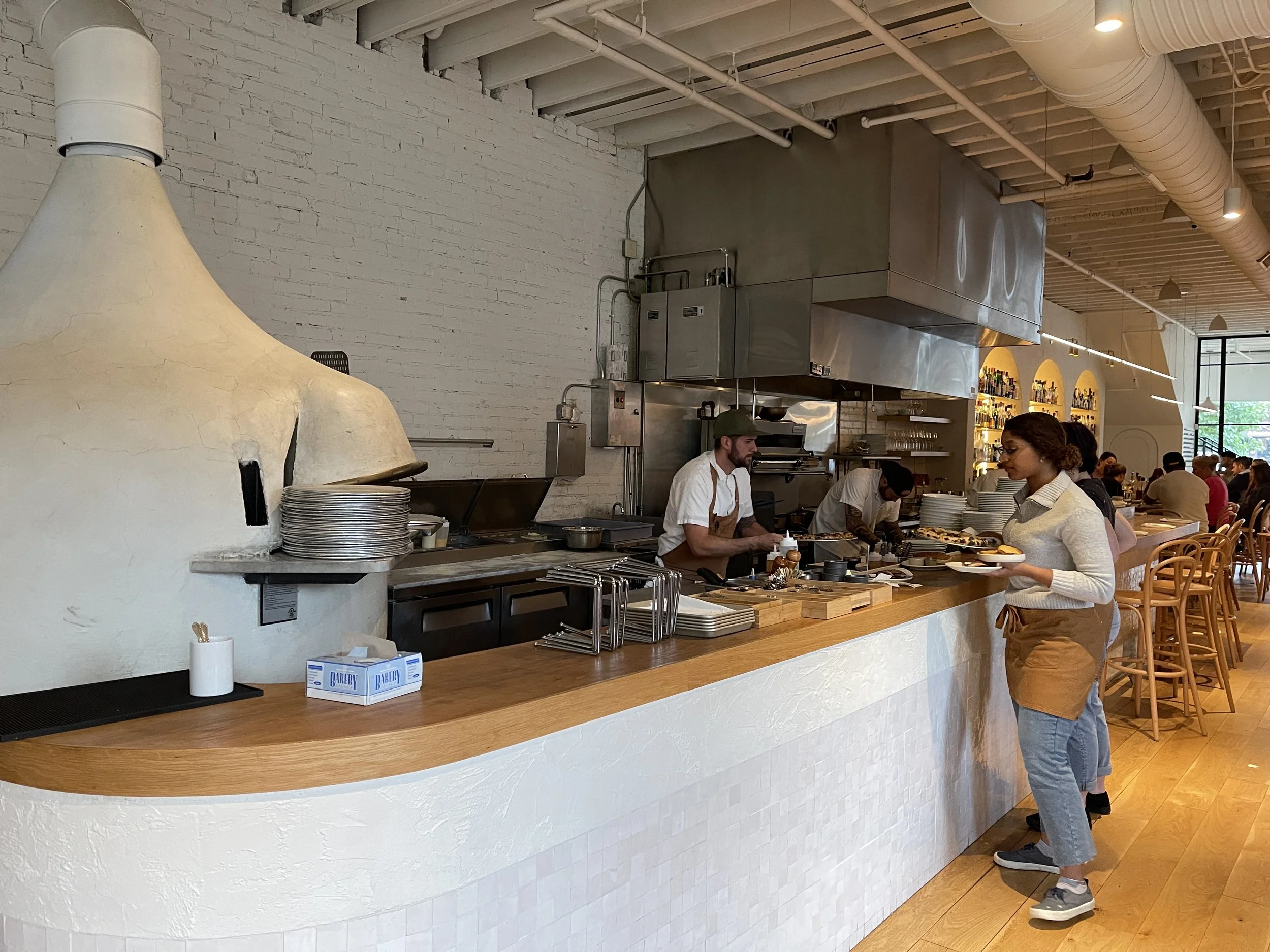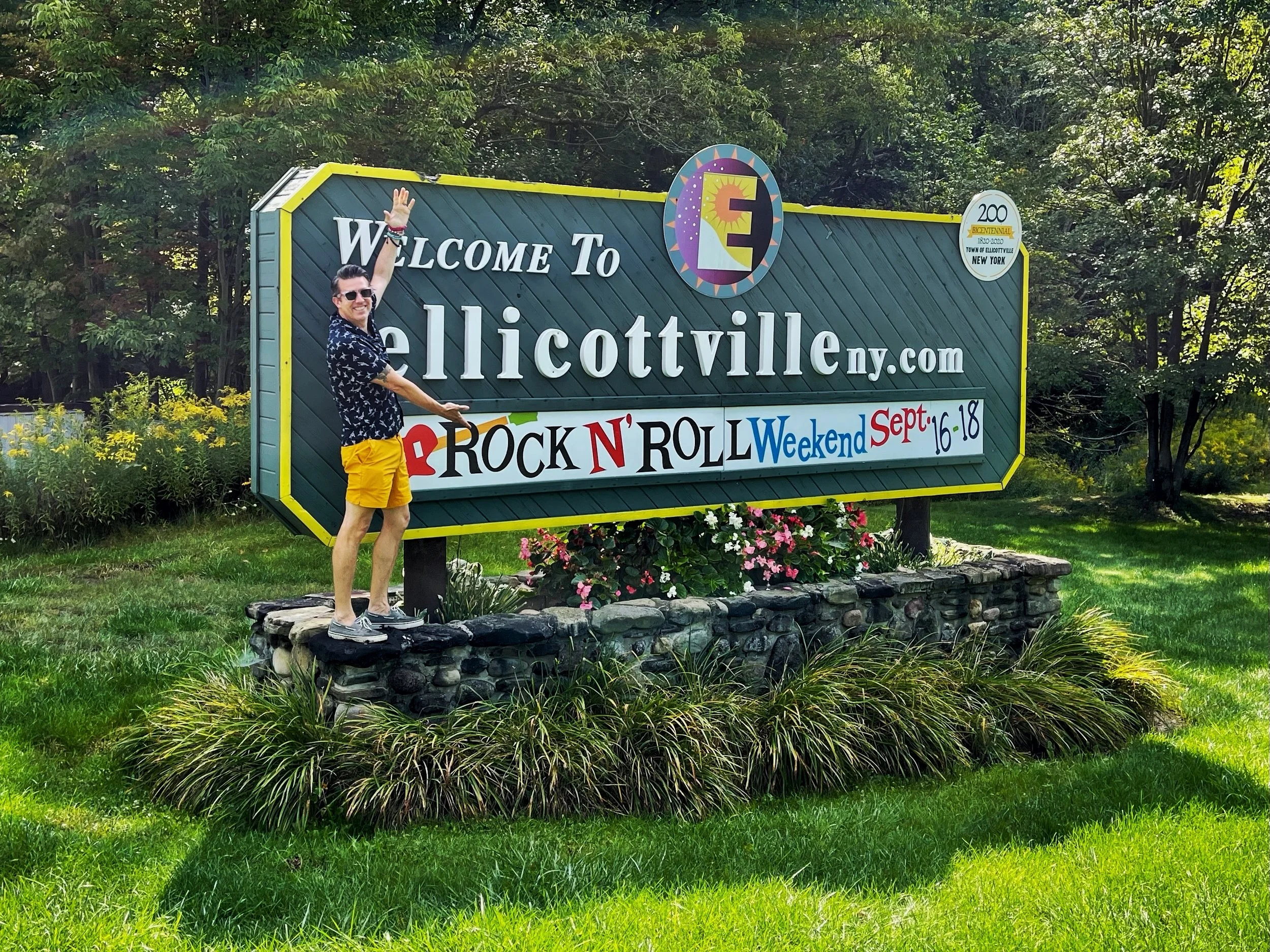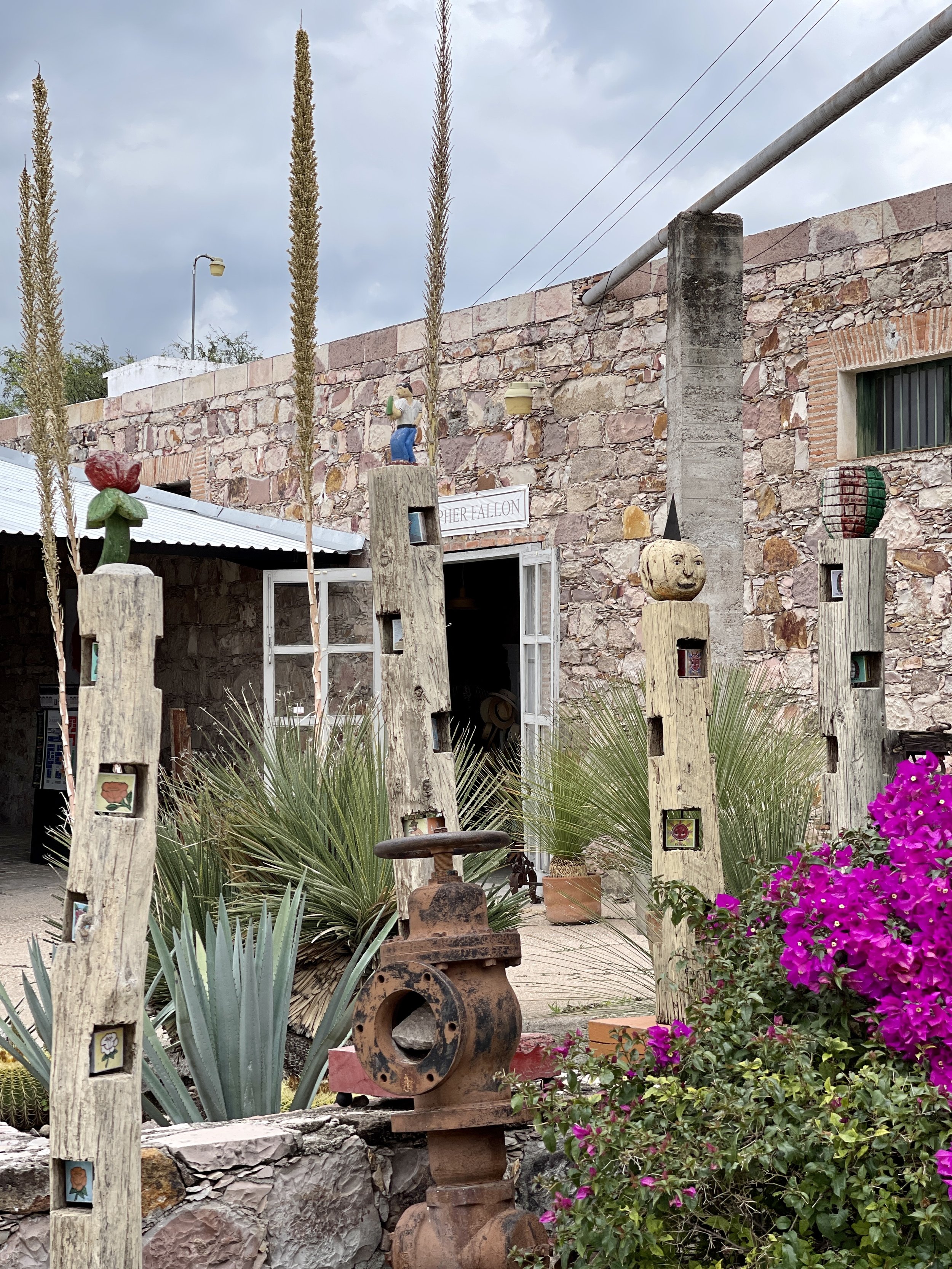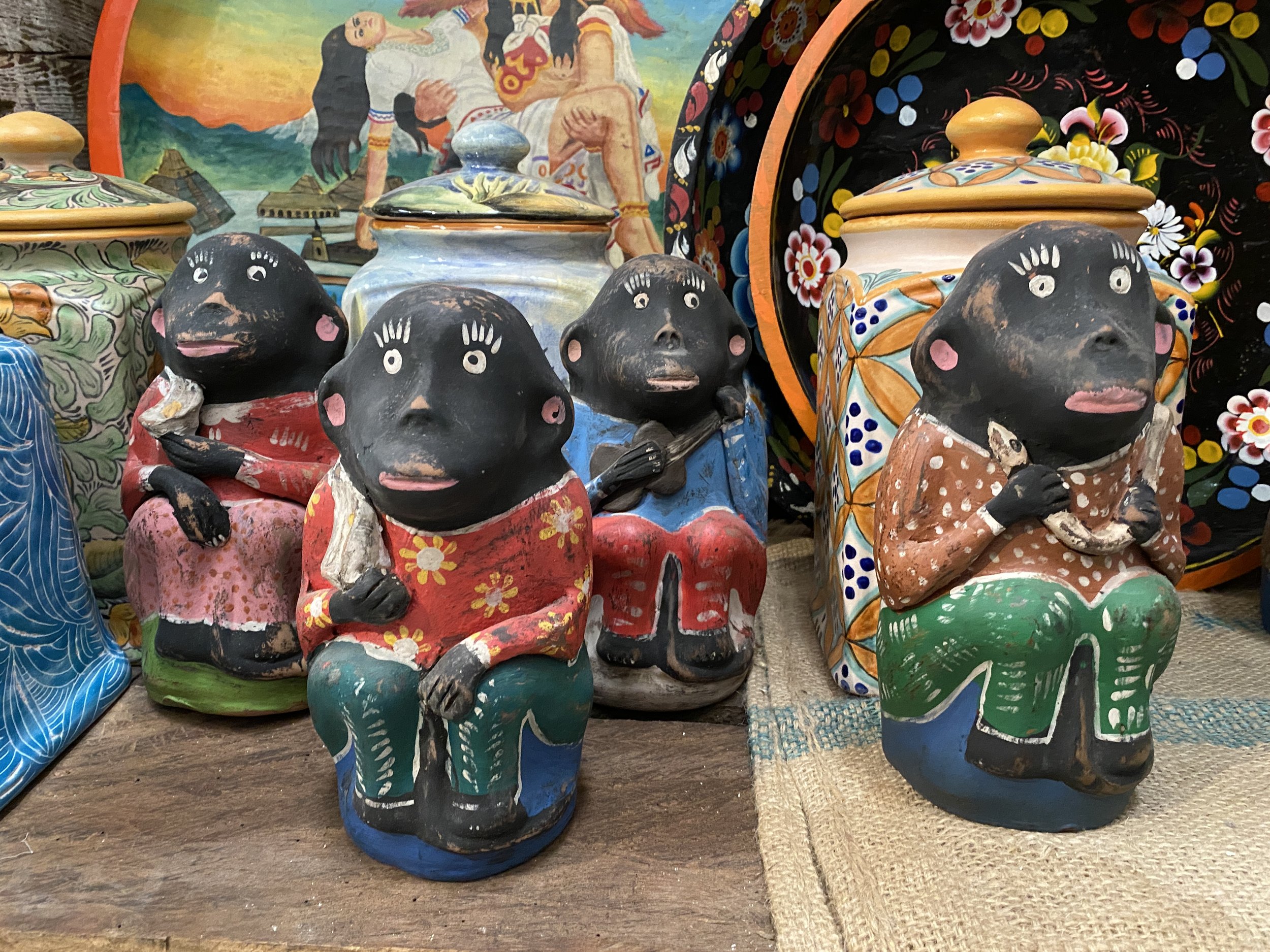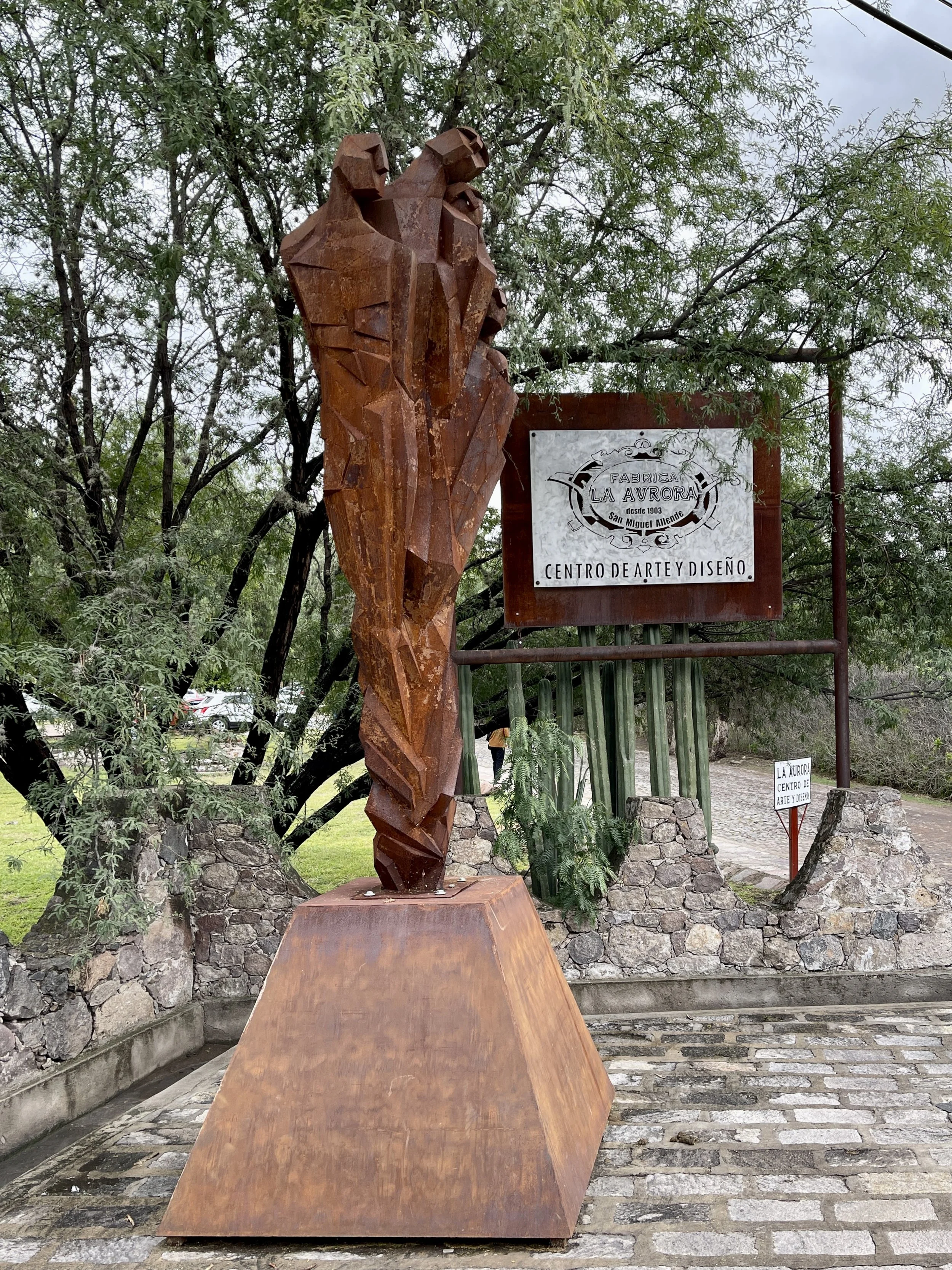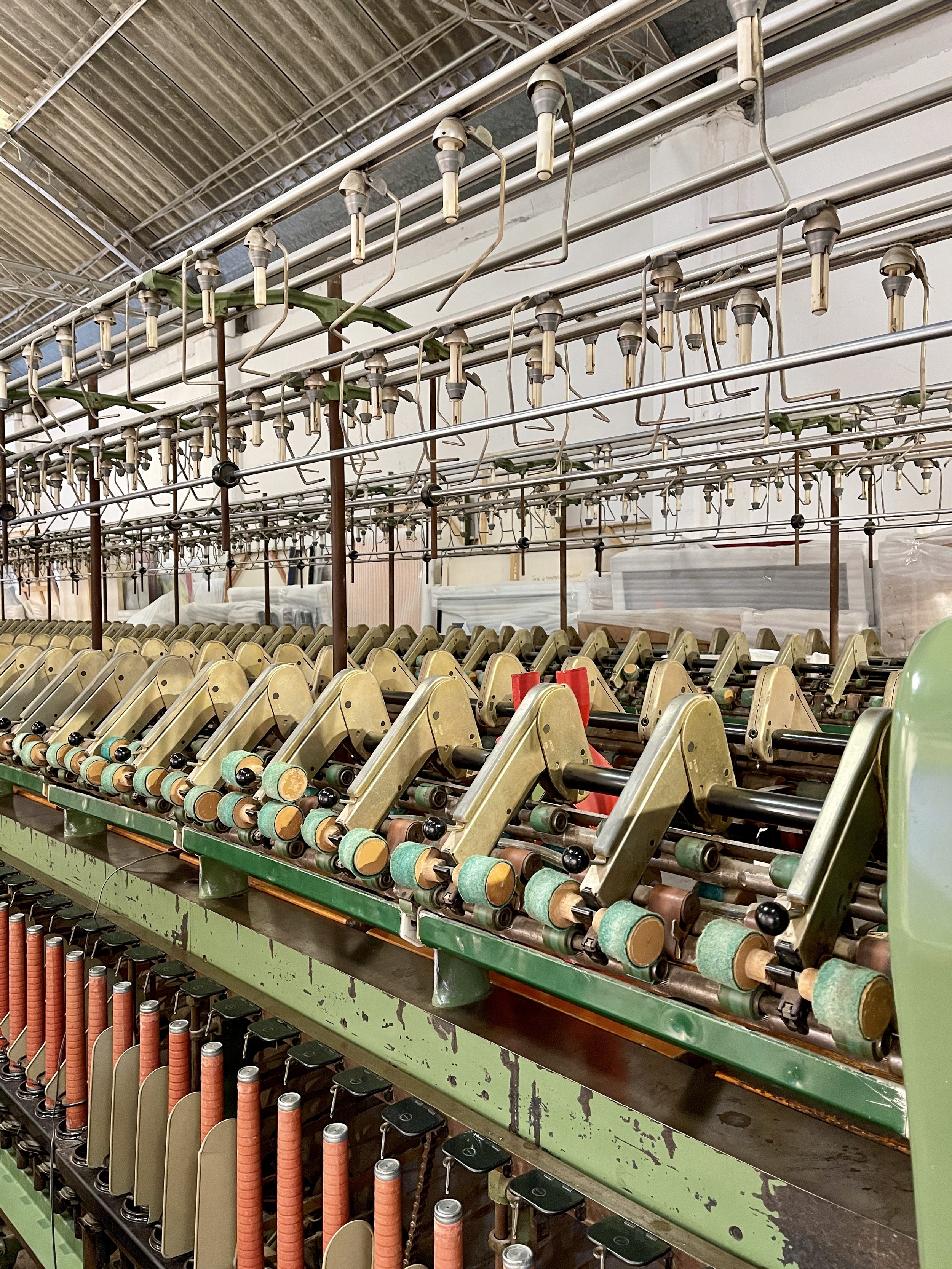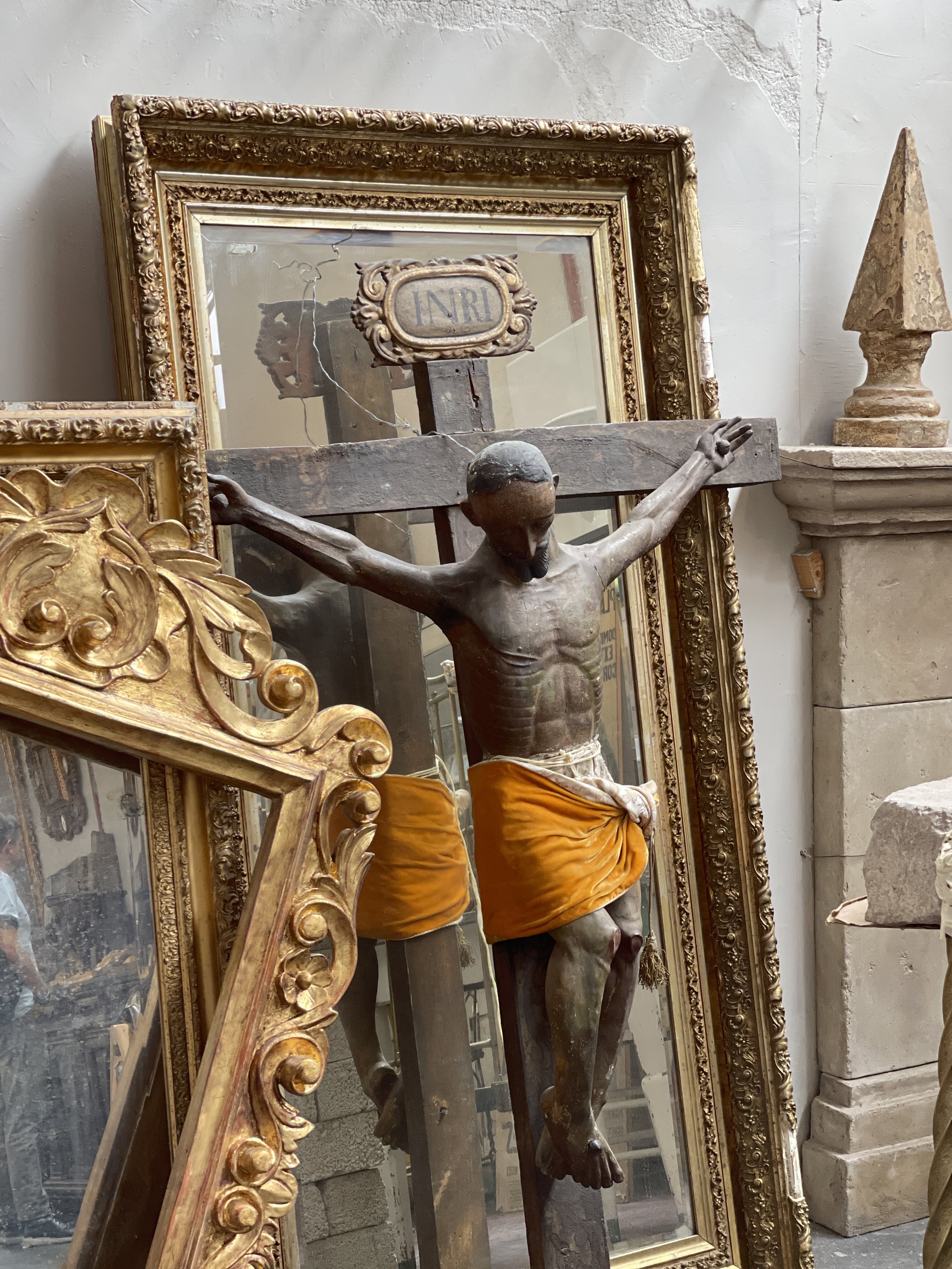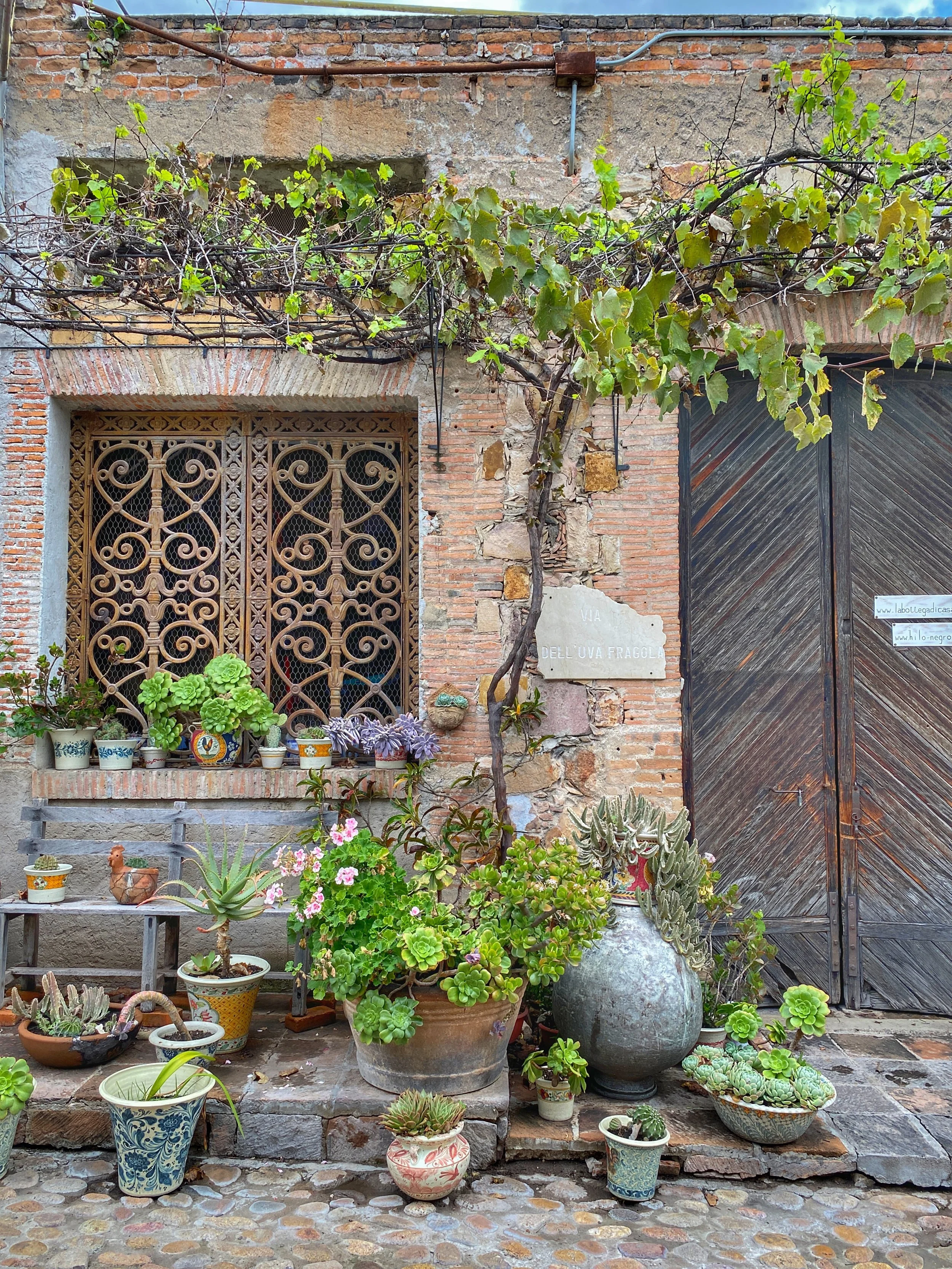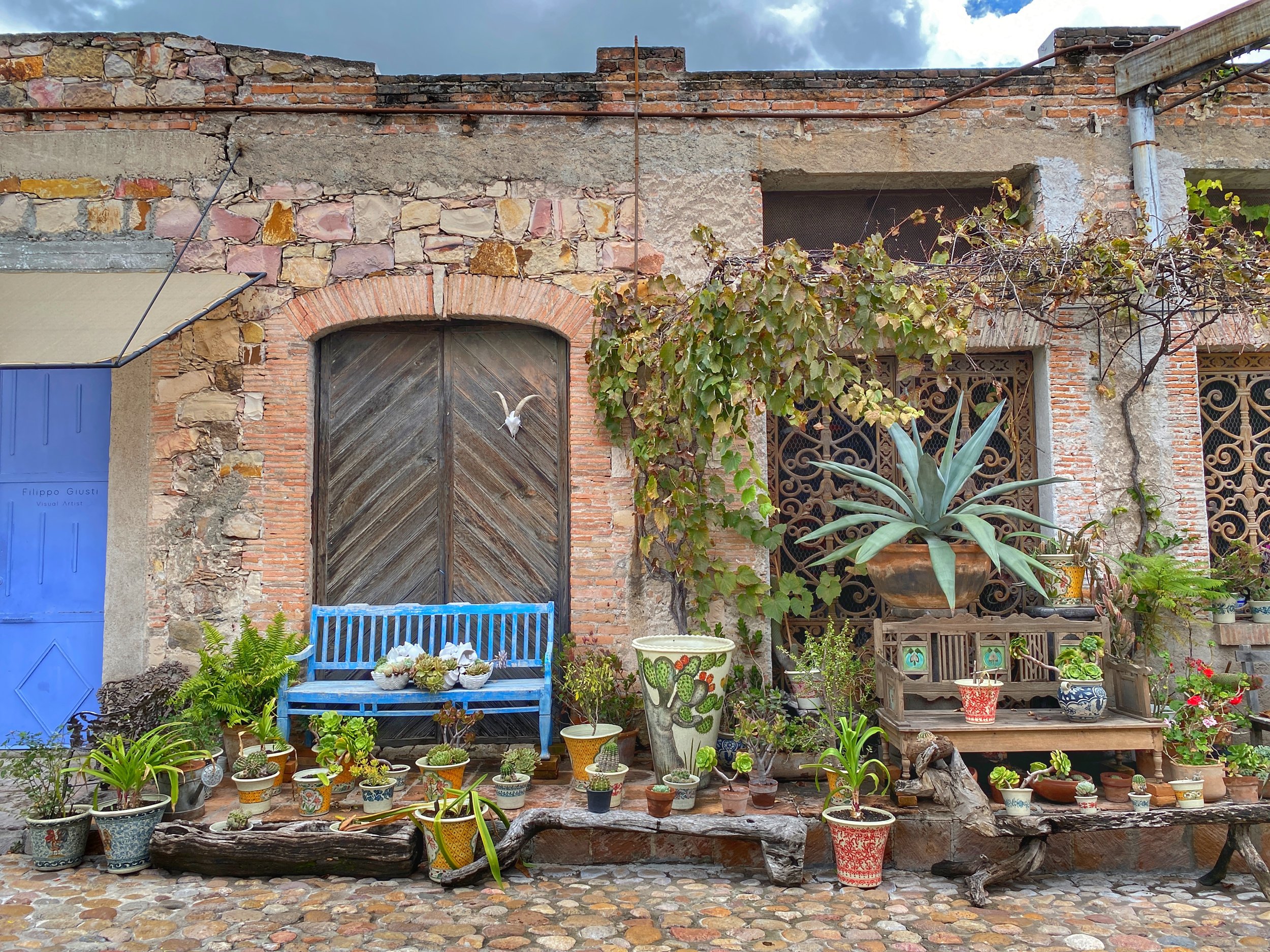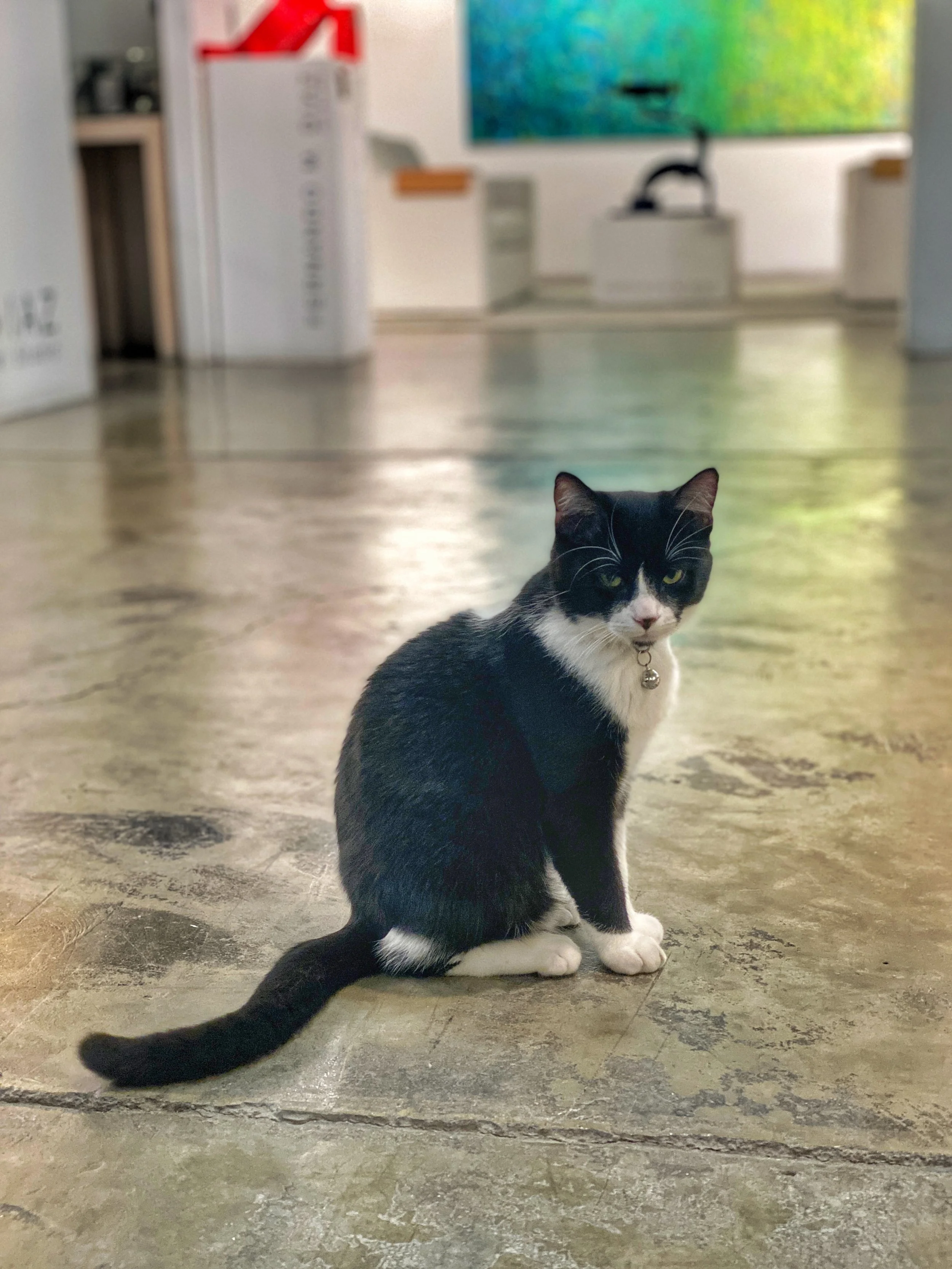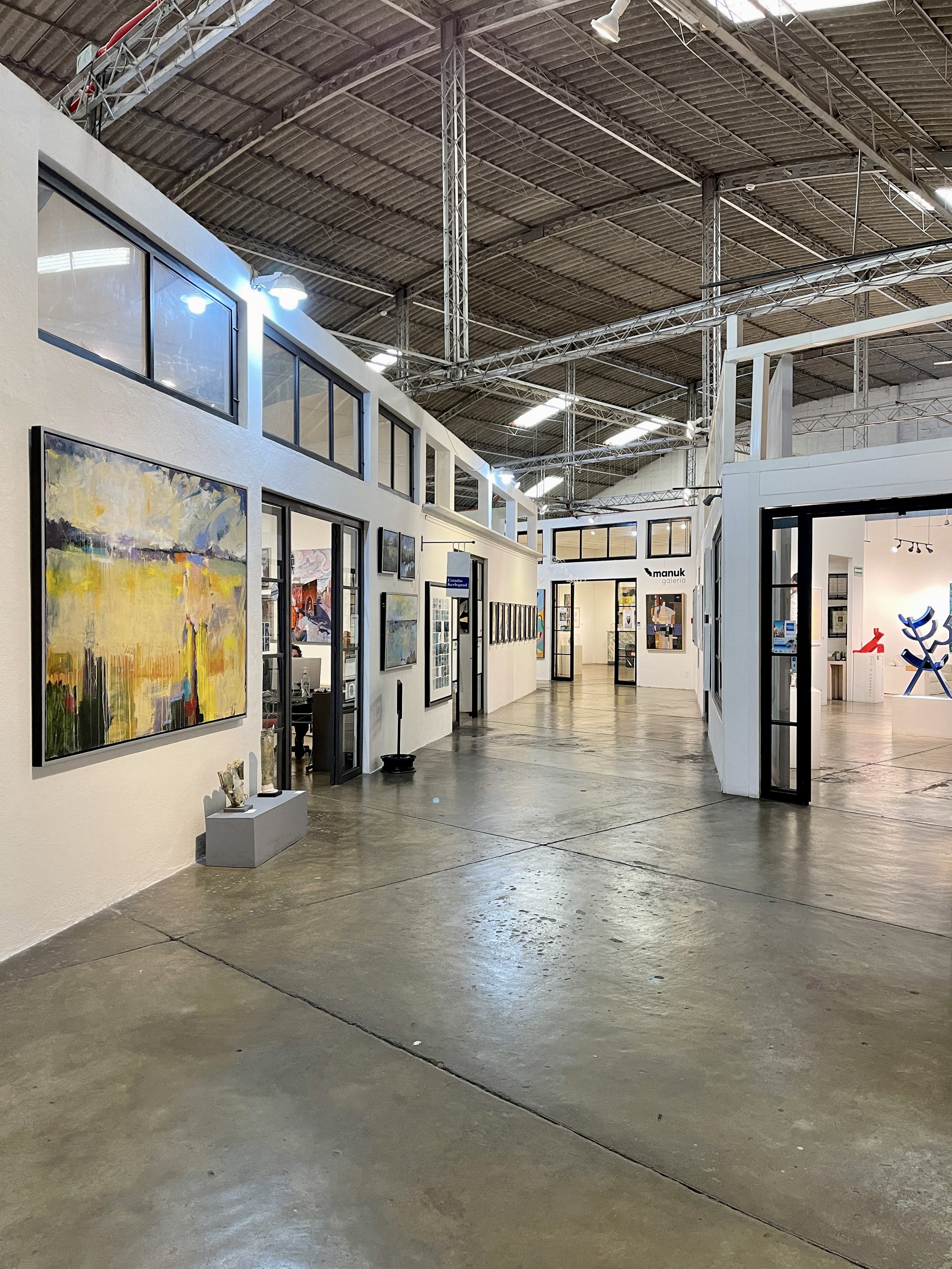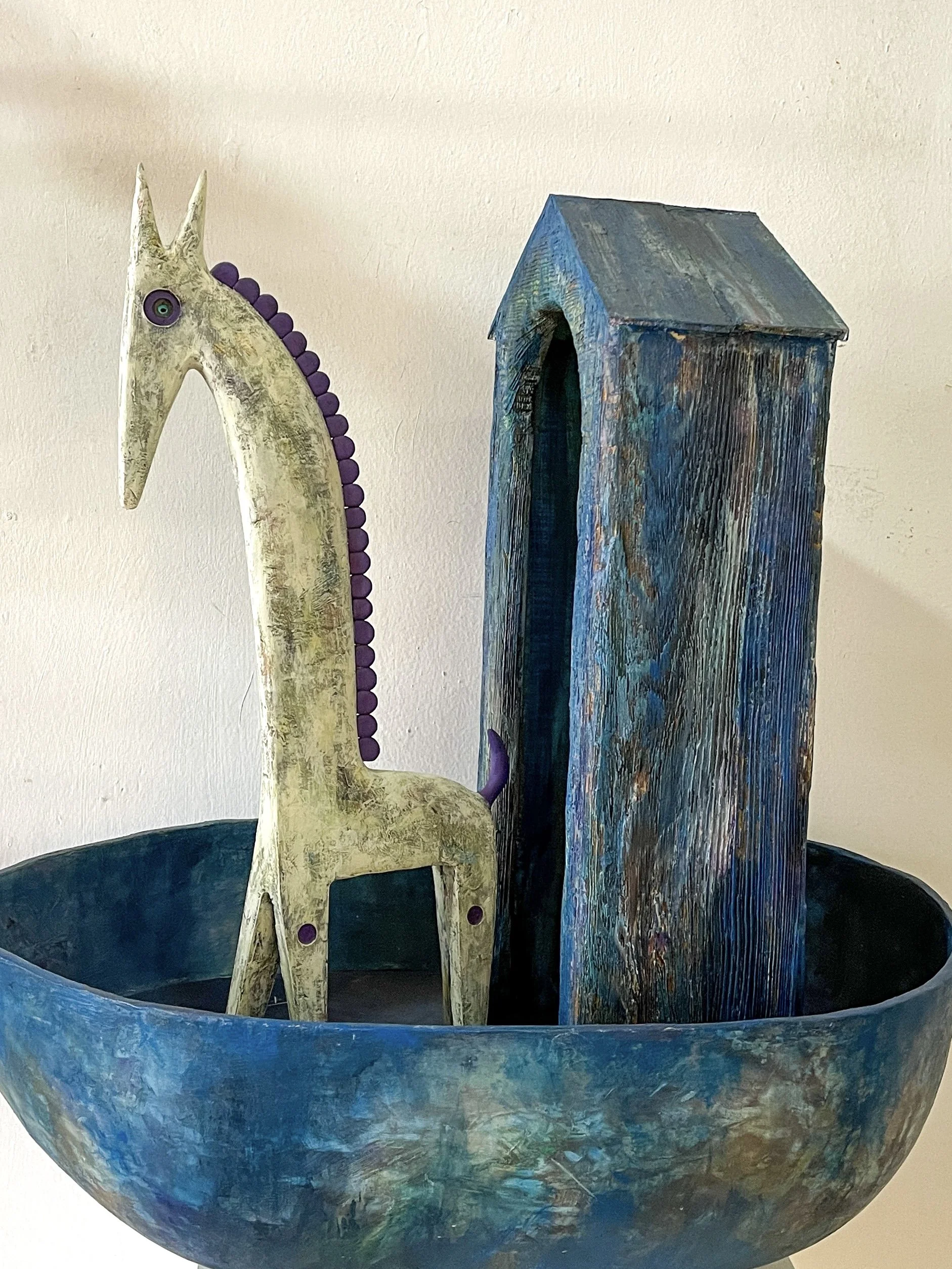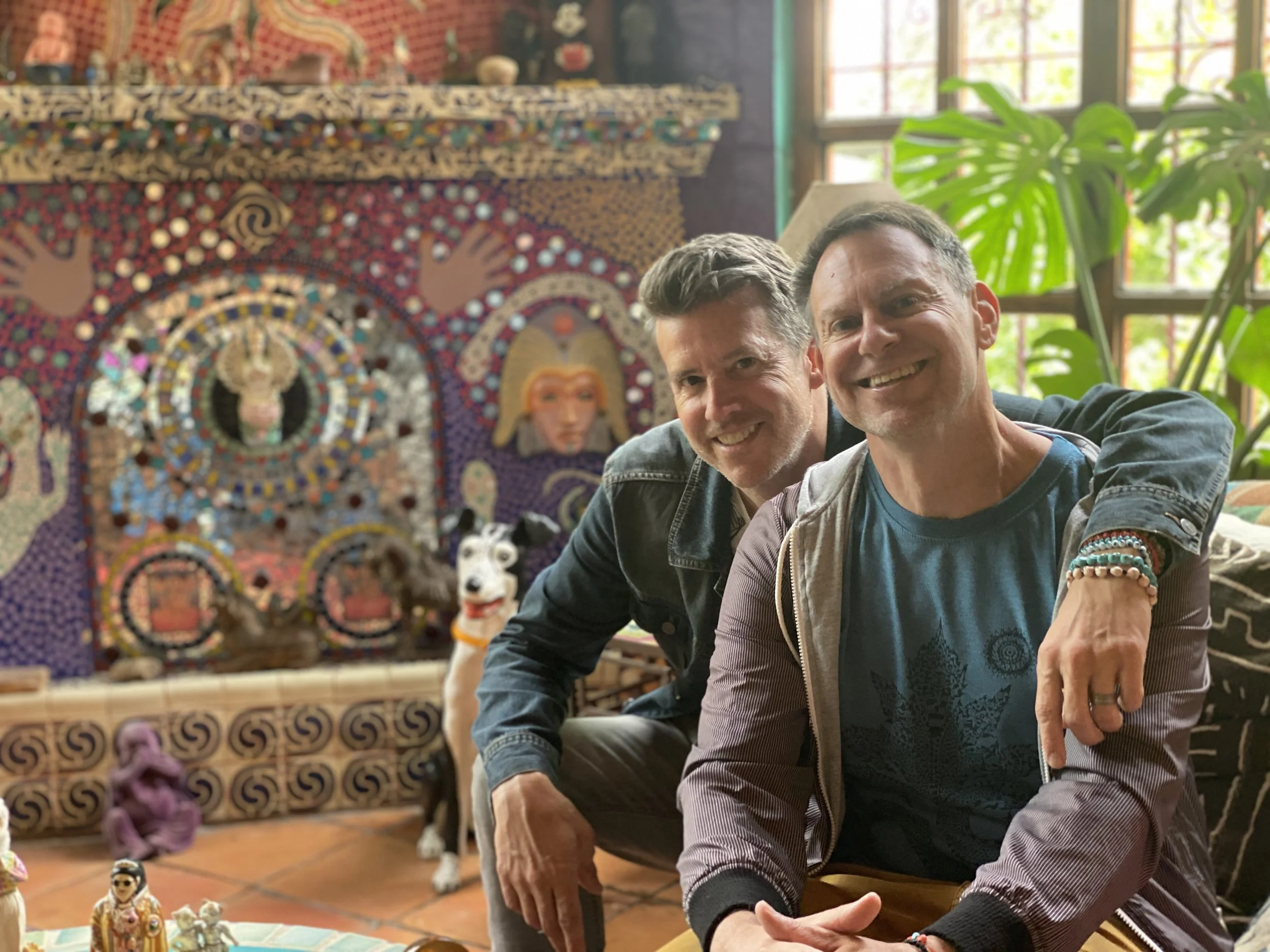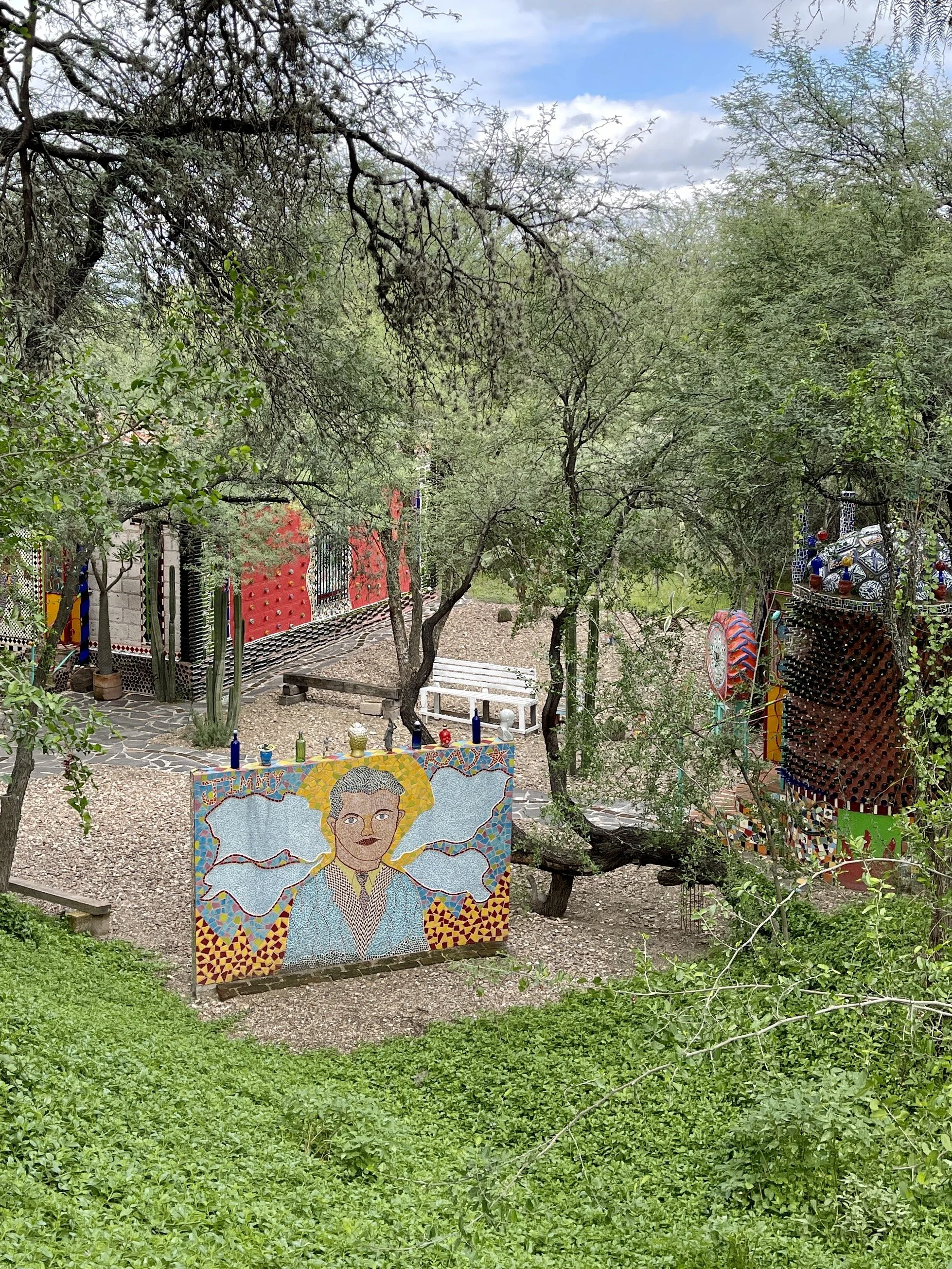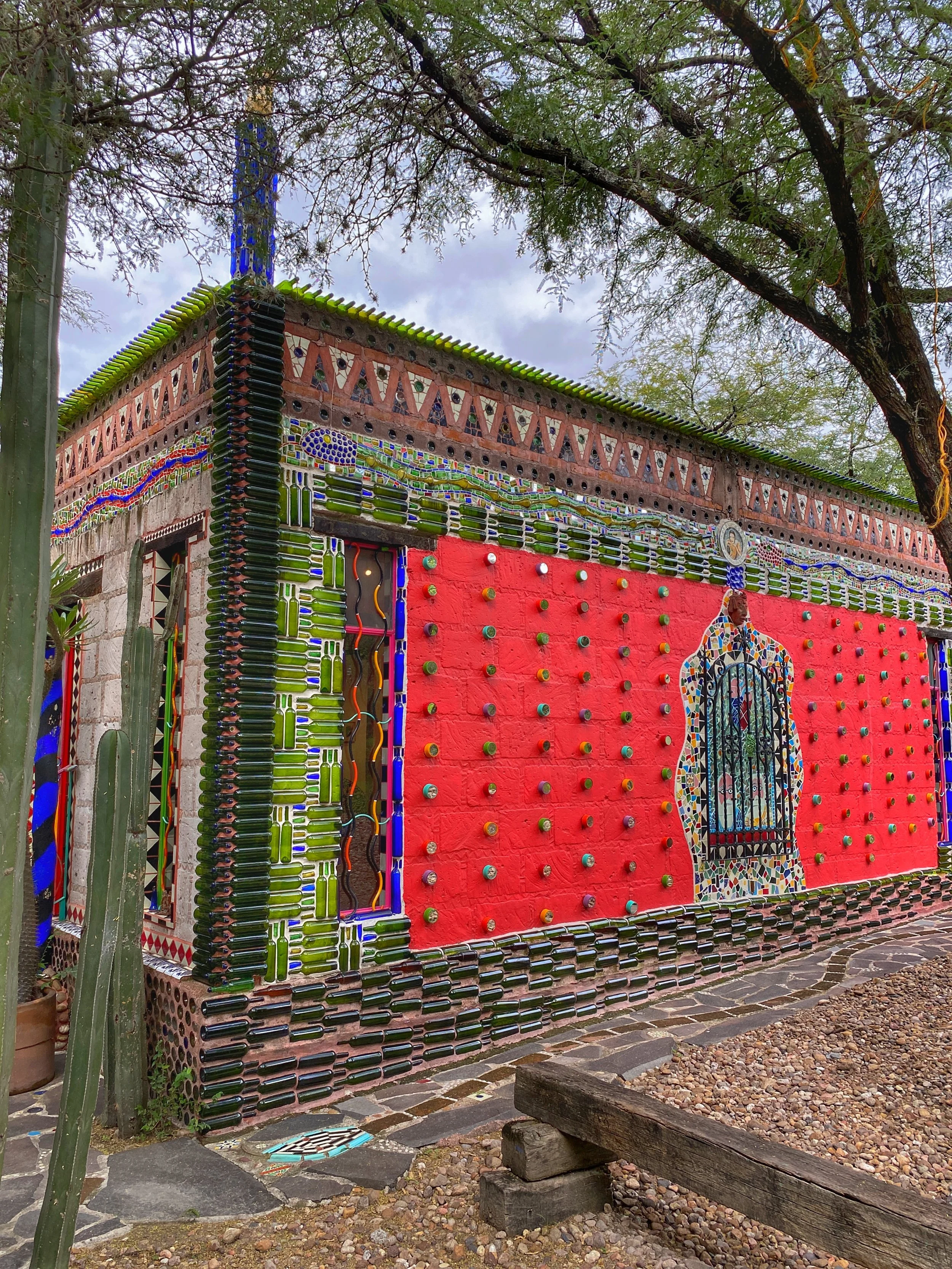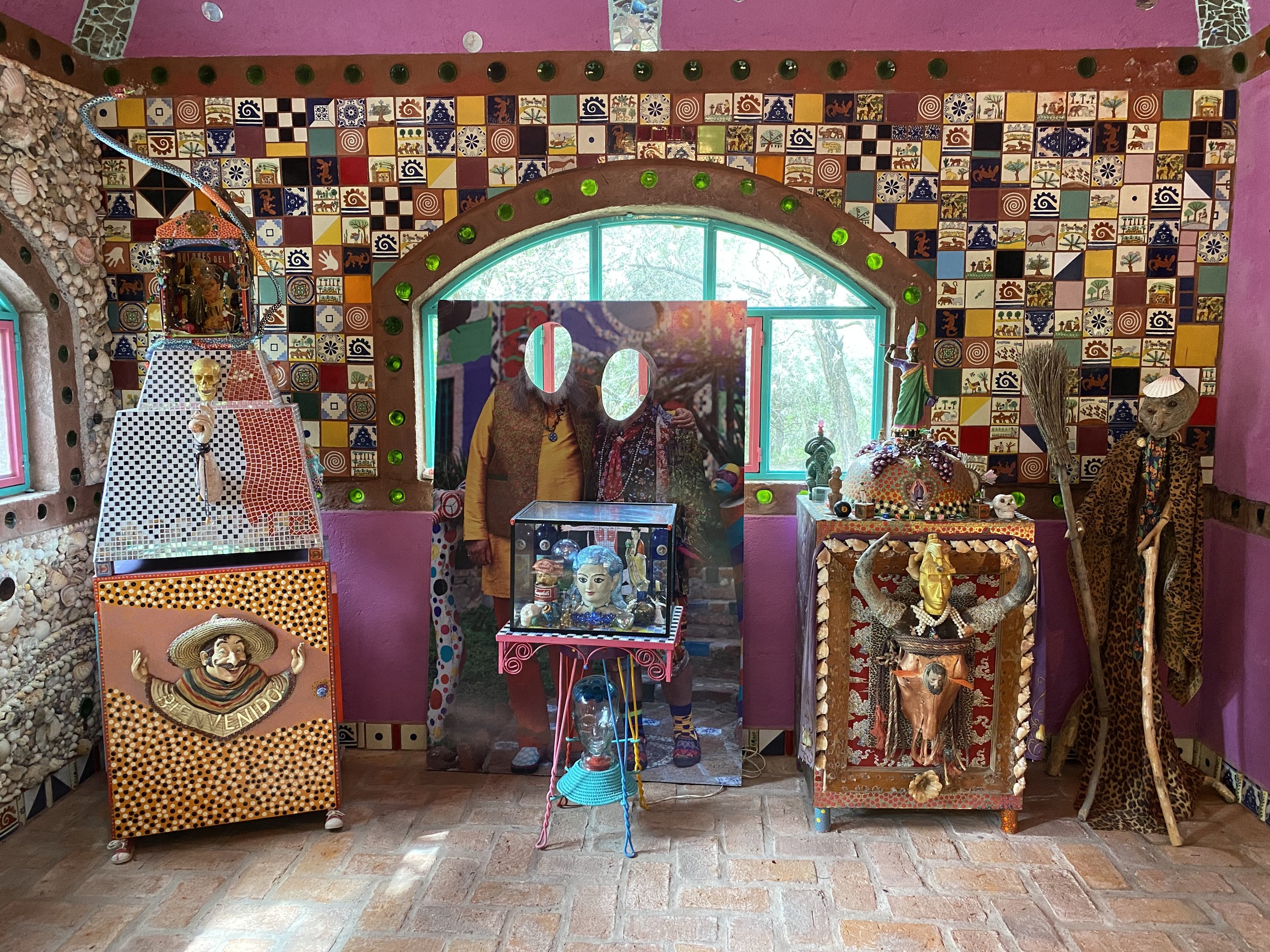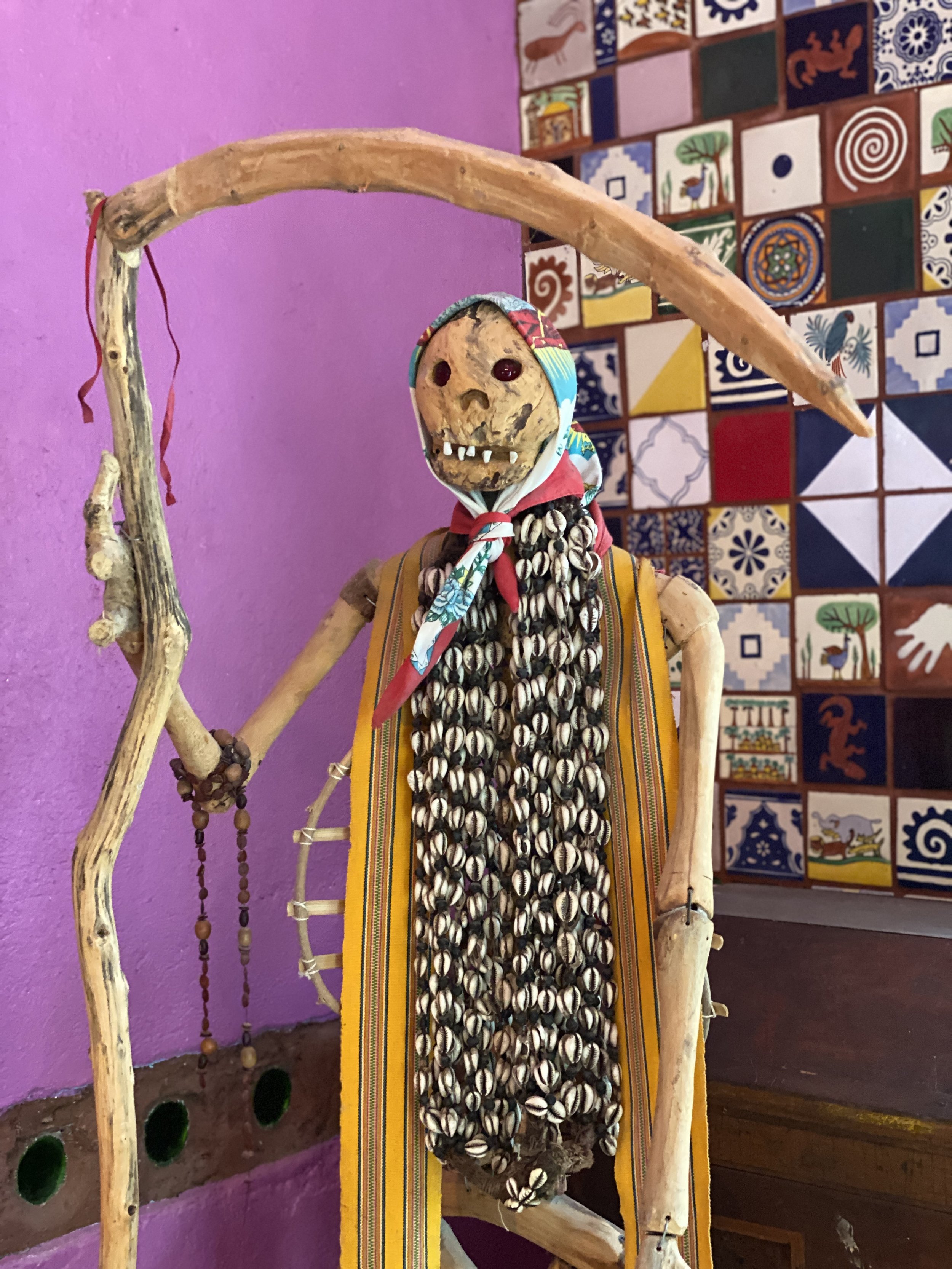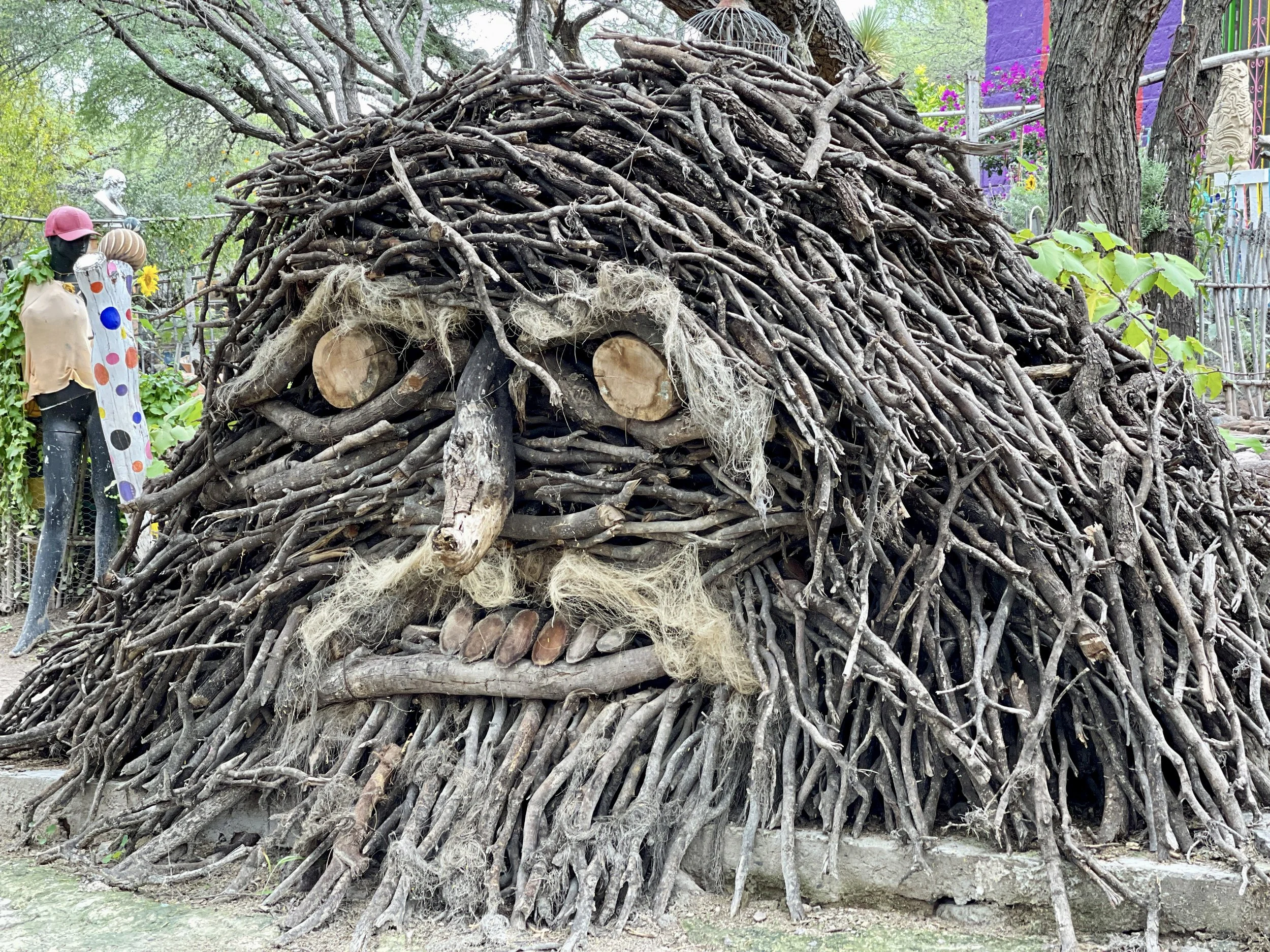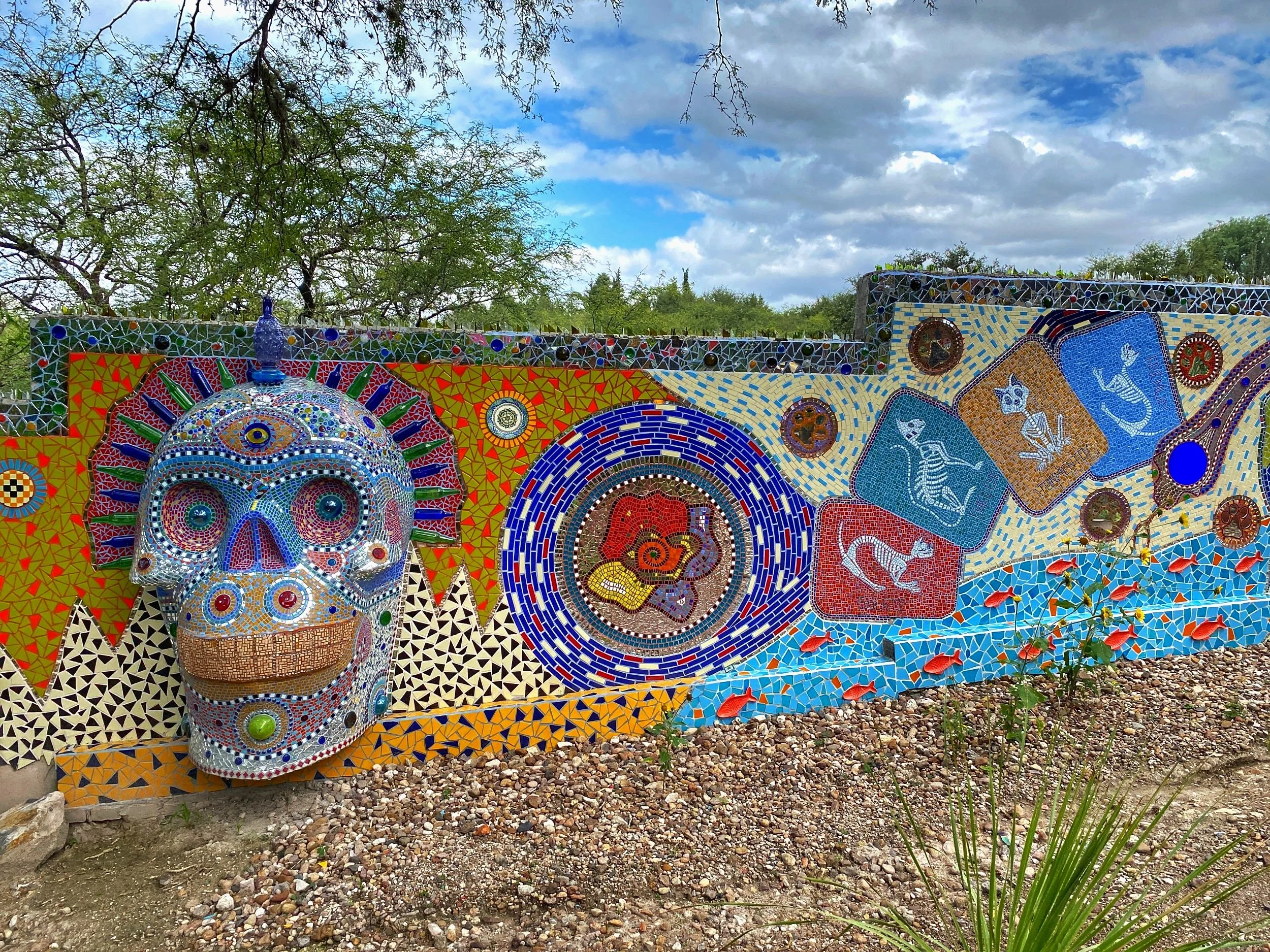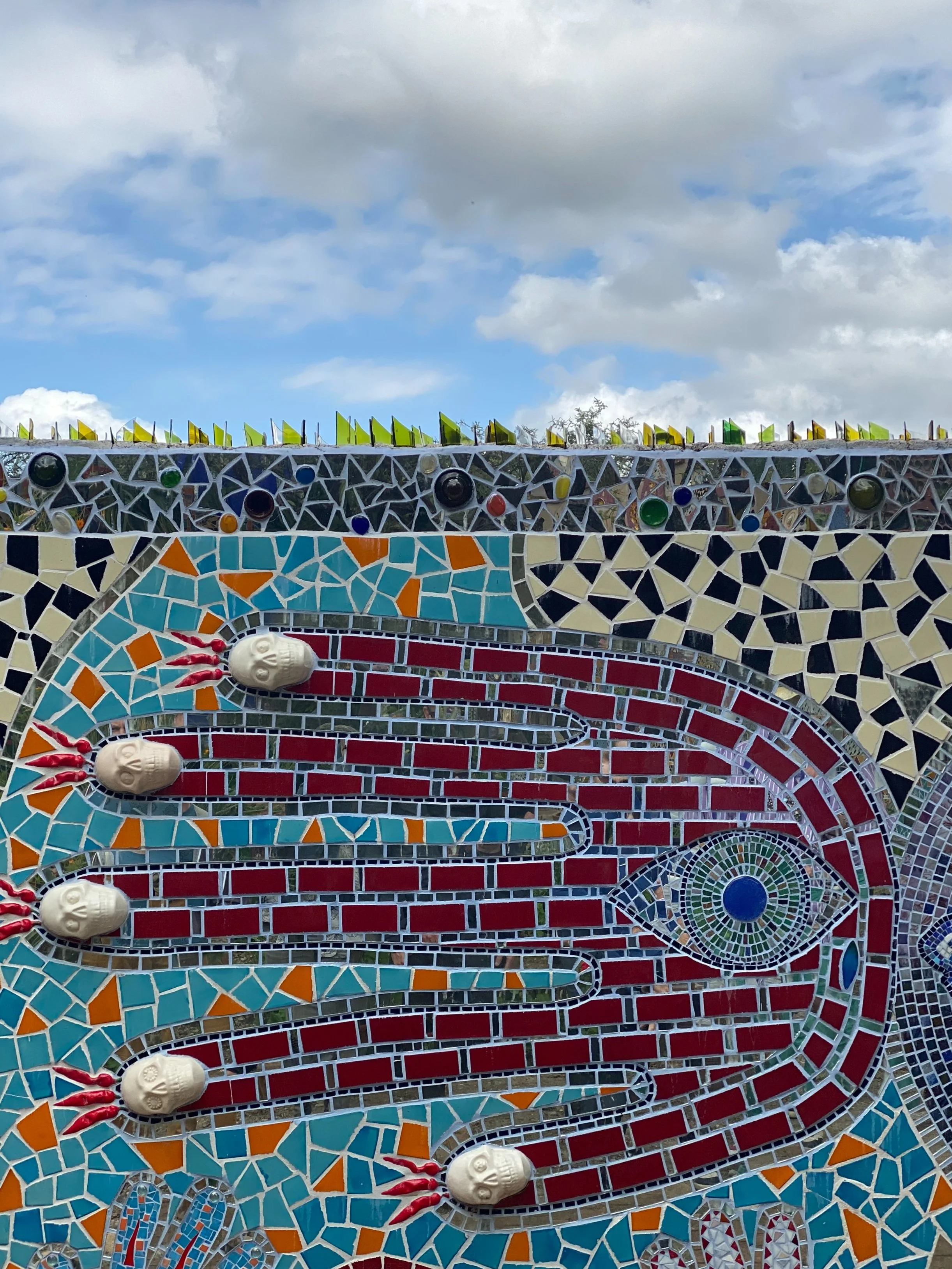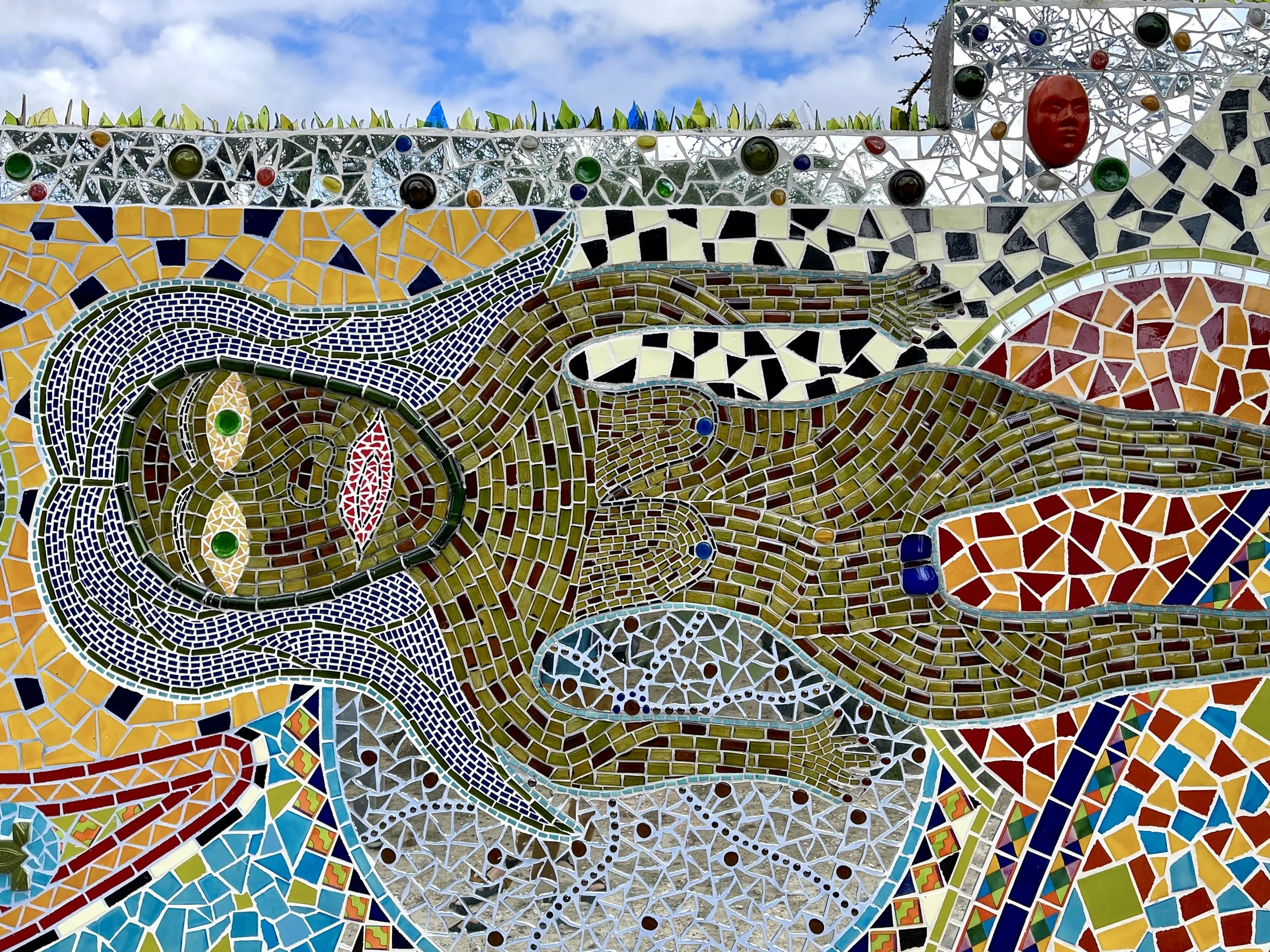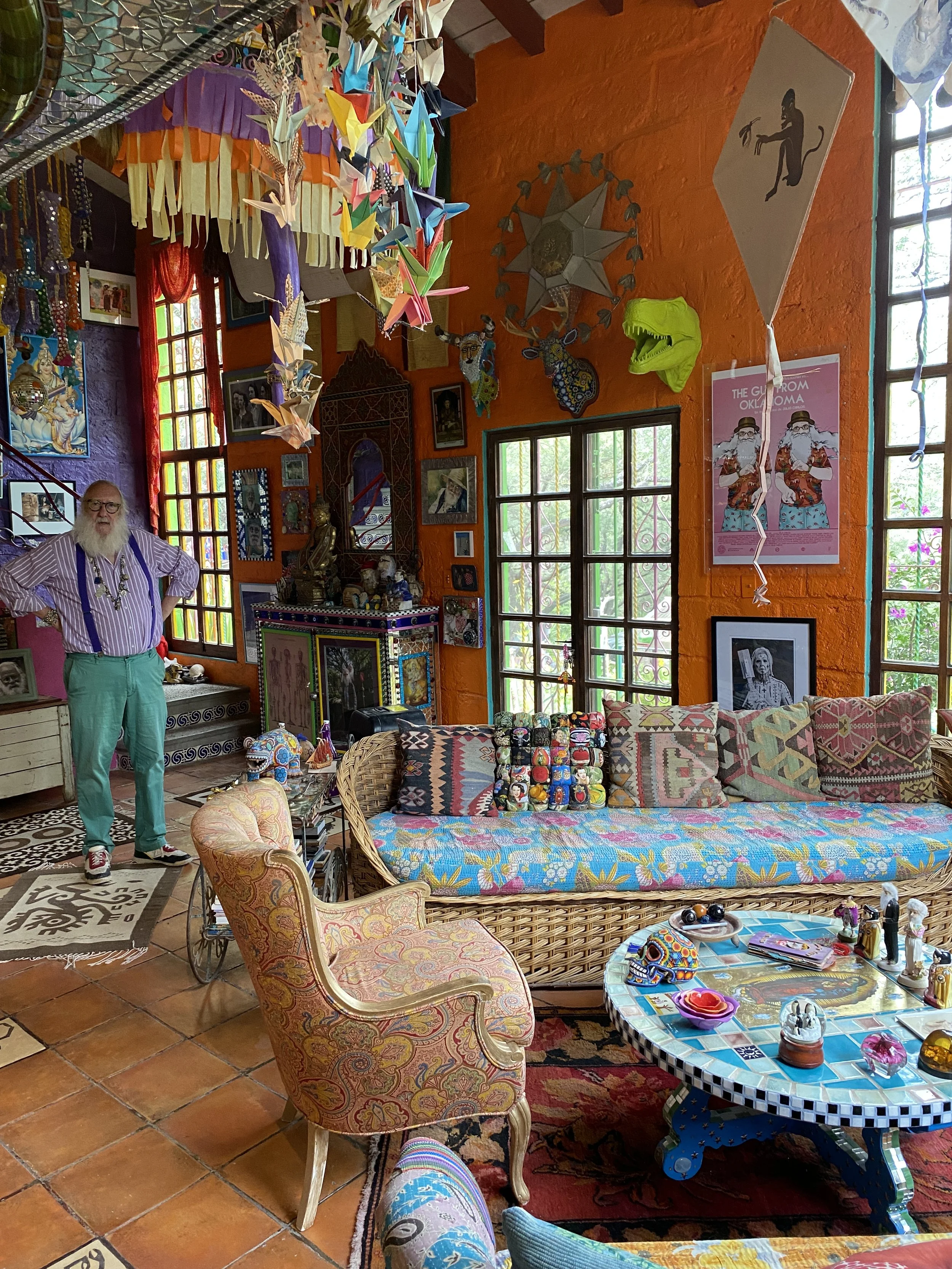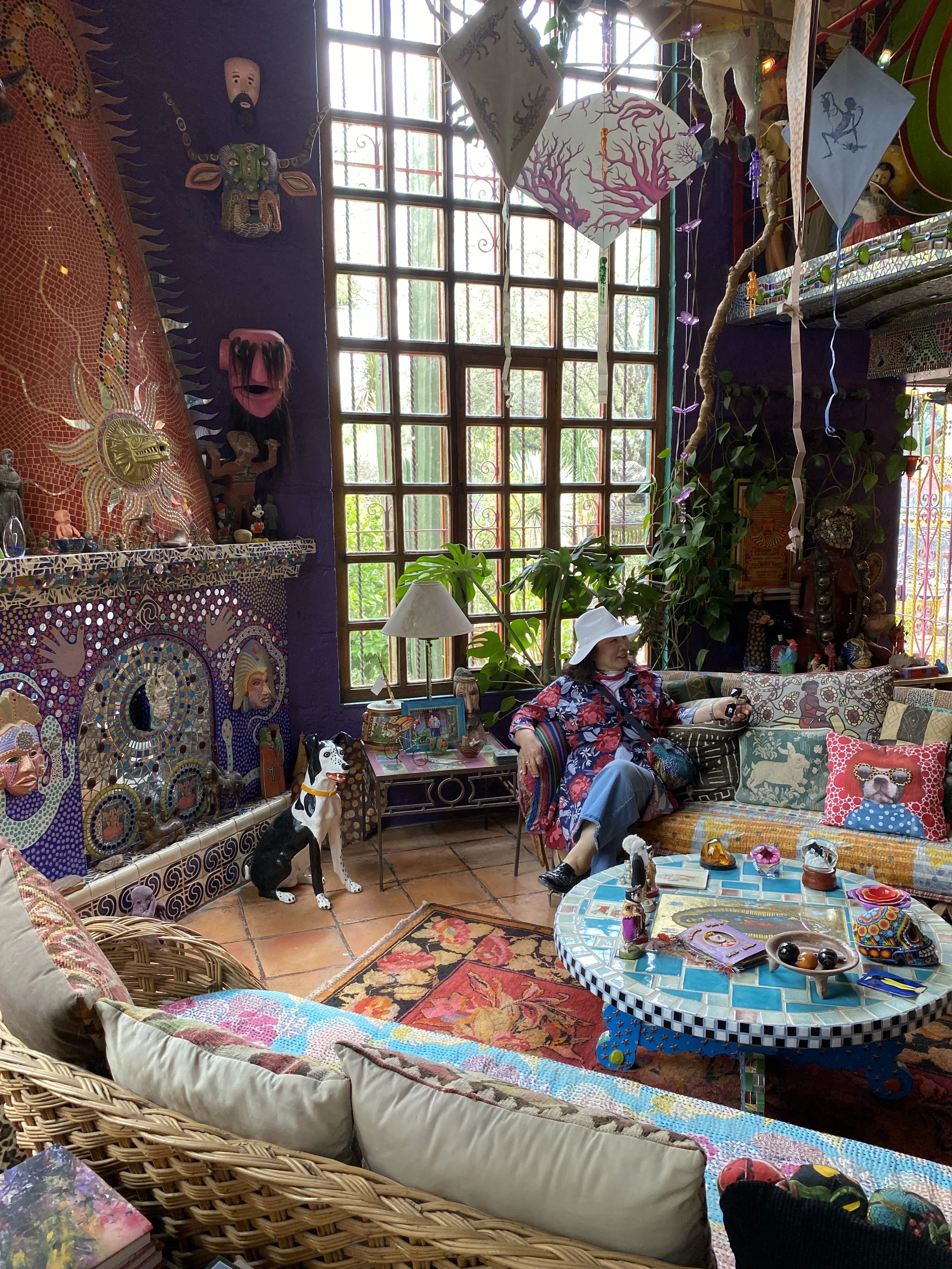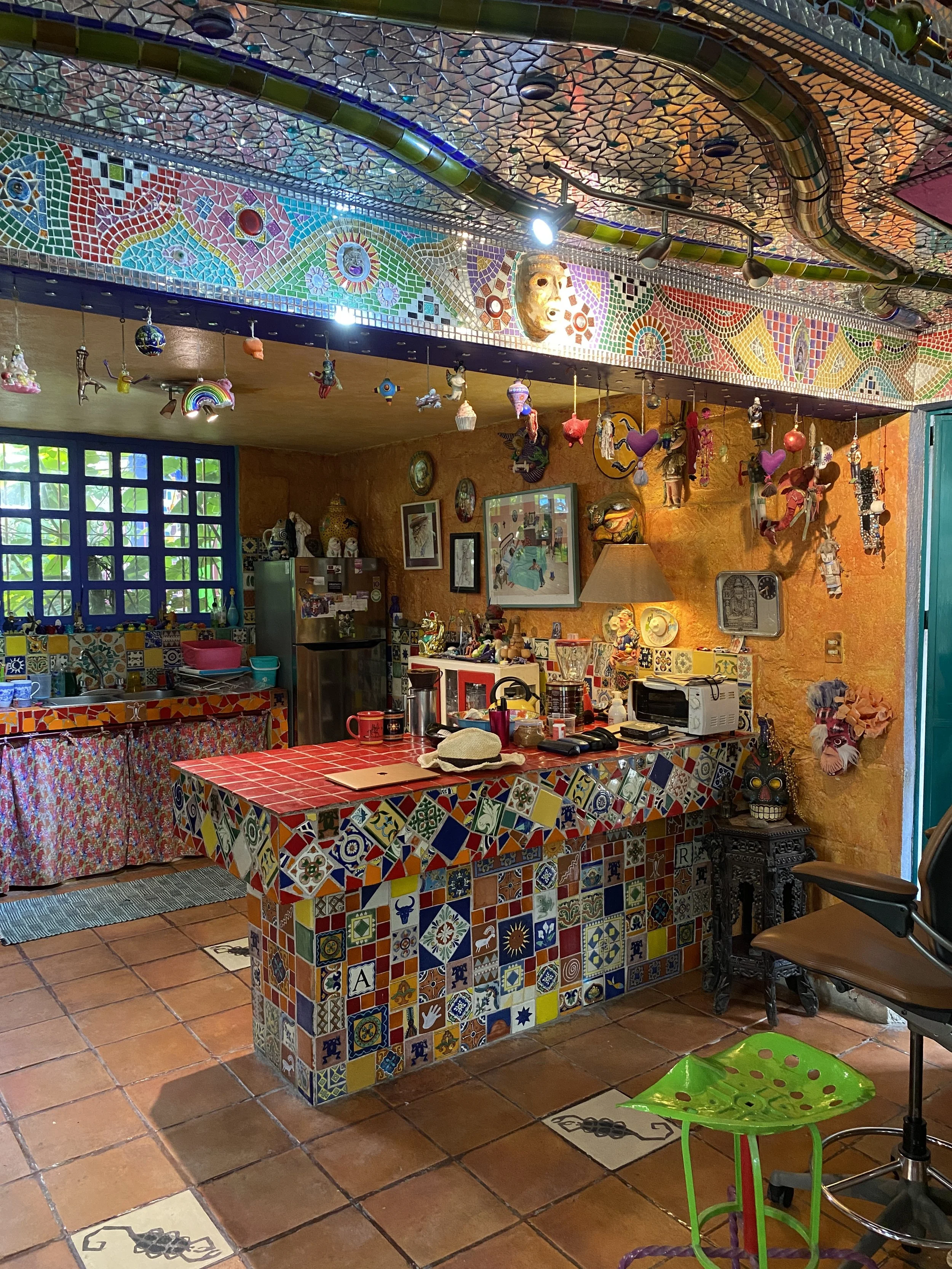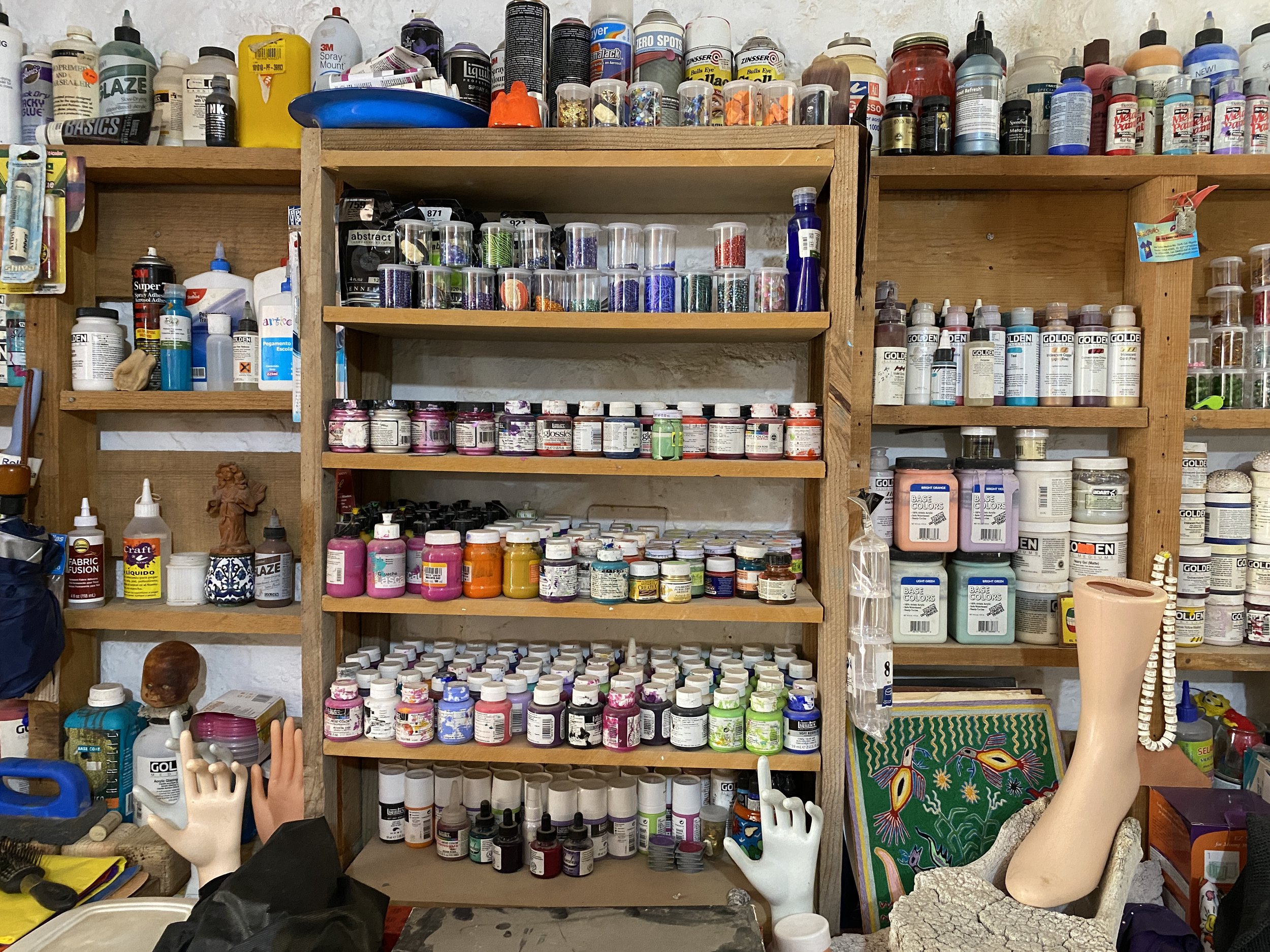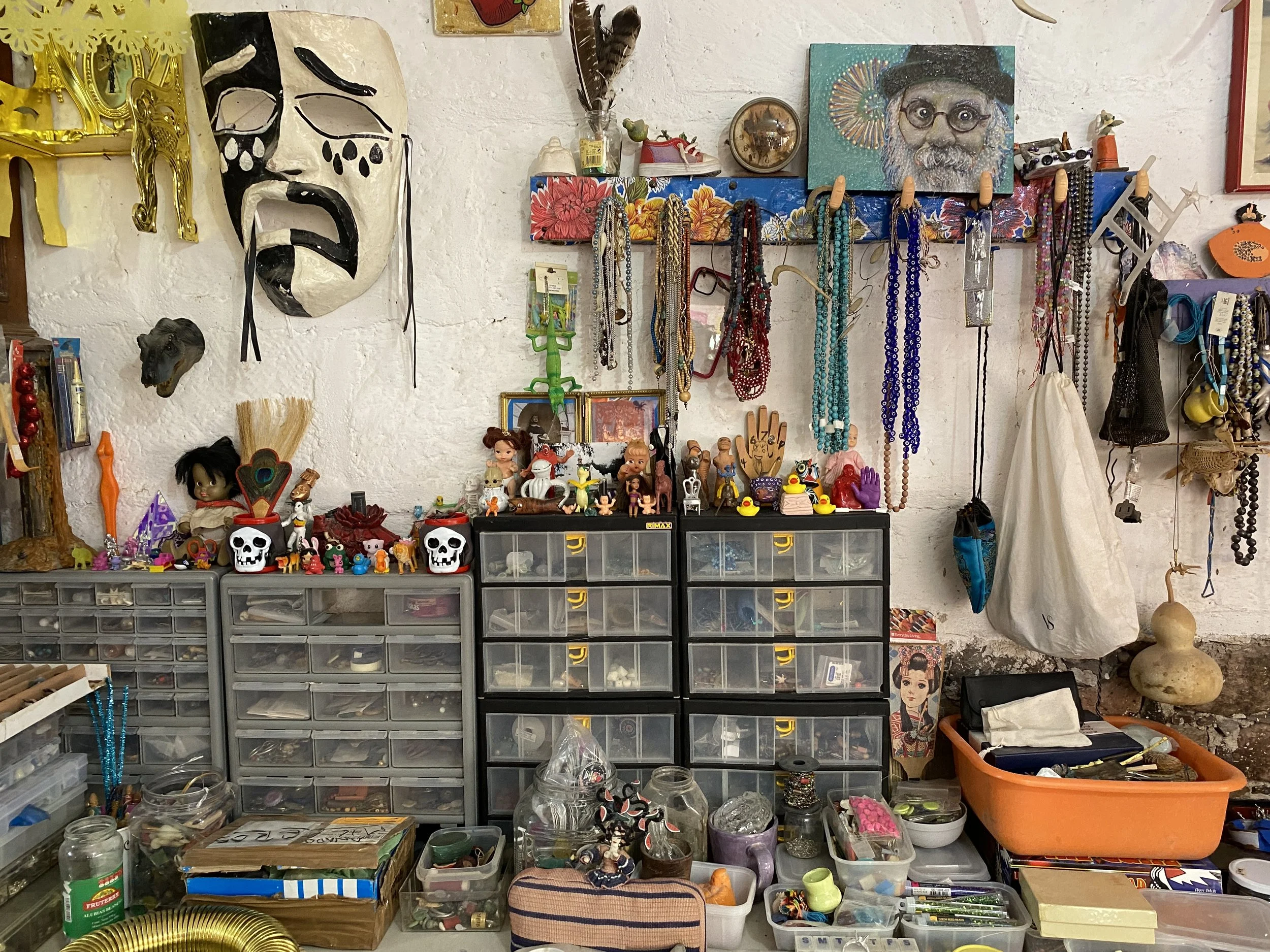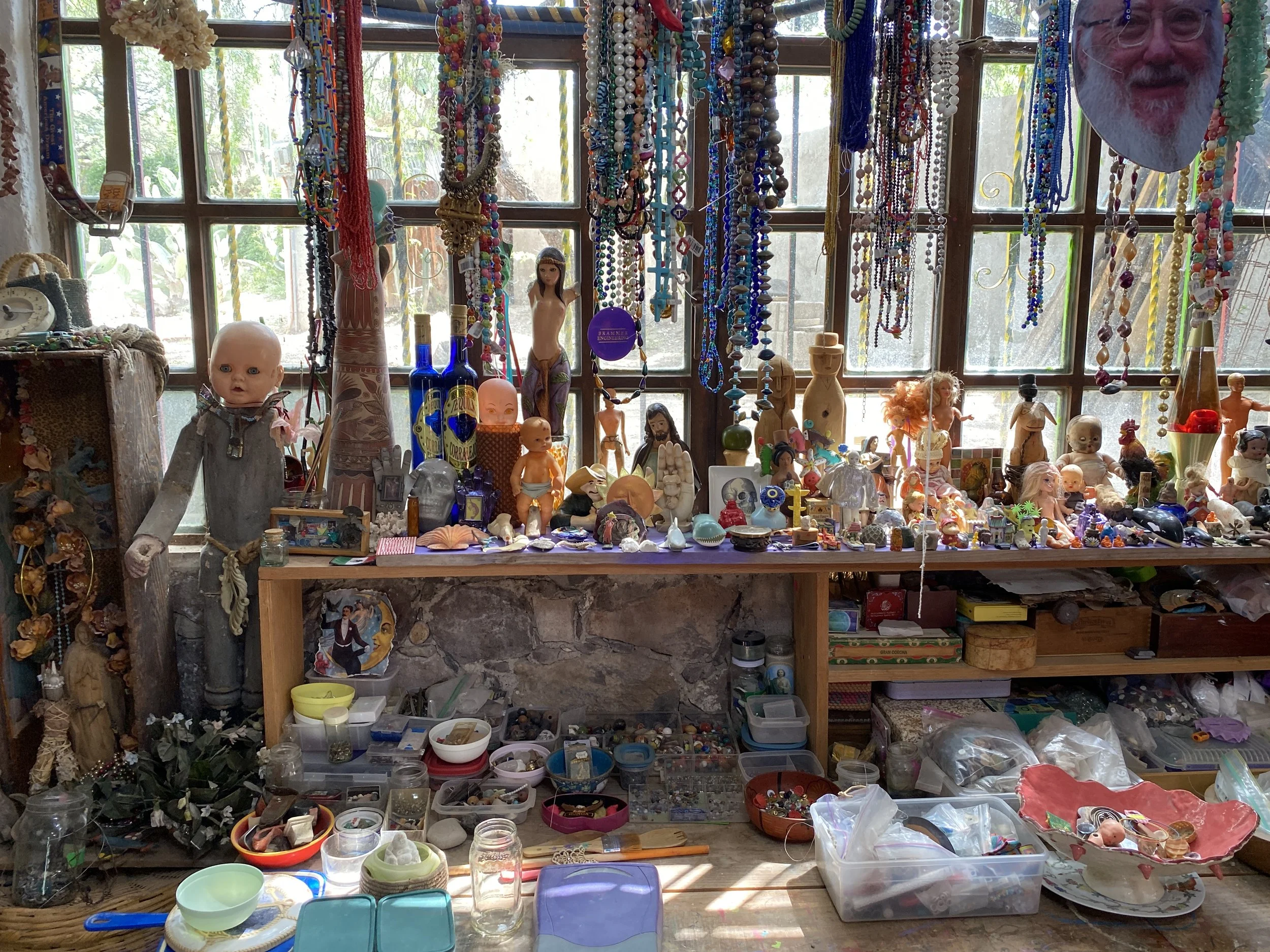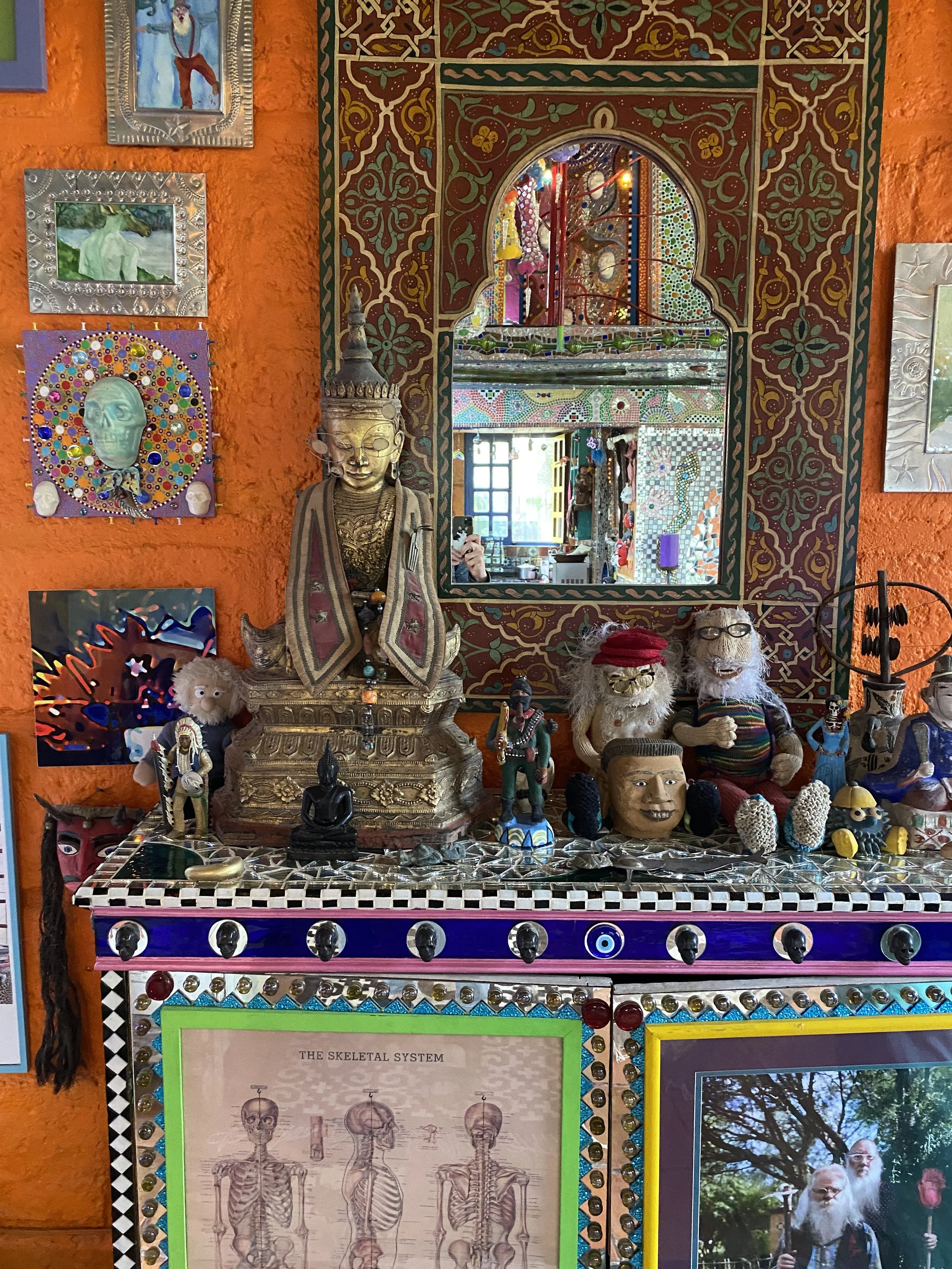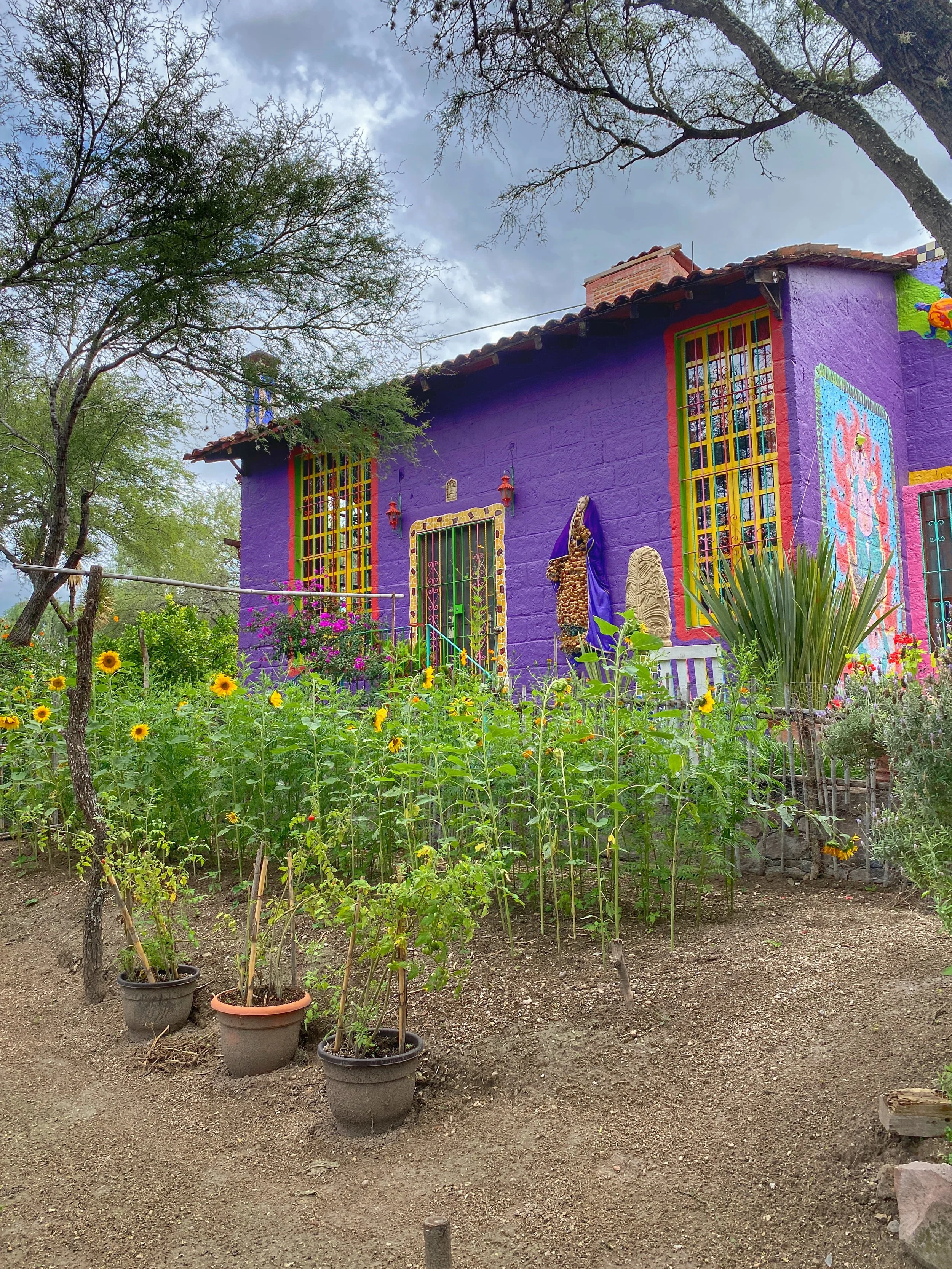This roadside oddity is a neighborhood haunt worthy of a detour. A fun combination of the weird and the macabre, the home includes a secret passage, a tumor that serenades visitors and plenty of other strange delights.
The approach to Trundle Manor has a Bates family home feel to it — and then there’s the scary alien monster and the barrel of nuclear waste.
While Wally and I were looking for things to do in Pittsburgh, he stumbled upon Trundle Manor, a house of oddities and a museum of the bizarre. The quirky roadside attraction has been a fixture of the quiet residential neighborhood of Swissvale since 2009.
Intrigued, Wally sent an email to the proprietors and received a reply from the mysteriously named Mr. ARM, who asked when we’d like to stop by for a tour. “With a name like that we have to go,” Wally said, and decided then and there to schedule our visit.
One of the cute friends you’ll meet in the front yard
My parents, who we were traveling with, are up for anything. So we decided to throw caution to the wind and tell them we had a surprise for them. I asked my dad to set the GPS to 7724 Juniata Street. As we pulled up to the curb, we saw a colorful hand-painted sign at street level that read, “Trundle Manor,” beckoning visitors in (or warning them off).
Not far from the sign was a yellow barrel stenciled with a hazardous waste symbol oozing green goo. When we looked up, we saw a two-story Victorian manor sitting atop a steep hill. The brick house looked a bit ominous, not unlike the Bates family house in Alfred Hitchcock’s movie Psycho.
Mima has a hair-raising and electrifying experience on the front porch.
The manor got its name from one of the couple’s epic Halloween parties. They invented the fictitious Trundle Graves Funeral Home and Taxidermy Service as part of the party’s theme, and the name stuck.
Wally takes a ride on the Loch Ness Monster.
My mom and dad exchanged looks, but they didn’t say anything. They’re used to our strange sensibilities. We got out of the car and walked up the steps leading to the front door. I rang the doorbell, and a moment later, the door was opened by our hostess, Velda von Minx. From the moment we saw her, Wally and I knew she was a kindred spirit.
Our charming hostess, Velda von Minx, spun a nonstop tapestry of twisted tales.
Velda had blunt bangs, long wavy blonde hair, smoky eyes and an infectious laugh. She explained to us that her name is a sort of mashup of Zelda Fitzgerald, wife of author F. Scott Fitzgerald, and B-list actresses. It works.
Her husband’s moniker, Mr. ARM, is an acronym using his initials. Sadly, he was indisposed. He had stayed up late the previous night and was sleeping during our visit. (Outside the manor, the couple are otherwise known as Rachel Rose Rech and Anton Raphael Miriello.)
This is what you can expect at Trundle Manor — strange and creepy items everywhere you look.
Here Comes Trundle
We were ushered into Trundle Manor and followed Velda into the dining room, which was decorated in a Victorian style, while muddled old-timey music crackled in the background.
Mima: We thought the taxidermied bird outside was telling us to go home.
“Oh no!” Velda exclaimed. “But I’m glad you’re here. Welcome to Trundle Manor, our personal collection of weird and dead stuff.”
We looked around. The room was packed with oddities.
Most of the taxidermied creatures at Trundle Manor have some sort of whimsical elements, like this bear, with his cymbals and marching band hat.
“About 15 years ago, we decided to open our house to the public and show off our collection,” Velda continued. “Anton grew up as a weird little kid, always bringing home dead things. His parents are both artists, and they encouraged him and would take him to flea markets, where they collected antiques and Art Deco pieces. He would always find something else to add to his collection.”
“Are you still collecting?” Mima asked.
“Always! It’s hard to stop!” Velda chuckled. “People bring us things all the time, which is nice. It’s like our own personal museum drop-off. If they know you as someone who collects unusual things, they’ll often bring you items that they’ve inherited or that make them uncomfortable. I guess it’s a way for them to get rid of something that they don’t want, but also know that it’ll be appreciated by someone who loves weird stuff. We say it’s great to know people in different professions. Especially if you have friends in the funeral home industry, medical industry, veterinary technicians, people who clean out houses or even theater people — you’ll likely find that they have all sorts of cool things that they’re willing to part with.”
A small glass jar with something ashen inside and the name “H.H. Holmes” written on it, caught my eye. I asked Velda if they were the ashes of H.H. Holmes, the notorious serial killer at the center of Erik Larson’s brilliant book The Devil in the White City.
“It’s grave dirt,” she said with a smile. “From our favorite serial killer — if one needs a favorite serial killer. He was hanged at Moyamensing Prison in South Philadelphia in 1896 and buried in Holy Cross Cemetery in Yeadon, Pennsylvania, but his grave is unmarked. A local historian friend of ours got us some of the dirt from his grave.
“We also have grave dirt from some other famous people,” Velda added. “Like Rod Serling, Patsy Cline and Edgar Allan Poe. On the wall behind you is a jar of Bela Lugosi’s grave dirt. If it’s Dracula-related, we must have some of the earth he was buried in.”
I asked if the three bronze faces on the wall were of Lugosi.
“They’re actually of Boris Karloff, Bela Lugosi and Vincent Price.” Velda replied. “We have Vincent Price’s autograph. My grandmother met him in Dayton, Ohio in 1972 during a summer production of Oliver! We also got to meet John Astin, the actor who played the original Gomez Addams, on The Addams Family,” she added.
Astin is an idol of Miriello’s, and the couple met him about 10 or 11 years ago when they drove out to Baltimore and pretended to be acting students at Johns Hopkins University, where Astin was a director of the theater arts until his retirement in 2021.
Papa, Mima, Duke and Wally are only pretending to be scared. They loved their visit to this kooky home.
Velda eyed Wally’s iPhone with the chubby cat on the back. “I love your case,” she said. “Who’s the cat?”
“That’s our cat, Bowzer,” I replied. “He’s a bit of a chubster, but he’s a sweetheart.”
“Our cat was 25 pounds,” Velda said. “He was the ring bearer at our wedding. We had to weld together a little circus cage to carry him, because you can’t train a cat to walk down the aisle. We gently escorted him down the aisle, and he did a great job.
Wally laughed. “That sounds like a memorable wedding,” he said. “So, are you Mrs. ARM now?”
Velda smiled. “I guess so,” she said. “I always go by Velda von Minx, but of course I’ll take Mrs. ARM! We had a very unique wedding. We got married at the Braddock Carnegie Library, which was the first Carnegie Library in America. There’s a big Victorian-era music hall attached. We wanted a party wedding, so we had 12 bands, five belly dancers, a gourmet waffle buffet and an all-day open bar with an absinthe fountain. It was like a 14-hour event. That’s my wedding gown in the tall case.”
“Did you say an absinthe fountain? With real wormwood?" Papa asked.
“Not enough to make you hallucinate — but enough to make you good and drunk!” Velda chuckled.
The couple’s wedding was an epic event, featuring multiple bands, a belly dancer and an absinthe fountain.
“And here we have our collection of medical oddities," she continued, gesturing to a nearby table. “Embalming equipment, vintage syringes, anal speculums, trepanation tools and a whole platter of gynecological tools that came in a box with a handwritten note that said, ‘Sorry, ladies.’ We had to have that.
Sorry, ladies! This tray holds a frightening mix of old-school medical devices once used for gynecological checkups, anal probes and trepanation.
“When we visit antique shops, we make it our mission to find the most upsetting things to buy. Like this embalming machine, used to pump fluid into a cadaver by a mortician. It would take a lot of cleaning, but I could totally see it as a margarita machine.
“Or this dental X-ray machine from the 1920s. It was used in a dentist’s office in Beaver Falls, Pennsylvania, up until the 1990s. There’s a sticker inside that says, ‘CAUTION: Radiation When…’ but the rest of the text has fallen off. Needless to say, we’re not going to plug it in.
“All of our taxidermy is real. We don’t hunt or kill anything ourselves. We prefer the very old, kind of hungover-looking ones.”
“I love that one!” I said, pointing to a taxidermied fox sitting atop a cabinet wearing a tiny tiara and a pink ribbon.
“The Princess Fox?” Velda asked. “That’s our oldest, from the 1890s. And this is one of our creations: a werewolf-mermaid, or mer-wolf. The top half is our friend’s Rottweiler that died of natural causes and was donated to us. The bottom half is a carp. There are mahi-mahi fins and glass eyes from a blind human.”
Princess Fox, to the right in a tiara, is the couple’s oldest specimen, dating to the 1890s.
Velda directed our attention to a pair of hybrid creatures.
"This is also one of ours,” she said. “These fighting catfish are part cat and part fish, and they’re always fighting. We’re not expert taxidermists. We just have a glass of absinthe and see what happens. We’re influenced by gaffs, which are fake creatures pieced together from real animals. Think P.T. Barnum’s traveling sideshow stuff and the FeeJee Mermaid.”
She regaled us with a great story about one of her and Miriello’s adventures:
“One time, we saw what we thought was a cat that had been hit by a car on the main road. We felt really bad, so we pulled over to see if we could help. It turned out that it was actually a skunk. We had a kill kit in the back of our car, a briefcase with a cleaver and a bunch of Ziploc bags. I was wearing an evening gown, as I often do, squatting and holding open a bag, while Anton chopped off its head with the cleaver. We looked across the street and saw a little 10-year-old boy watching us. We were like, ‘Oh, sorry.’”
Wally asked, “What did you do with that skunk head?”
Velda replied with one eyebrow arched, “It’s sitting on a shelf somewhere in that cabinet.”
Wally asked Velda if she could share any stories of paranormal activity or spooky experiences involving their house.
“Technically, our house should be haunted,” Velda said. “The previous owner, Charlie, committed suicide in 2006, and we’re the first people to live here since. We learned from our neighbors that he didn’t have many people in his life, was a member of Mensa, and a bit of a hoarder. So, we like to think that he’s living vicariously through us.”
Velda continued. “Everyone who comes here is good-natured, whether they’re a friend, family member or guest at one of our parties. There’s always positive energy, and we get to see people’s best days. We like to think that we’re providing him with entertainment, if nothing else. When we go out of town, we ask Charlie to look after the house.”
Wally asked what the rest of the house was like beyond the museum. Velda replied, “There’s a total of four rooms that are open to the public. The upstairs is where we live, and it's more retro rockabilly. There’s a pinball machine, our Lego collection and a ’50s diner booth.”
She continued, “I should also mention that our most priceless item in this room is a tiger pelt from Indonesia. It was donated to us by a man who was cleaning out his mother’s home after she passed away. He told us that the pelt came from a small village in Indonesia where his father was born. Sometime in the 1950s, a young Sumatran tiger was spotted lurking near a densely populated residential area. Concerned that the tiger might attack or kill their children, the father shot it and had its pelt made into a rug.”
A Sumatran tiger that was killed in the 1950s and made into a rug was donated to Trundle Manor, and became their most priceless part of the collection.
So how did Trundle Manor come to be?
“What started out as a party space for friends and family, photo shoots, art shows, movie screenings and burlesque shows has turned into a roadside attraction. We now do about a dozen tours a week.”
Behold! Olivia’s Singing Tumor! One of the stars of the collection, this tumor came from their belly dancing friend, who still pops by to visit her erstwhile body part.
The Singing Tumor and Counterfeit Cash
Velda guided us out of the dining room and into the vestibule.
“In our entryway, we have a human reliquary altar.” Typically, a reliquary is a container for religious relics that include the remains of saints, such as bones or pieces of clothing. “Ours contain parts of people that they’re no longer using anymore,” our charming tour guide continued. “We have my husband’s first mustache, in case his face melts off and I need to bandage him up and glue it back on. We also have a jar with a red lid that contains most of what’s left of a human brain. It was a wedding gift from our tattoo artist friend who received it as payment from a medical waste employee instead of cash. The original jar got thrown at him and shattered against a wall and is the reason why it’s incomplete. We also have a jar with a couple of months’ worth of skin flakes from our friend with psoriasis.”
A collection of prosthetic legs, lost to injury or illness, came from a friend who works at a retirement home. One from the 1940s has toes carved into the wooden foot.
Mima picked up some bills. “What’s this?” she asked.
“We make our own money,” Velda explained, “because we loved the idea of having drawers full of cash like the Addams Family. We’re not rich, but we do have our own currency. I’m on the $3 bill, Mr. ARM is on the $13 bill, and our beloved cat, Little Devil, is on the $666 bill.”
Velda removed the covering from an object with a flourish to reveal the crown jewel of their collection. Floating within a custom-made steampunk brass and glass vessel (built by Mr. ARM) was a fist-sized mass. It wouldn’t look out of place among the contraptions of Captain Nemo’s submarine the Nautilus. This curiosity is Olivia’s Singing Tumor, bequeathed to them by their belly dancing friend, who still performs around Pittsburgh.
“This was a benign tumor on her uterus about 15 years ago,” Velda told us. “Hospitals typically don’t allow patients to keep surgical specimens, but Olivia was persistent, and they were able to freeze the tumor and give it to her in a Tupperware container.”
The assemblage sits upon an oak phonograph pedestal, complete with a pair of metal horns to amplify its “singing” — a song whose chorus Velda informed us is, appropriately, “I want my mommy.” Olivia occasionally comes to visit her tumor, Velda added.
Also occupying the space is a bug-eyed, mustachioed 4-foot-tall animatronic Santa Claus wearing wire-rimmed glasses. It’s been remade into a likeness of Mr. ARM. It stands silently in the entryway. “We tinkered with it and re-recorded its voice to announce the collection,” Velda said. “But it malfunctioned after it got rained on and started singing ‘Jingle Bells’ in a rather demonic voice.”
The parlor at Trundle Manor has a bit more room — but don’t worry: It’s still stuffed to the gills with weird shit.
The Freeze-Dried Cat and a Gremlin Named Nigel in the Parlor
The four of us exited the entryway and followed Velda into the parlor, the largest of the rooms at Trundle Manor.
“We can accommodate 12 to 15 people when we screen movies, which we do about once a month,” she told us. There’s a pull-down screen and a projector mounted to the ceiling. A couple of Velda’s favorites flicks include pre-code Hollywood horror movies such as Frankenstein (1931) and Mystery of the Wax Museum (1933).
A portrait of Velda von Minx and Mr. ARM in the style of holy icons holds a pride of place on one of the walls. When I asked Velda about it, she told us that Anton’s parents are both artists who specialize in saint iconography painting.
“They’re not religious people,” Velda said. “But they’ve been painting saint icons since the 1970s. His dad paints the bodies and backgrounds, while his mom does the faces and hands.”
Velda added that the portrait was a wedding gift from her in-laws.
The painting of the couple was religious icons was done by Mr. ARM’s parents as a wedding gift.
I don’t think any of us were prepared for what Velda told us next about their dearly departed black cat, Little Devil. “We had him freeze-dried and preserved, and placed him in a special glass box with a lid that unlocks so we can still reach in and pet him. We bought him a tiny top hat at the oldest hat shop in the world in London, where the royal family has had custom hats made for over 300 years. I’m surprised they let us through the front door!”
This handsome fellow is Little Devil, the couple’s cat, which has been freeze-dried. Gulp.
The fantastical throne in the parlor is a collaboration between Mr. ARM and his friend The Admiral. It’s their interpretation of the Eldritch Seat of R’lyeh and is an homage to H.P. Lovecraft’s octopus-èsque monster Cthulhu. The back piece was first sculpted in clay and then cast in plastic and treated to look like wood.
“We also built a birdcage with a miniature replica of the parlor inside,” Velda continues. Amazingly, she hadn’t run out of stories yet. “For a time, we thought we might have a gremlin, as we kept losing things in the house, only to find them again in places that neither of us had left them.
“So Mr. ARM and I decided to give our gremlin a place to hang out that we knew he would appreciate. We filled the decoy with real tiny dead specimens, a reading lamp, miniature Poe and Lovecraft books, custom leather furniture, a coffin to sleep in and my personal favorite: a fully stocked bar with bottles of absinthe, moonshine and an 18-year-old scotch. We named him Nigel, and if he is real, he’s living it up!”
One of the birdcages has a miniature setup of the room to keep the home’s gremlin, Nigel, so contented he won’t get up to mischief.
Wally noticed a birdcage themed like the Black Lodge from Twin Peaks and asked about it.
“We adore Twin Peaks,” Velda said, scoring even more points with Wally. “That’s how we spent most of the pandemic, in the parlor watching David Lynch on repeat. There’s even a little cherry pie and miniature cup of coffee. Although I still need to finish making the curtains!”
Pointing to the wall, Velda said, “The moose is our biggest friend. We purchased him at an antique shop in central Pennsylvania. When we brought him home, we didn’t realize that he wouldn’t fit through the front door. We had to saw off his left antler in order to get him inside and reattached it upside down, because that’s how Pierre, the stuffed moose head in The Addams Family, had his antlers.
“Over in the corner,” Velda gestures, “and sitting atop a table near Little Devil is a fawn with a blonde wig that we call the Nudie Cutie. I don’t know why a taxidermist would have wanted a baby deer to look like a sexy pinup girl, but they did. I made her a bikini, and added false eyelashes and a wig.
“The big guy in the corner with the wooden leg and the ribs was something that my husband made when he was 15. His parents told him that he couldn’t have a dog, so he built one. It’s got the head of an alligator, deer bones and chicken wire. He would take it outside and drag it down the road on a leash.”
This creepy creature was Anton’s first creation, when he started playing Doctor Frankenstein at the age of 15.
In the barrister bookcase are two mummified cats. “Our neighbor found one under his porch and thought it would be a great gift for his wife, but when he gave it to her, she was horrified. The other one came from our friend who makes movie props. She found it when she was cleaning out her warehouse. She also gave us a dental chair from the 1930s and a perm machine from the 1920s. We call the perm machine our ‘feminine electric chair.’ The metal clips would attach to wet hair, and electricity would flow through its wires to cook it into being curly. The machine says: 115 volts/15 amps. One amp could electrocute a person.
Velda saw Mr. ARM tooling around town in his hot rods, stalked him on social and got herself invited over. It was love at first taxidermy lesson.
“My other favorite thing in the parlor is the two squirrels getting married,” Velda said with a smile. “They’re part of our love story.”
For years Anton was part of the Drifters Car Club of Pittsburgh, a vintage motorsport club. “I would see him around town with his hot rods and sort of started stalking him on social media. And that’s how we met because I got myself invited over. That first night he said, ‘I’ve got a freezer full of dead squirrels. Do you want to learn taxidermy in my basement?’ To which I replied, ‘Of course!’”
Talk about a meet-cute!
Nothing is as it seems in the Trundle Manor kitchen. Every cabinet opens to reveal a surprising mad scientist take on kitchen appliances.
That’s the Kitchen?!
Our final stop was the laboratory/gift shop/kitchen. The entrance is hidden behind a moveable display case in the dining room. It has all the typical appliances — they’re just concealed by panels, doors, buttons, switches, wheels and blinking lights that transform the room into a mad scientist’s laboratory. There’s even a device with an electric current that Mr. ARM uses to light cigars.
Wish you were here?
Home, Strange Home
To some, Trundle Manor may seem a little disquieting and strange. But to its owners, Mr. ARM and Velda von Minx, it’s a labor of love. Their strange and wonderful collection fills every nook and cranny of the downstairs of their circa-1910 home.
Velda was kind, playful and genuine. Tours take about 45 minutes and are by appointment only. Velda von Minx and Mr. ARM accept donations of cash, booze or oddities in exchange for guided tours.
If you’re planning a trip to Pittsburgh and are fans of oddities, as we are, it’s well worth making a reservation for a jaunt to this fascinating home. You’ll come away with numerous stories that begin, “You won’t believe this…” Obviously, Wally and I loved it, and my parents did, too. –Duke
Trundle Manor’s tagline is: The most unusual tourist trap in the world meets the most bizarre private collection on public display!
And we gotta say, that about sums it up.
Trundle Manor
7724 Juniata Street
Pittsburgh, Pennsylvania 15218
USA

